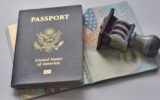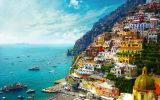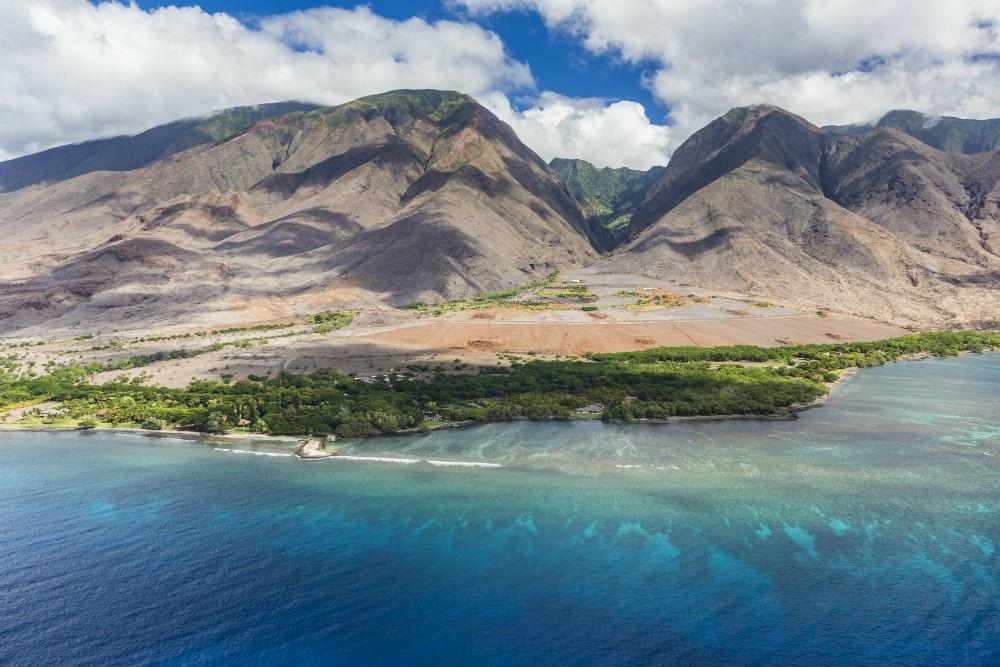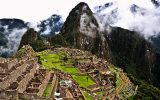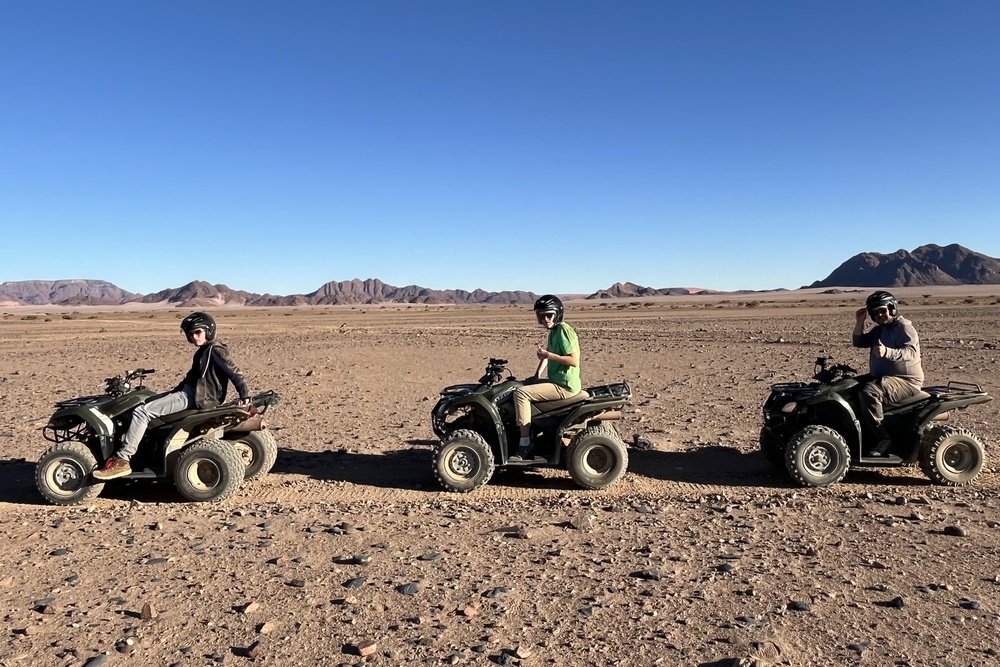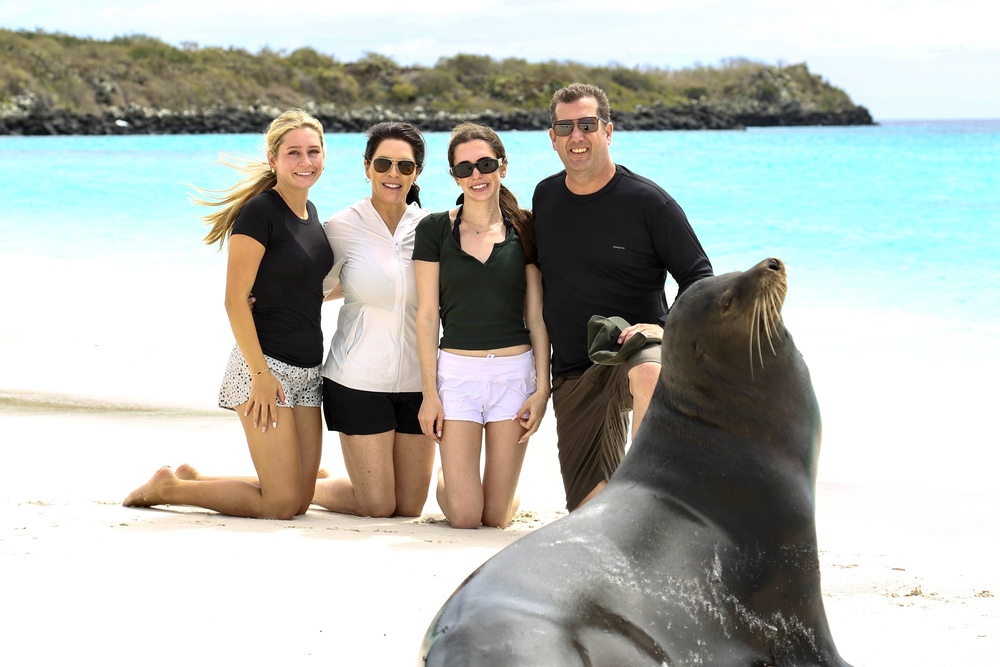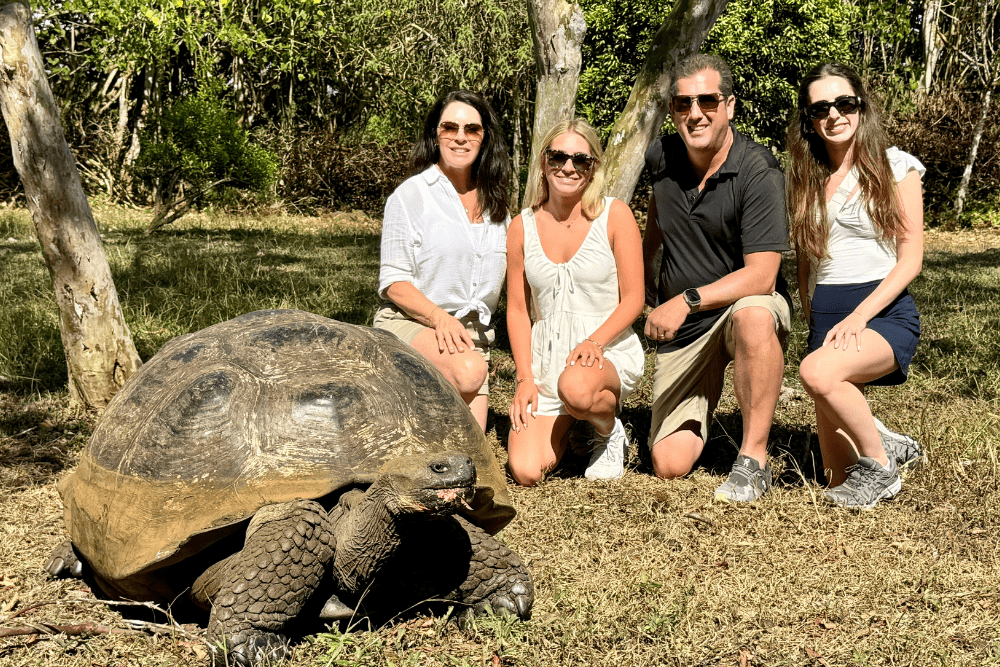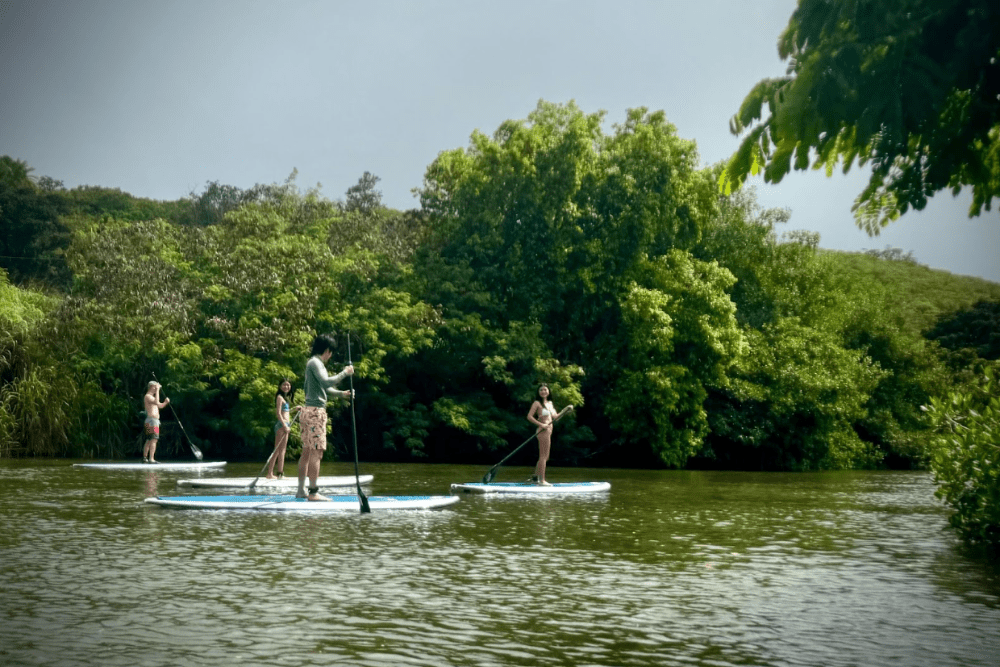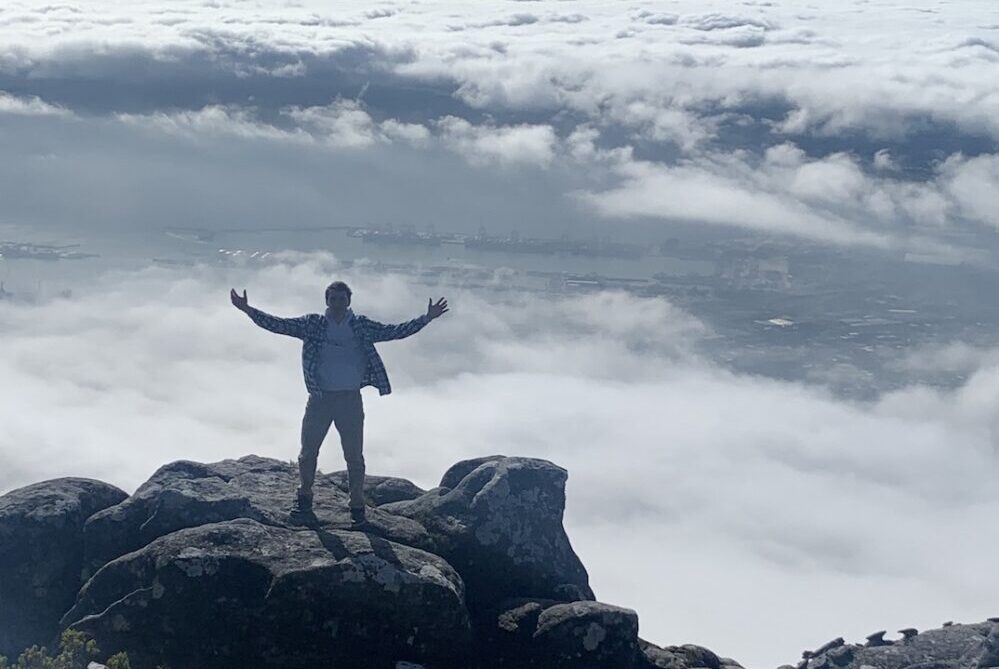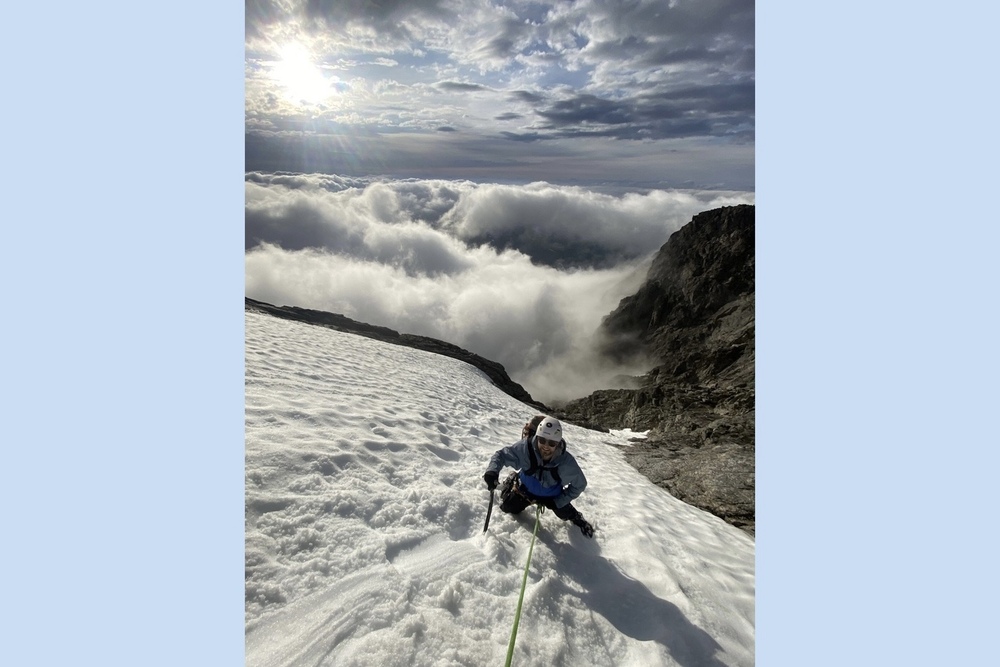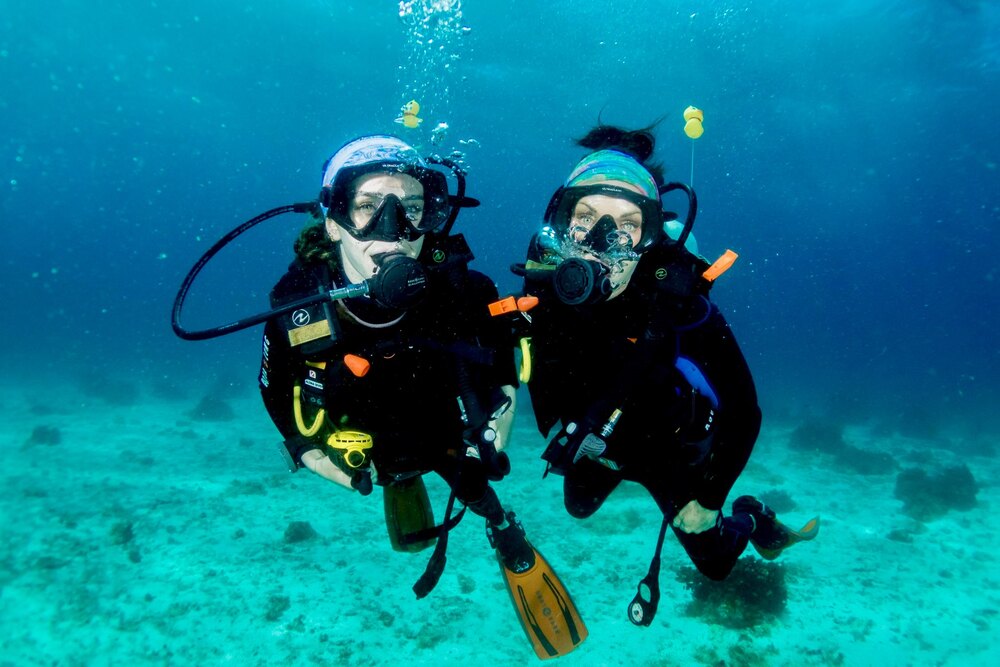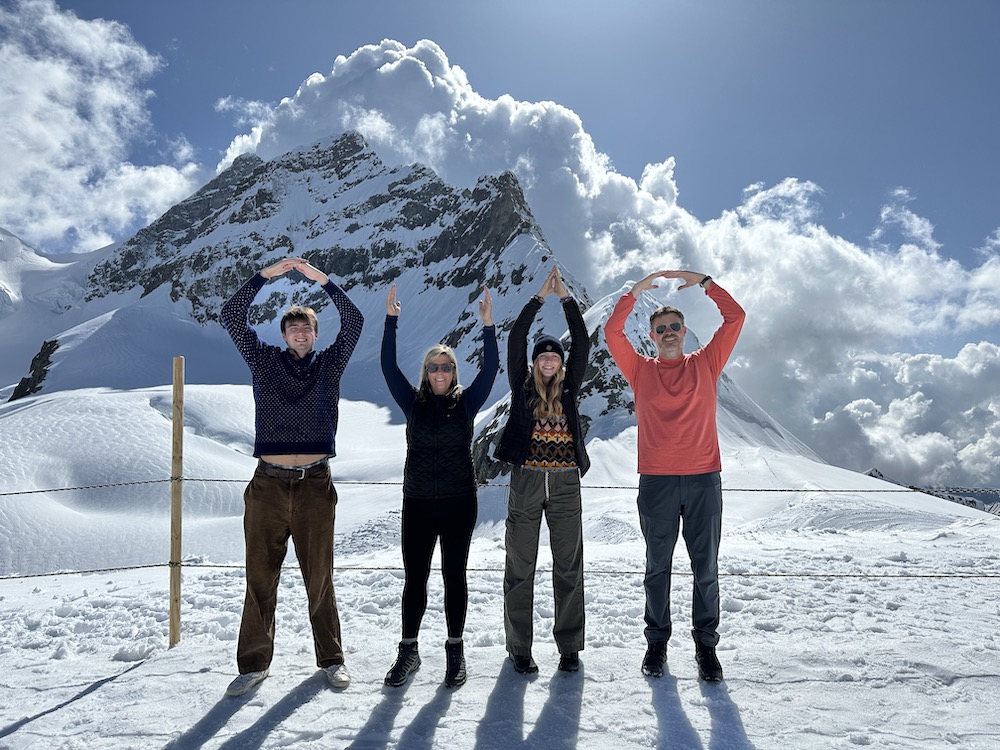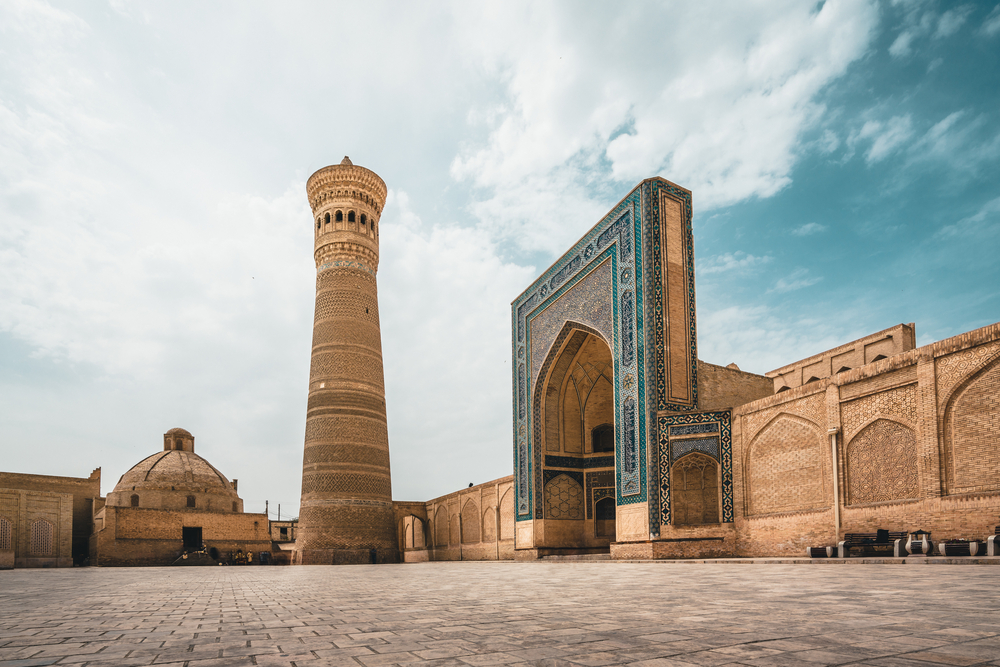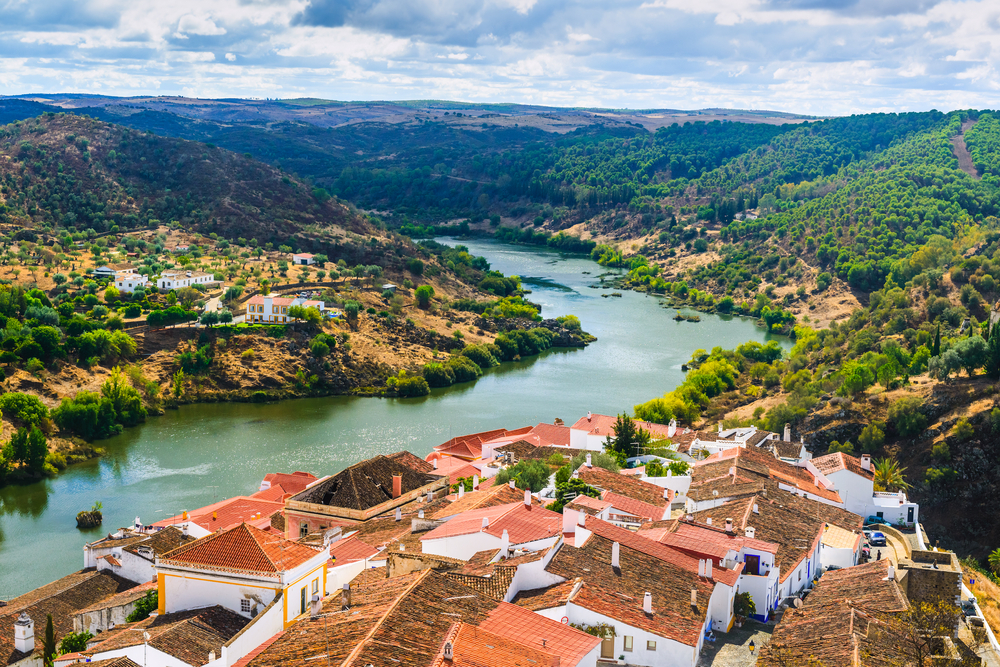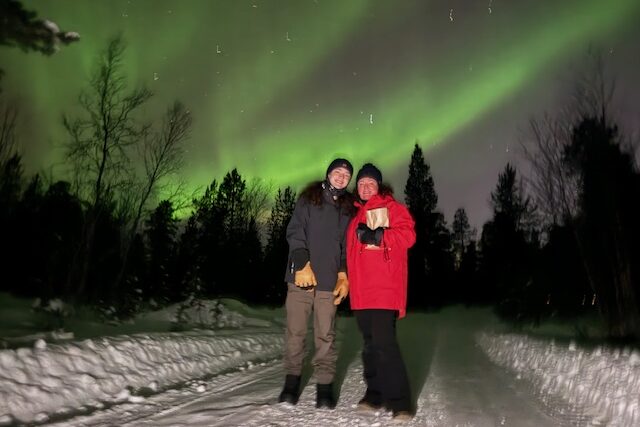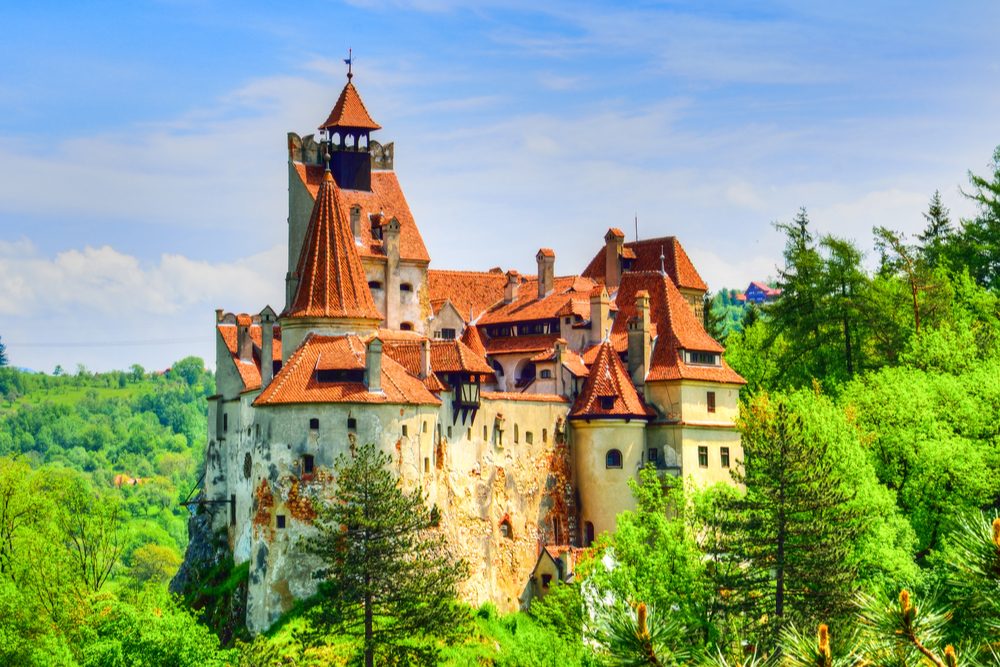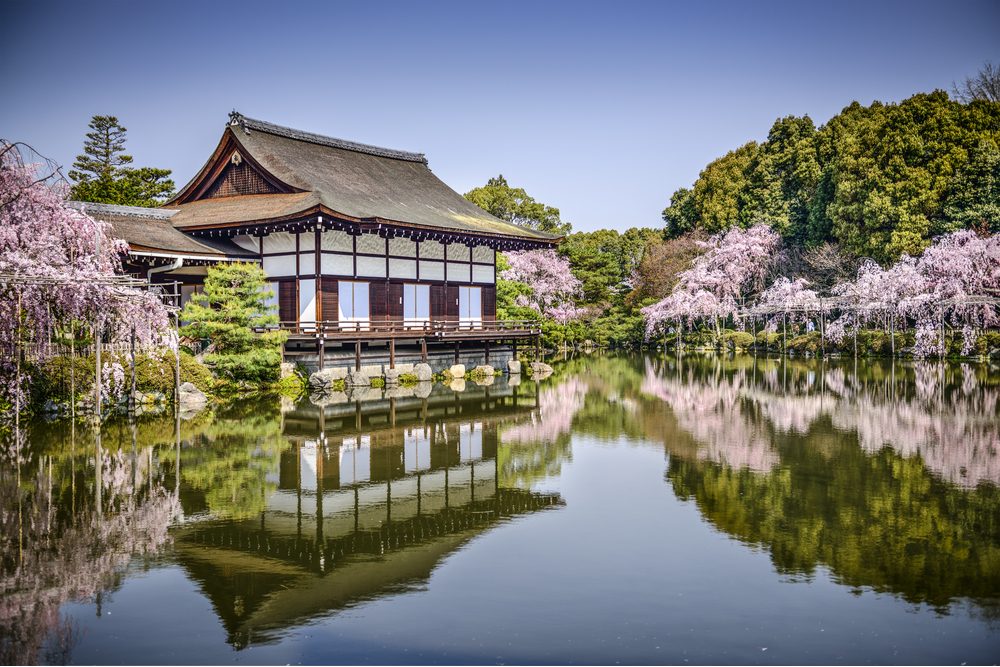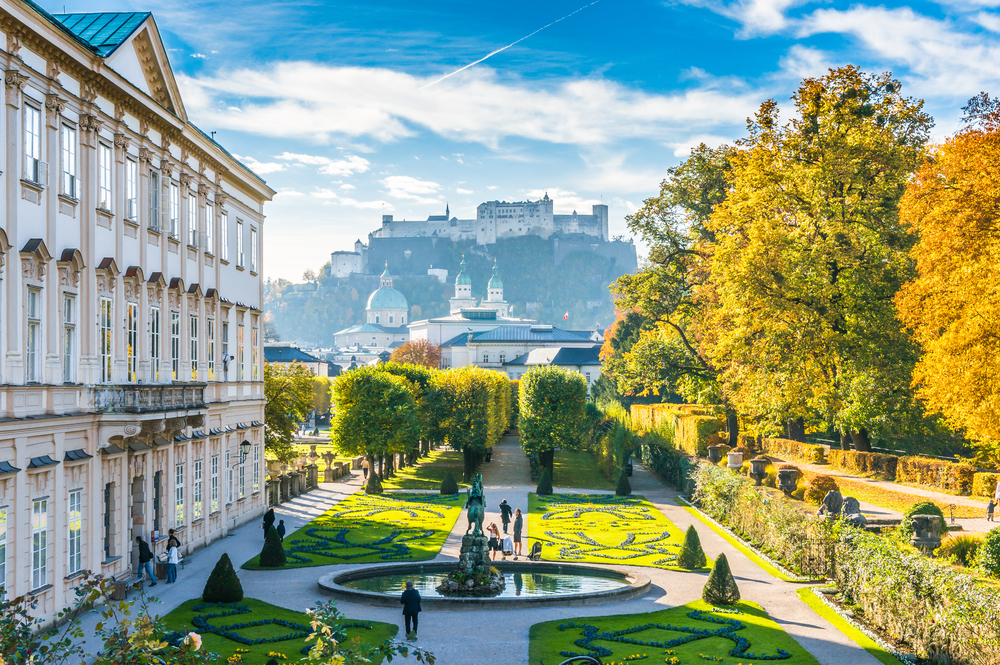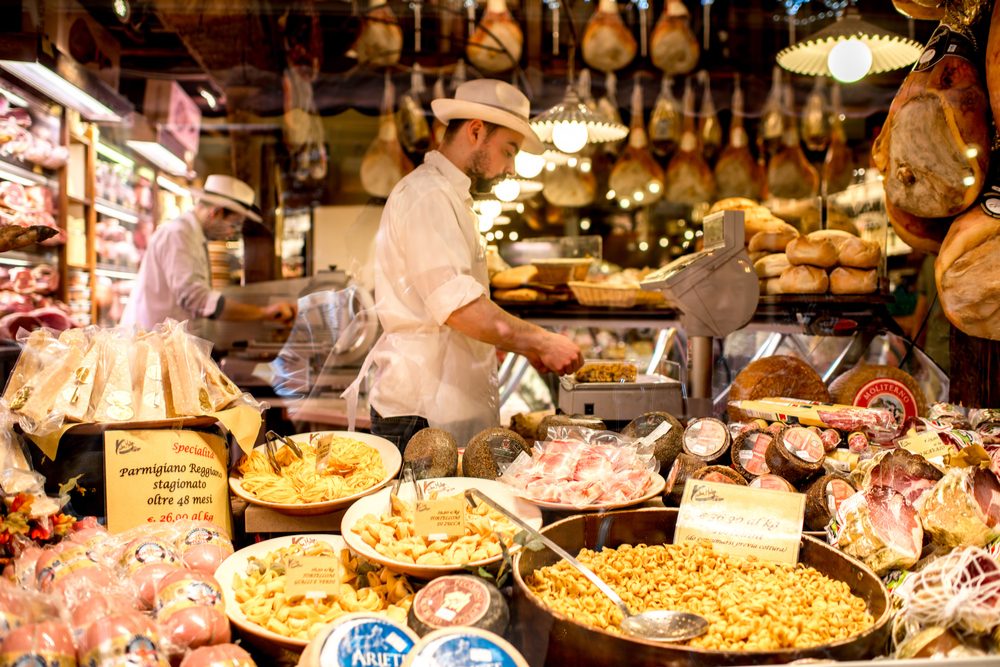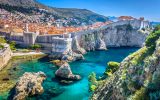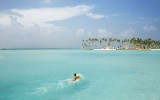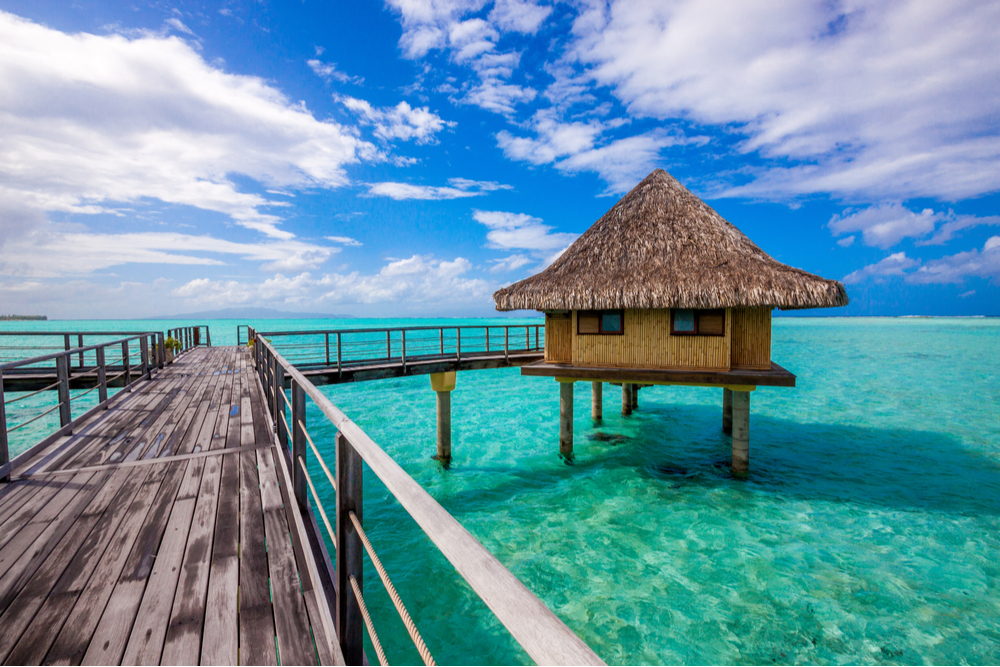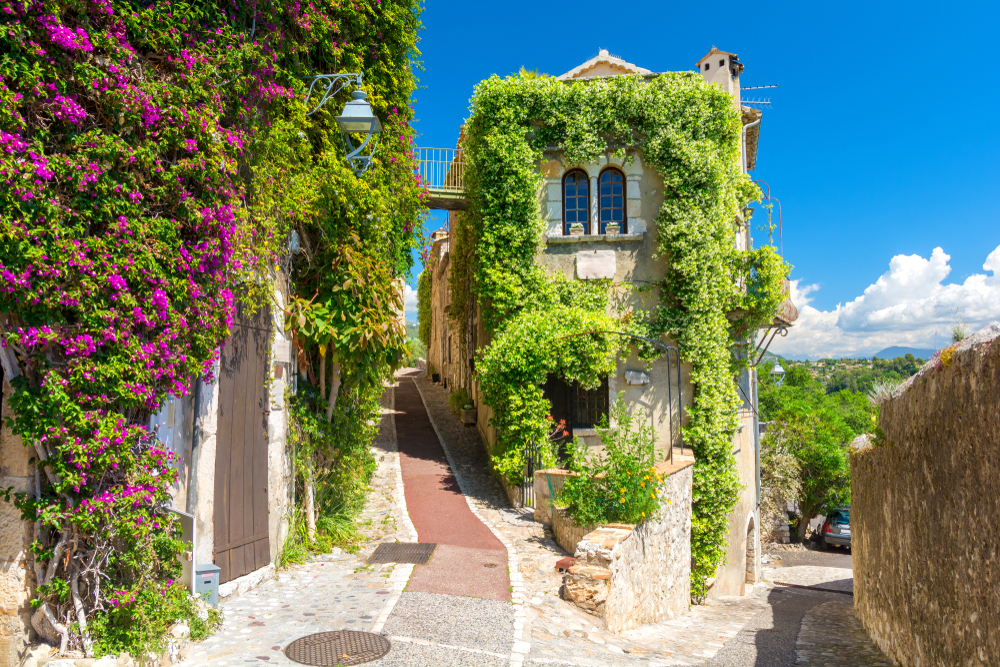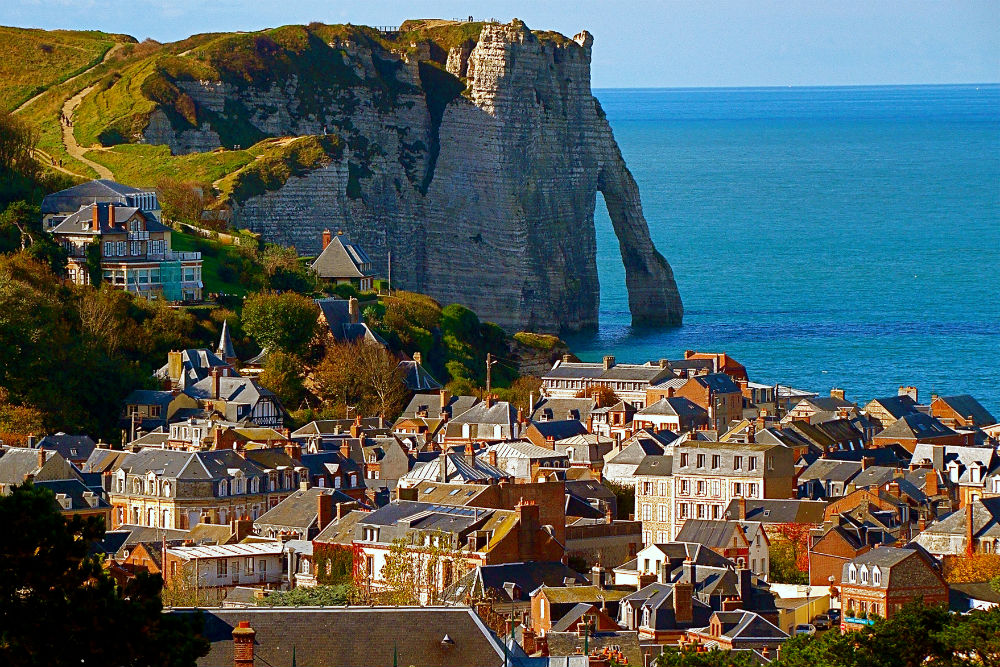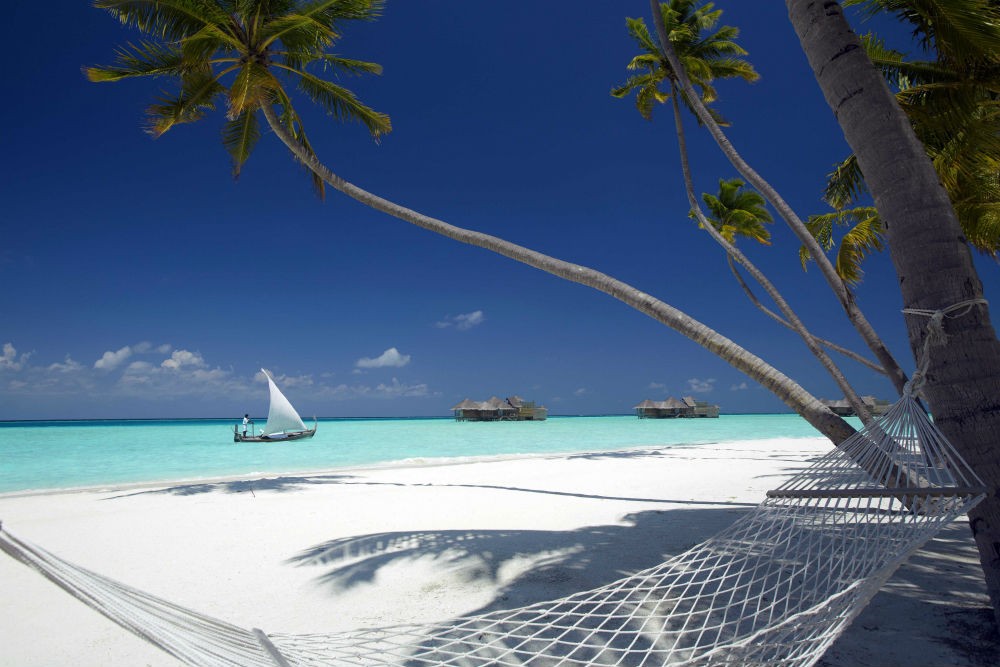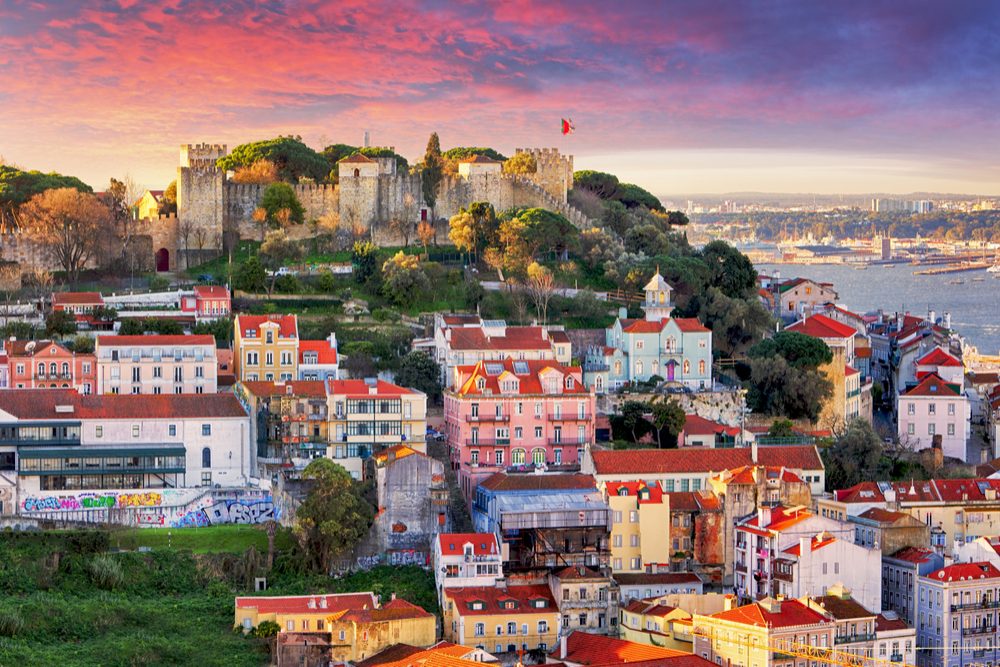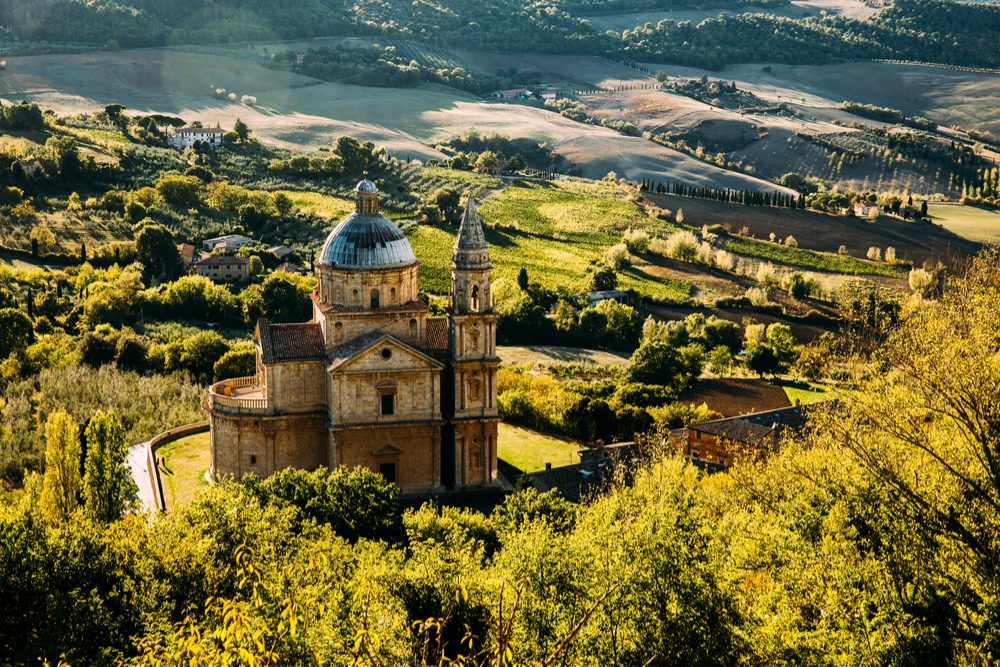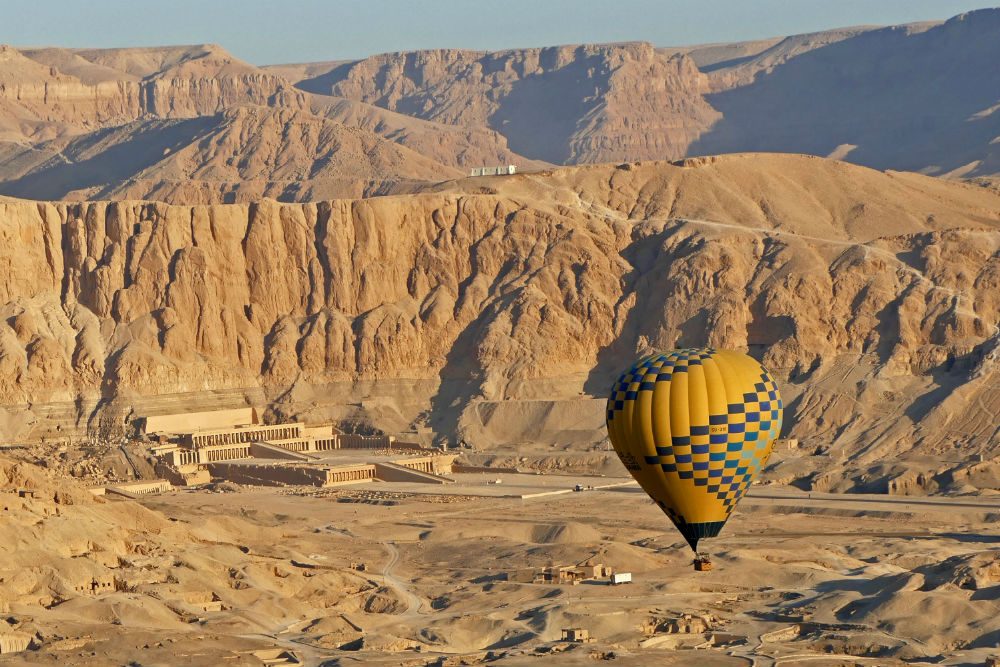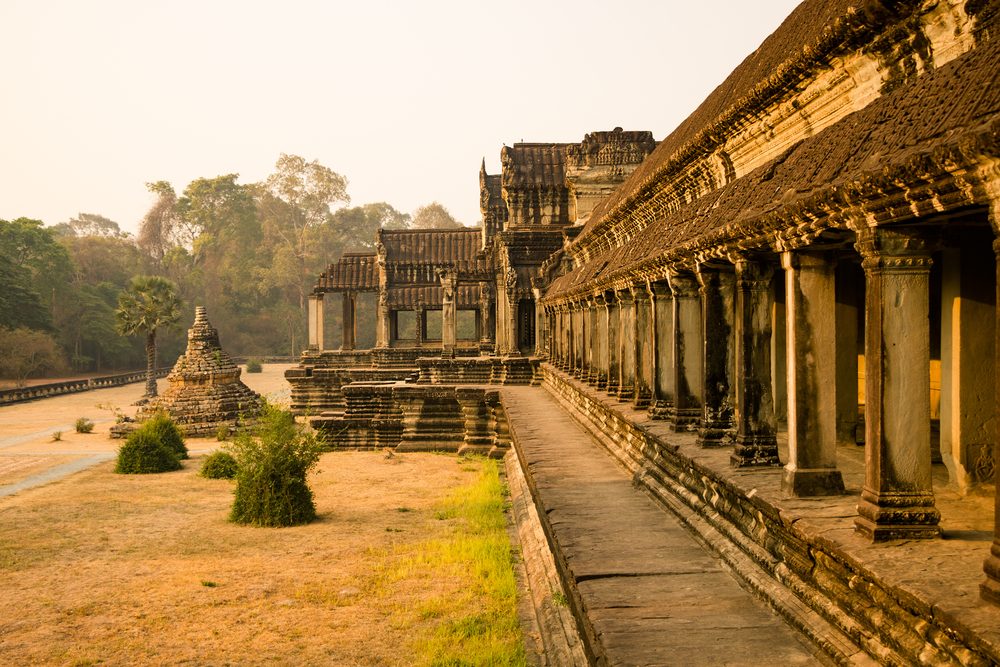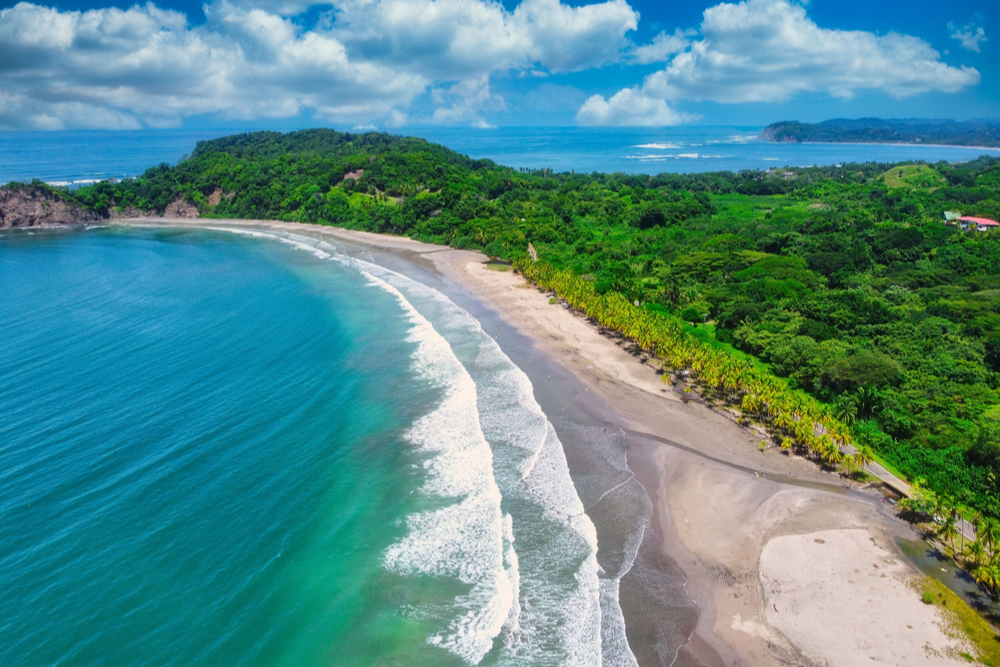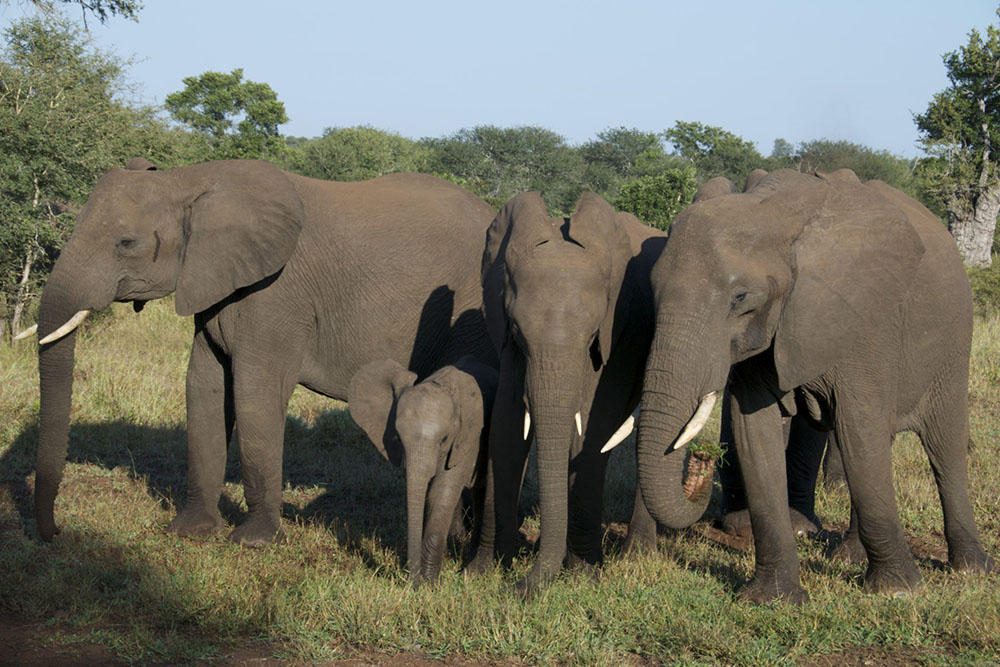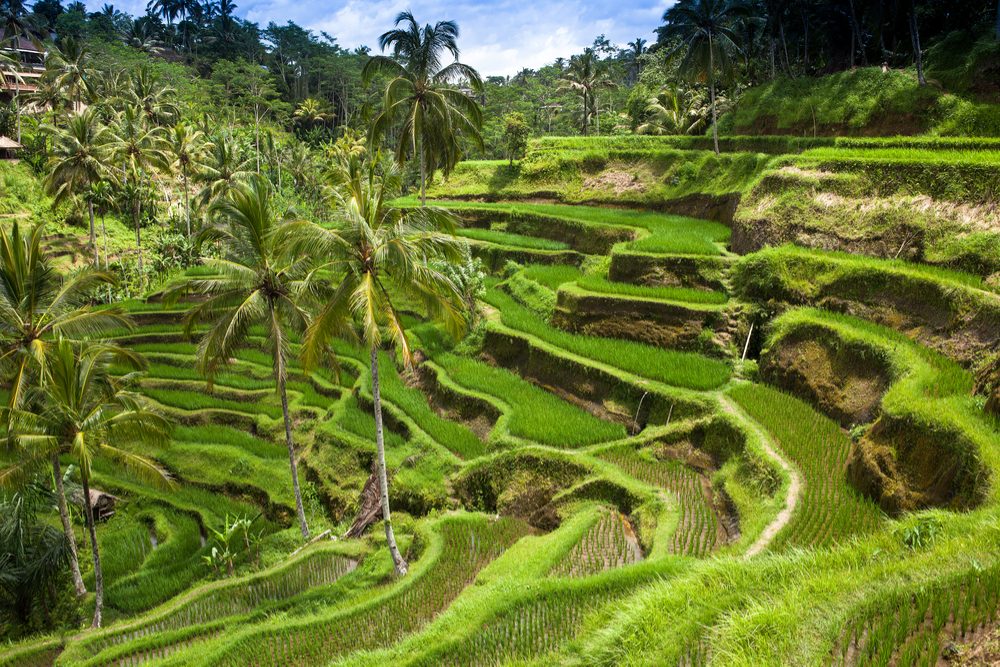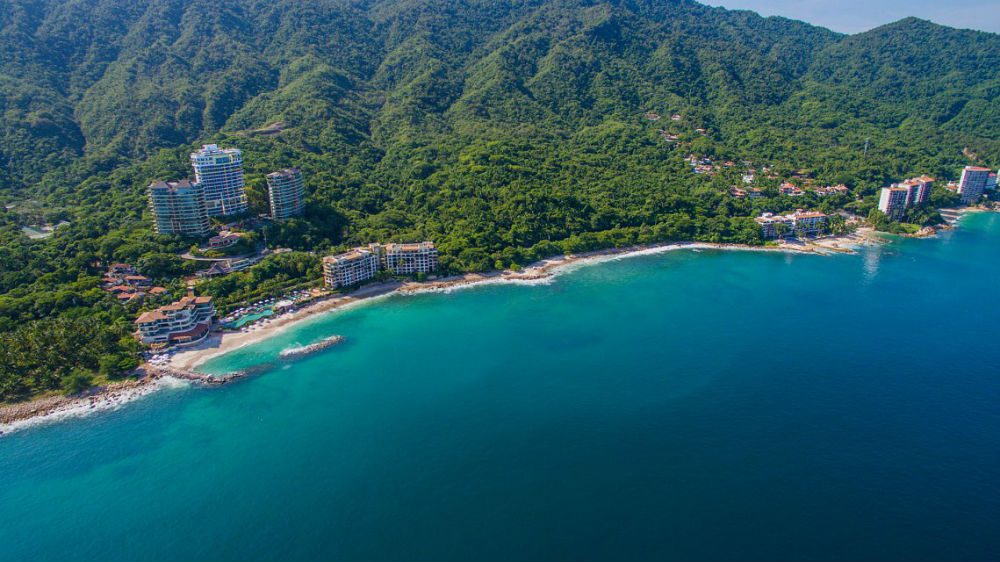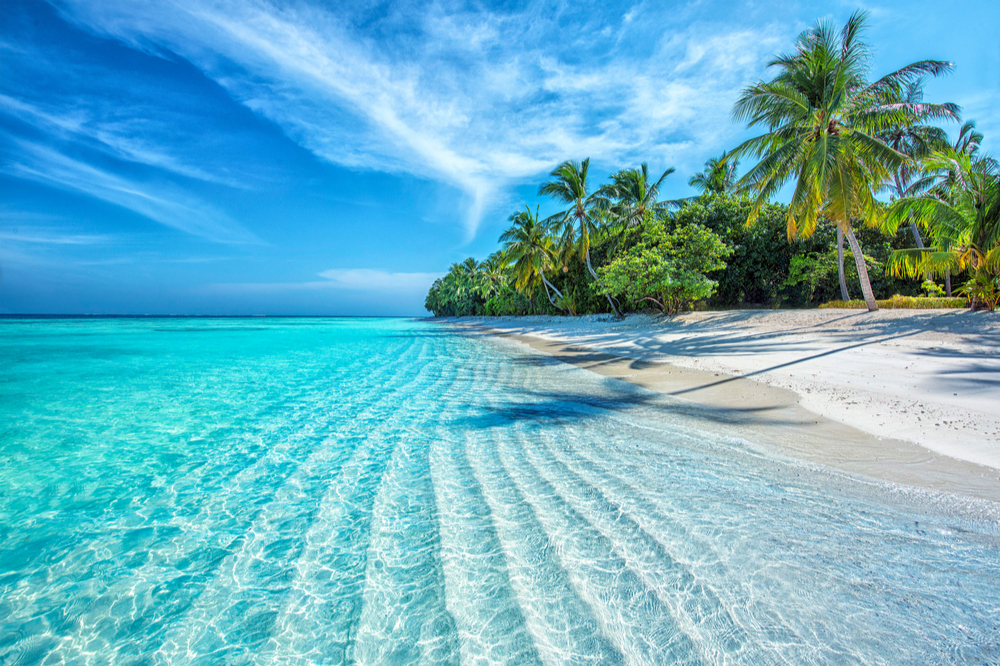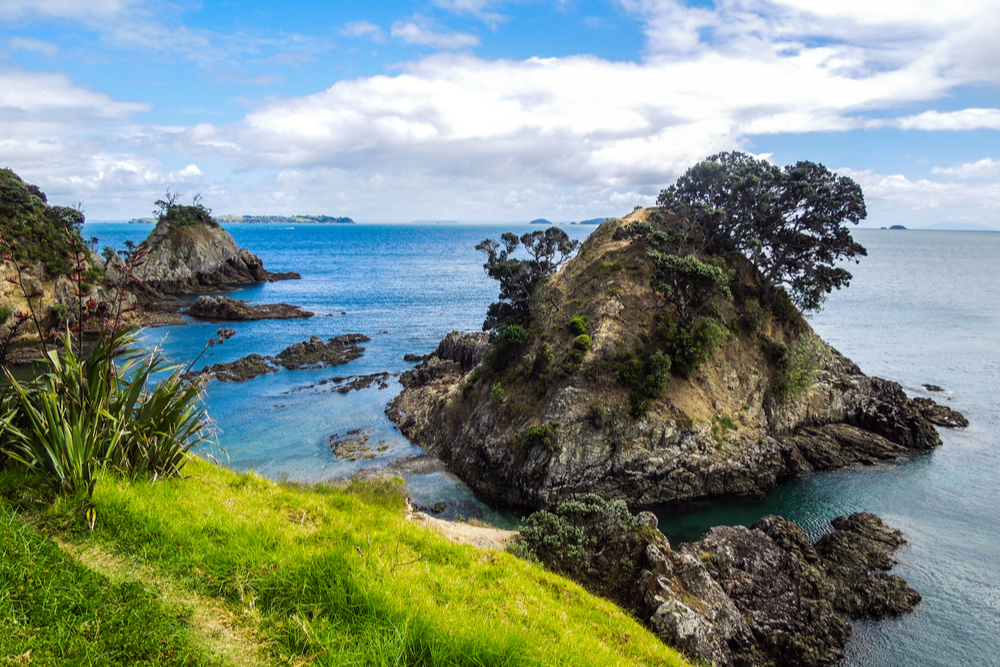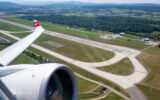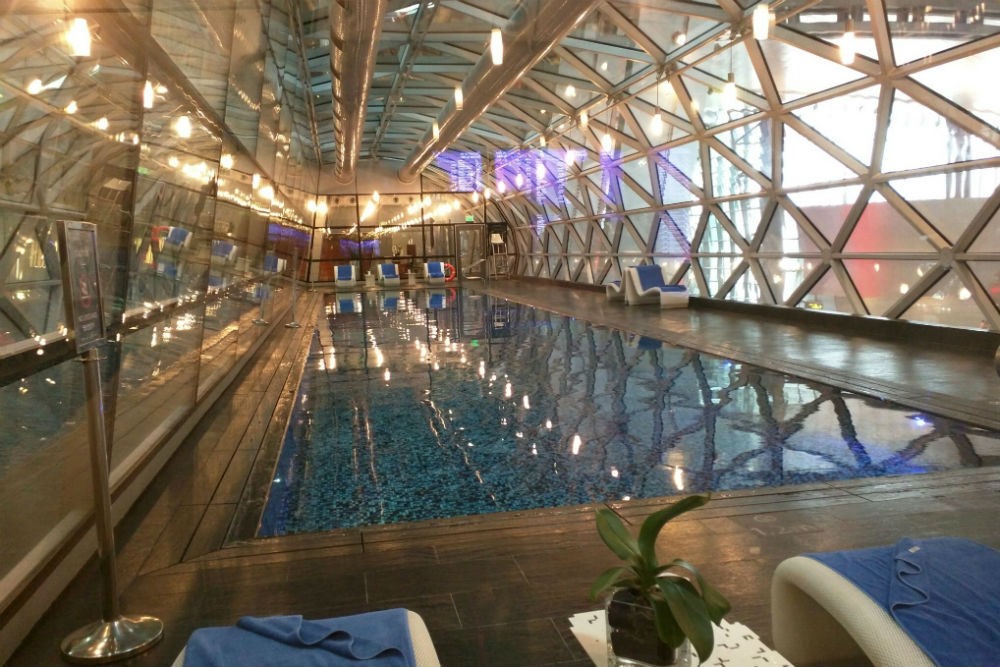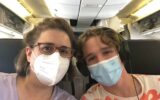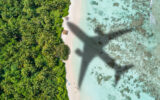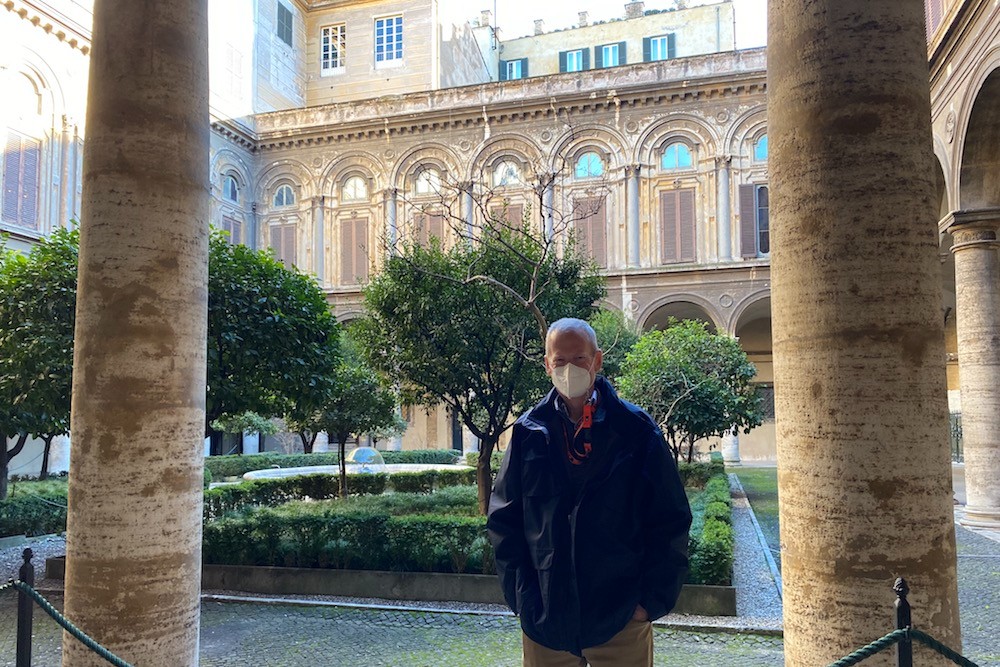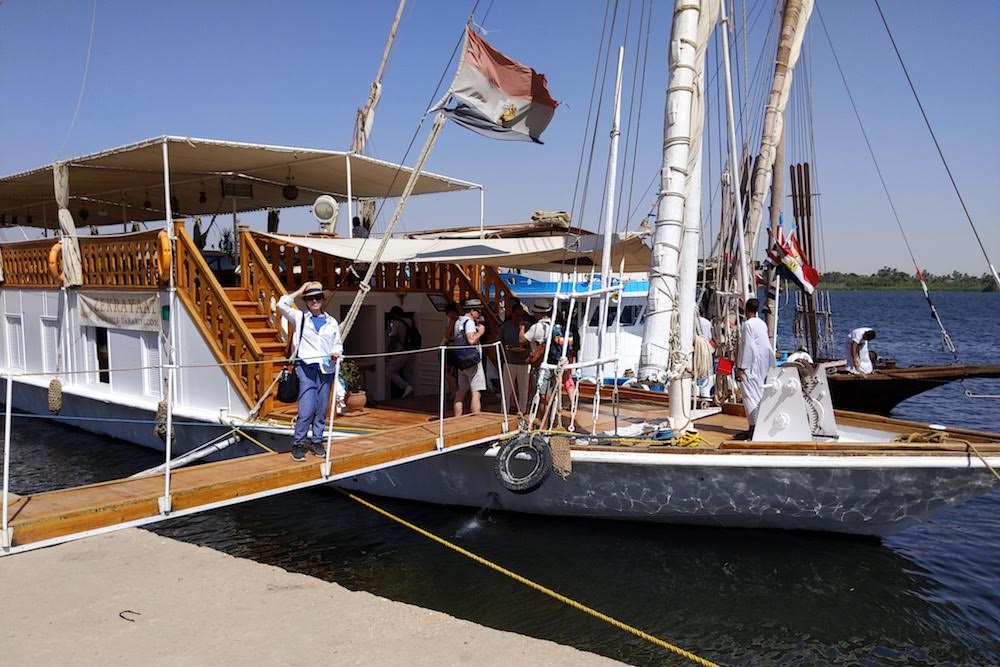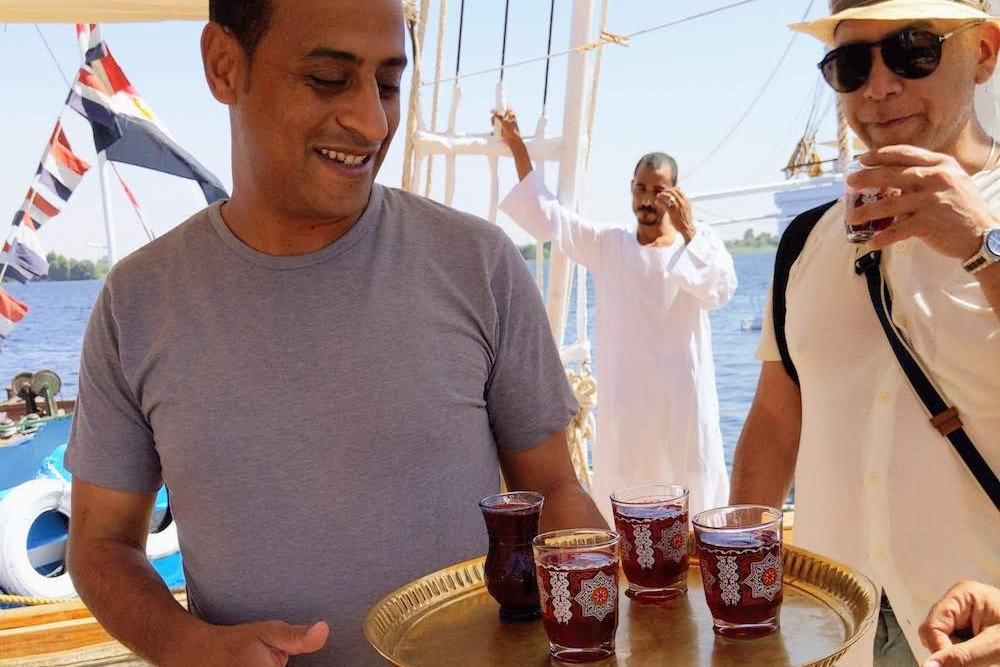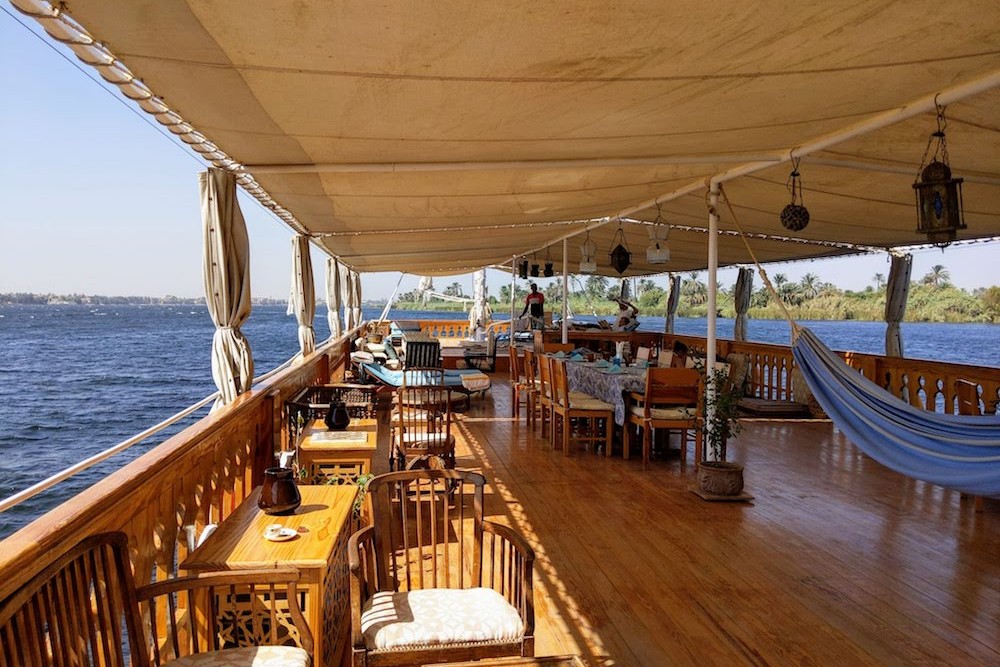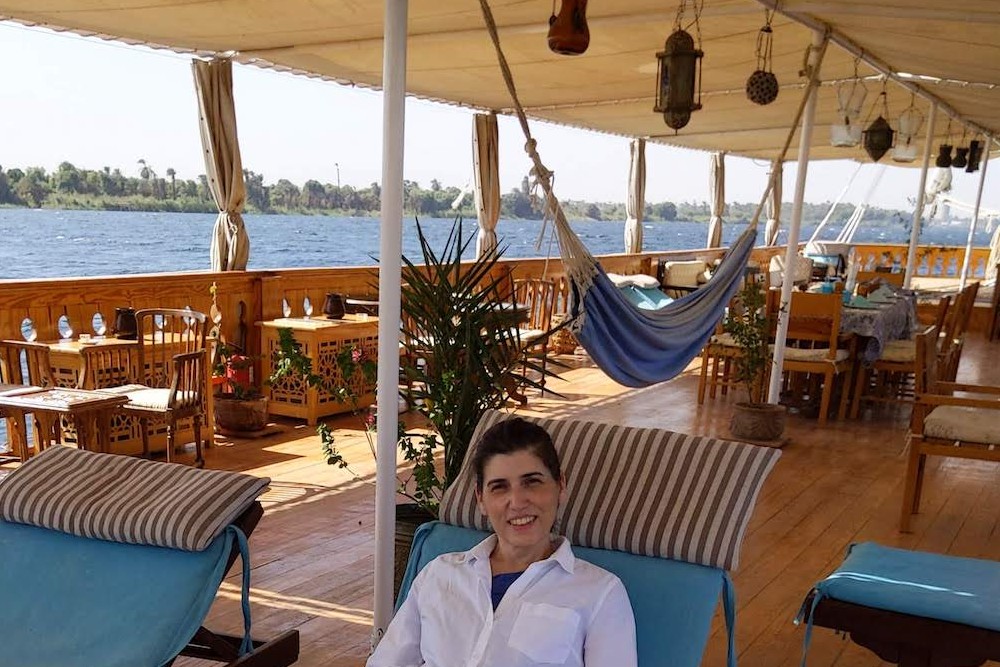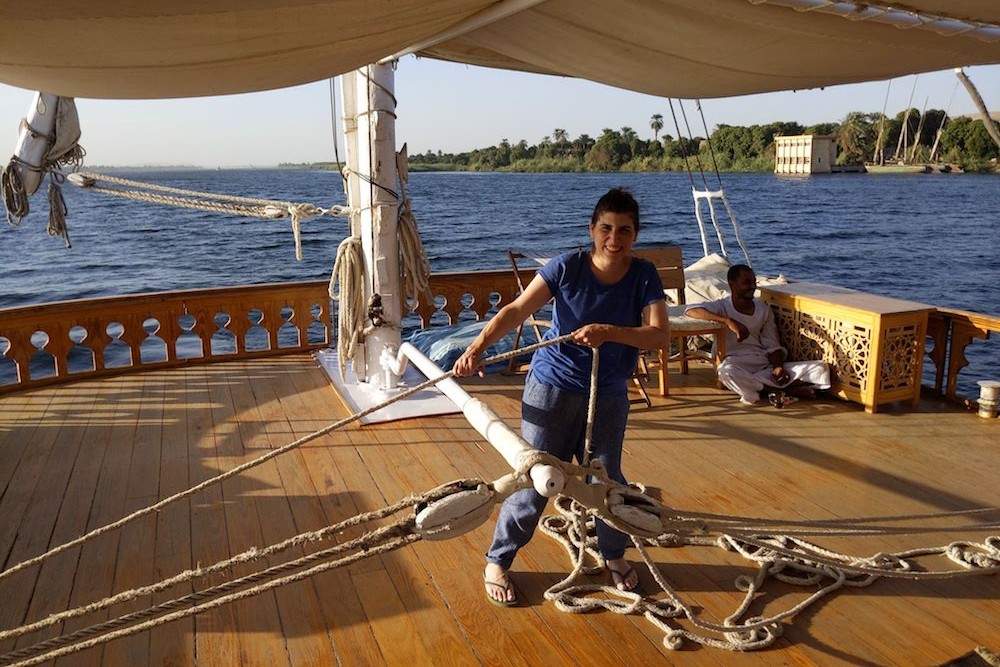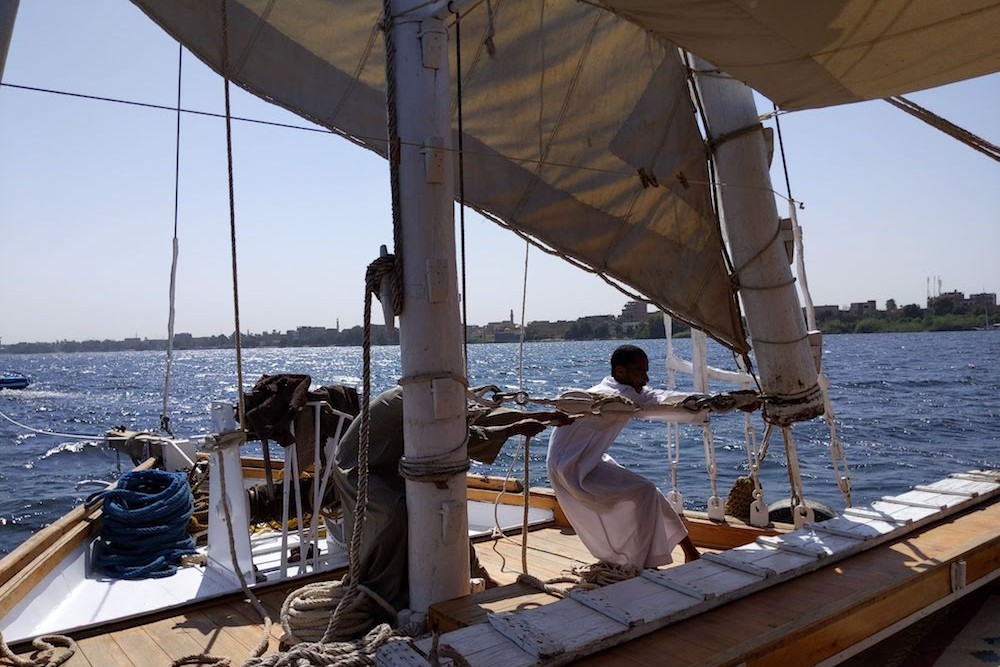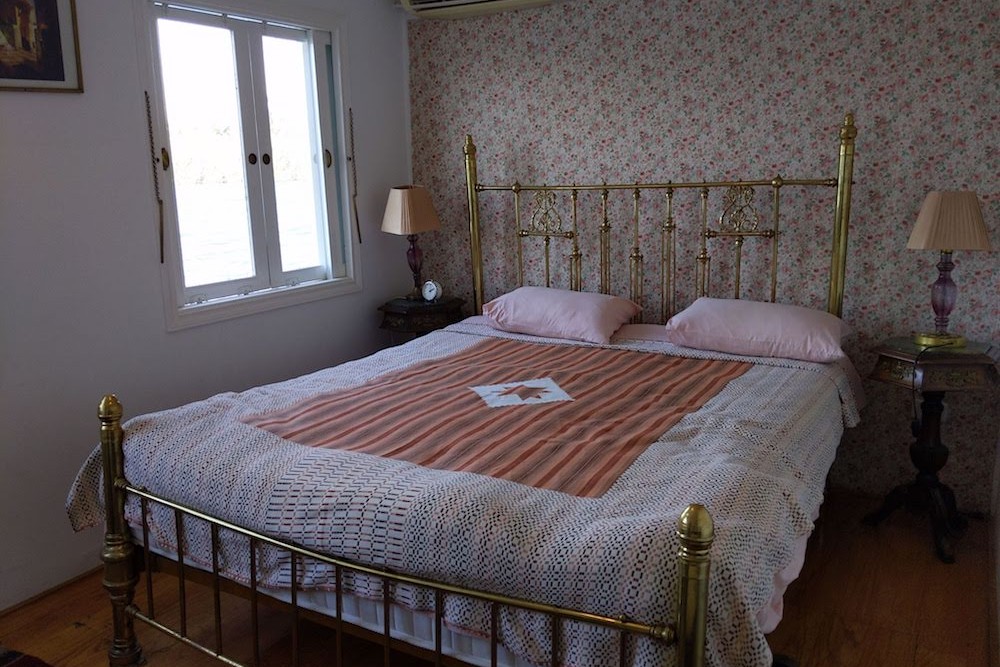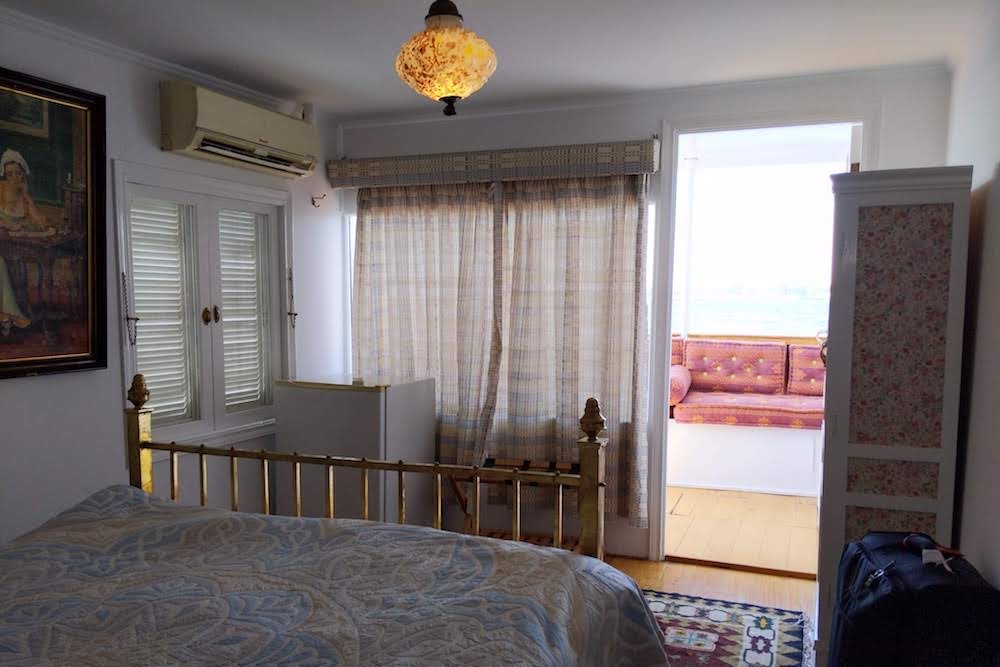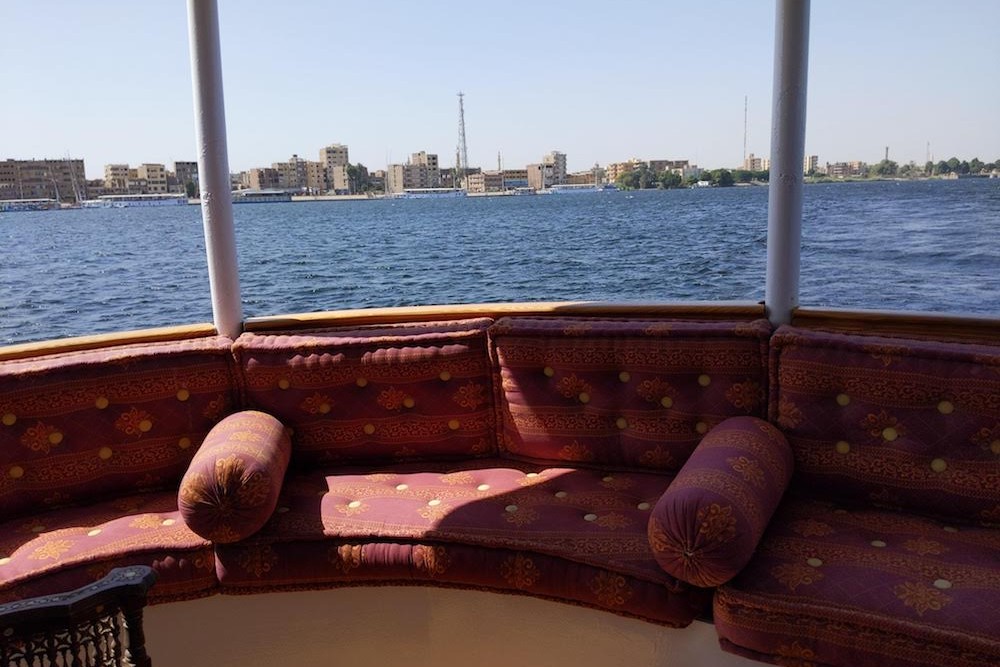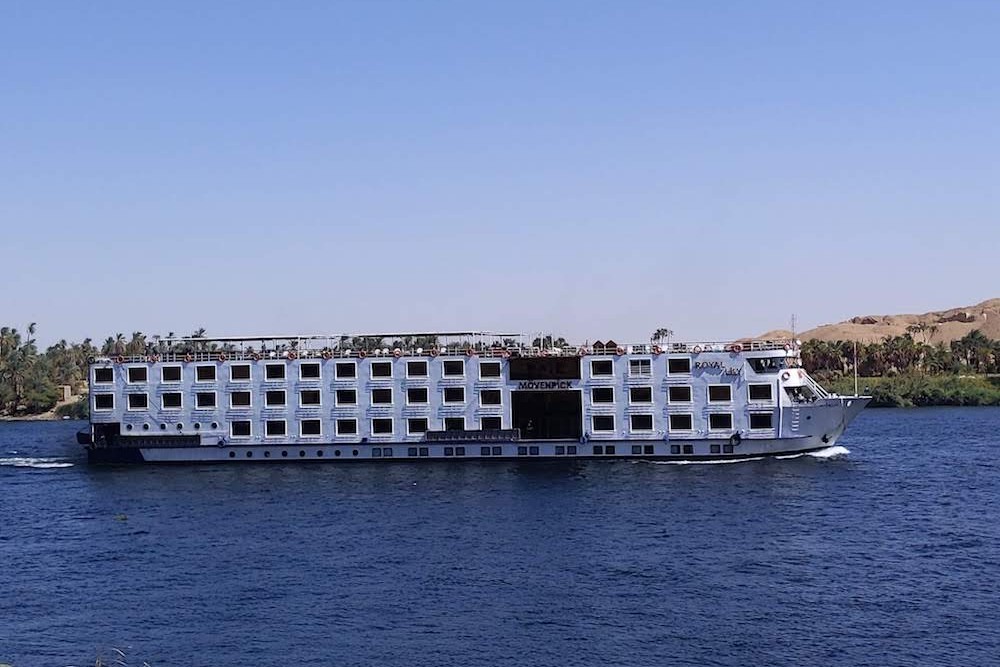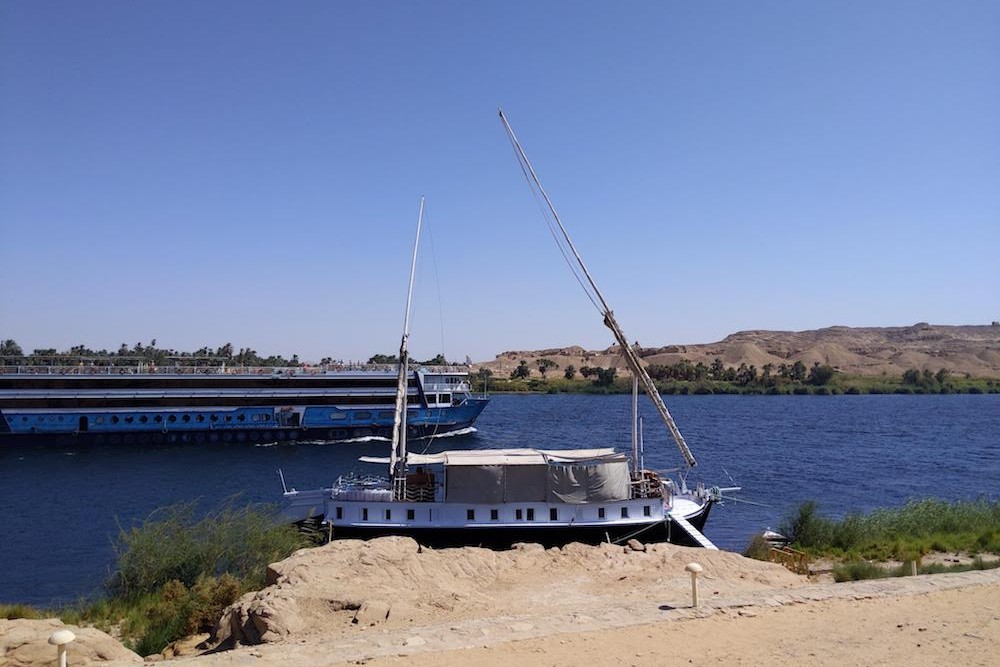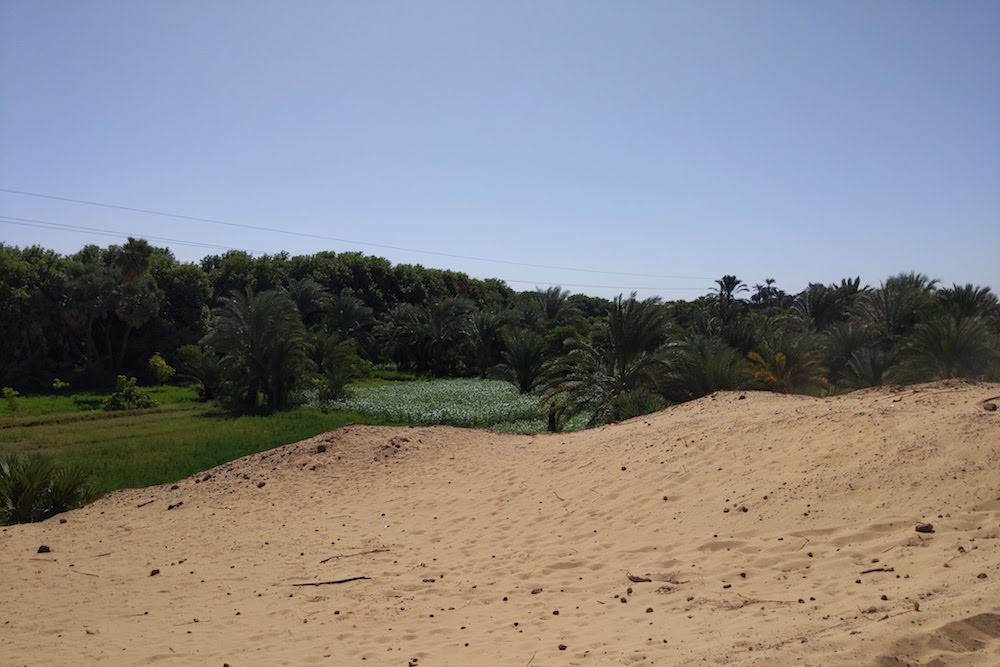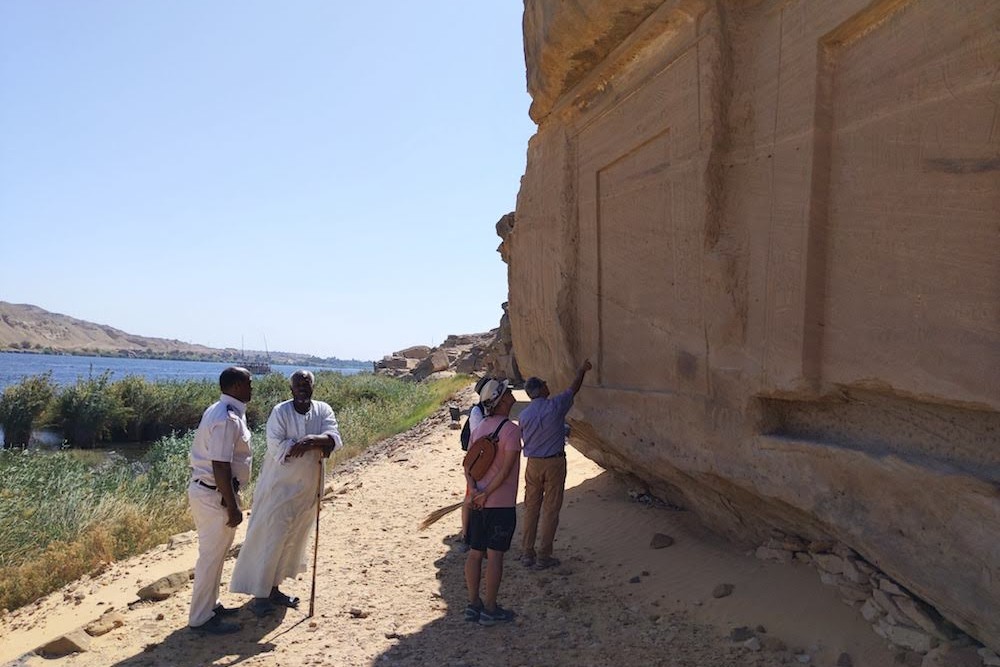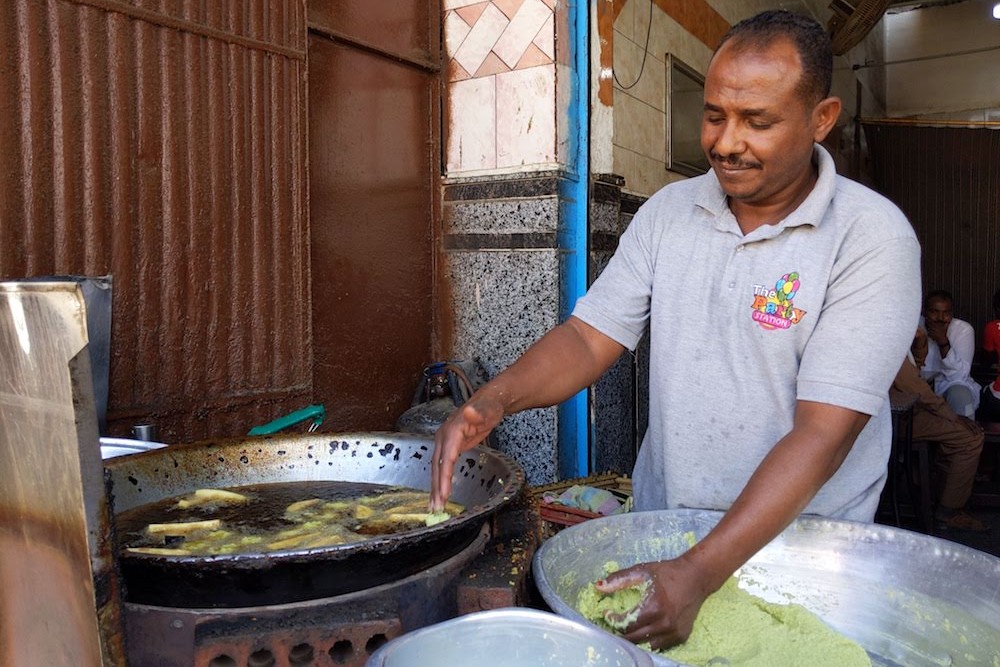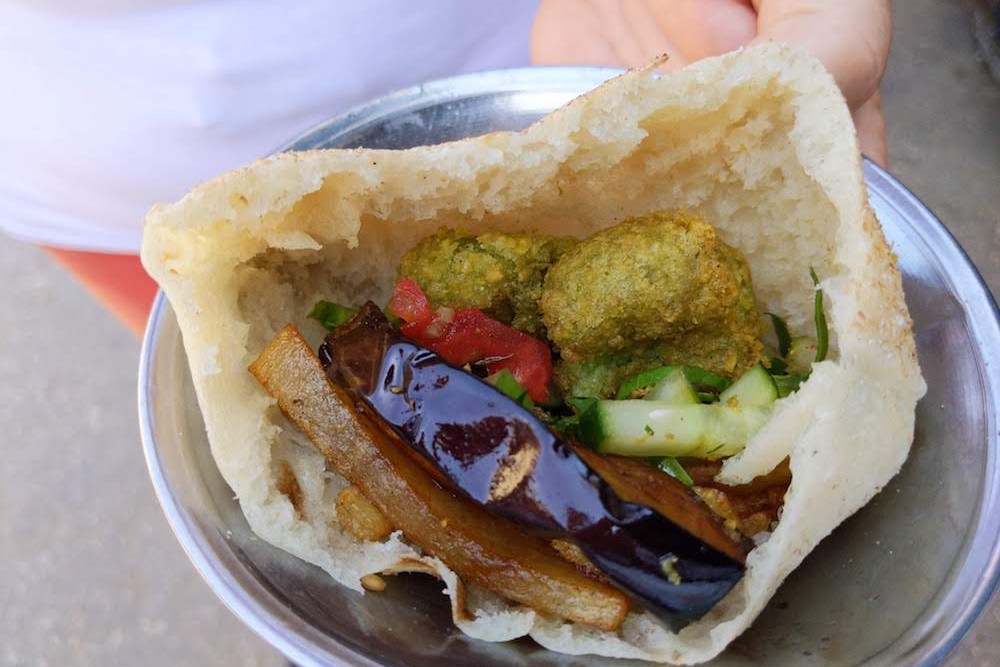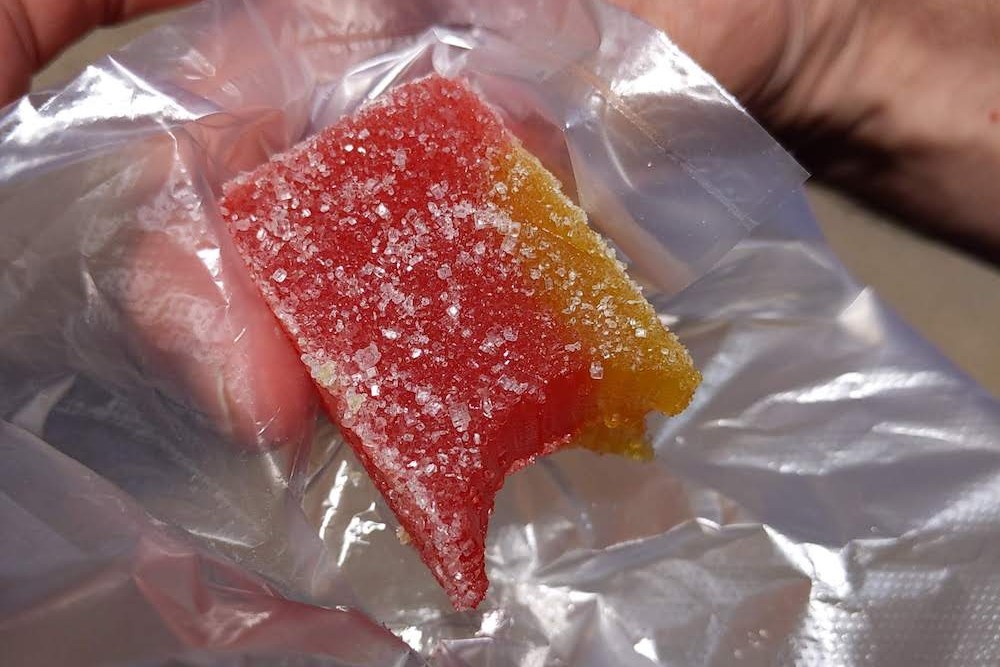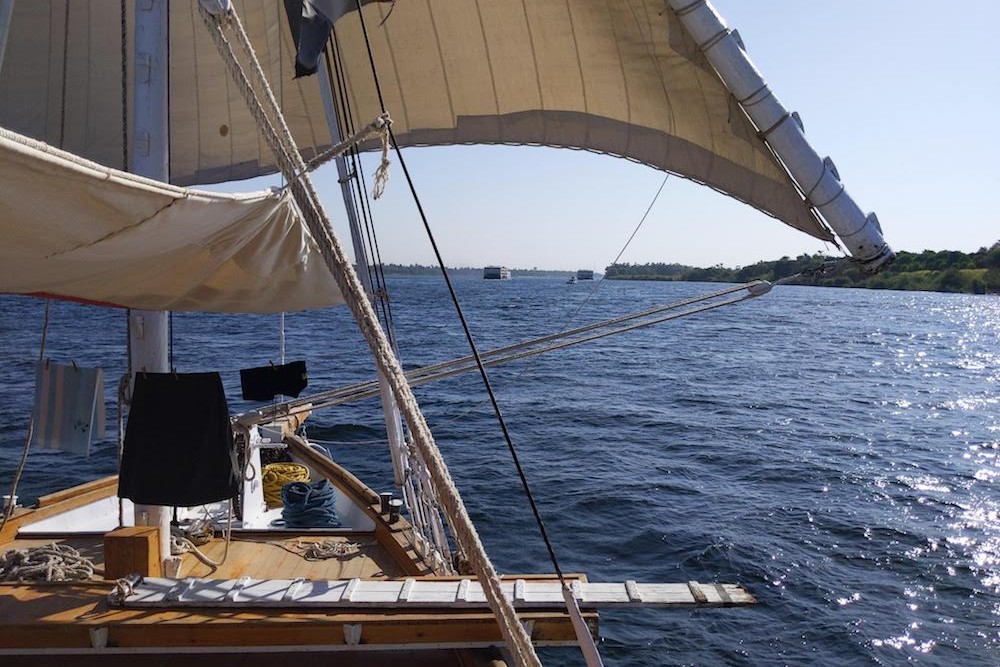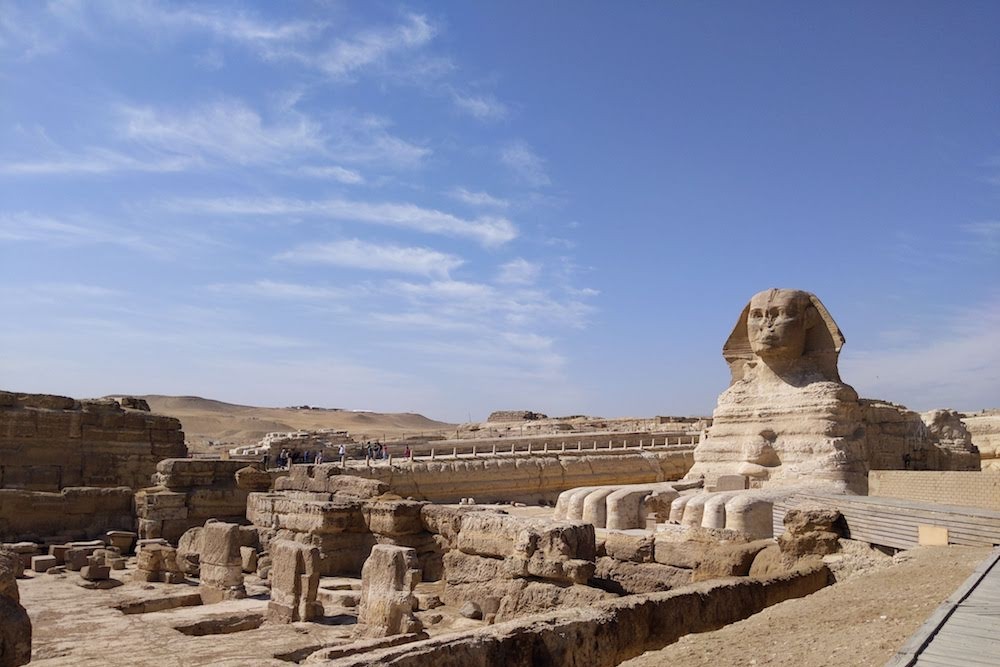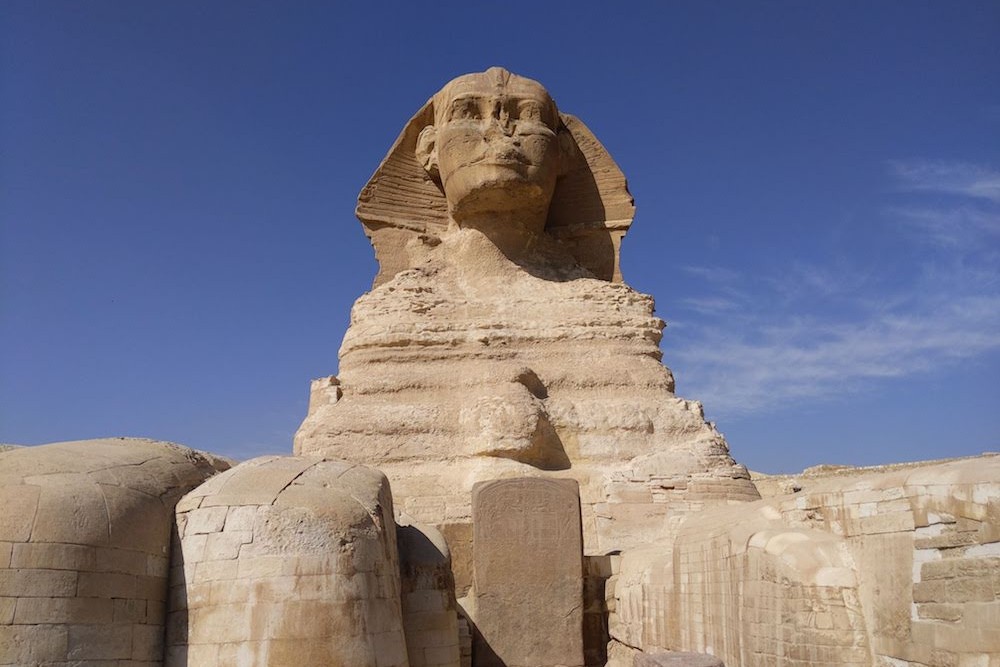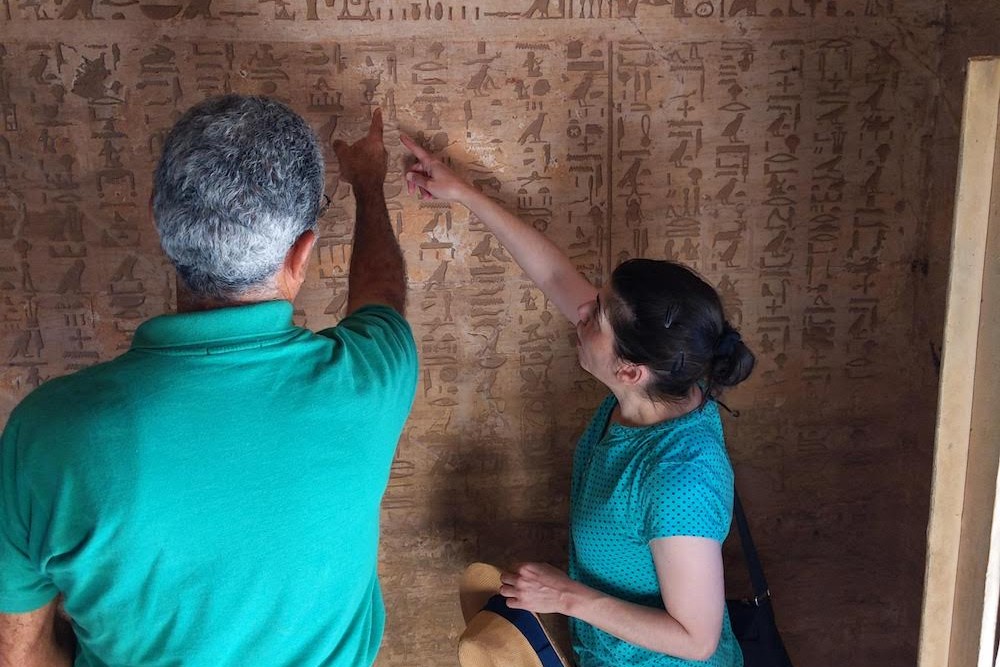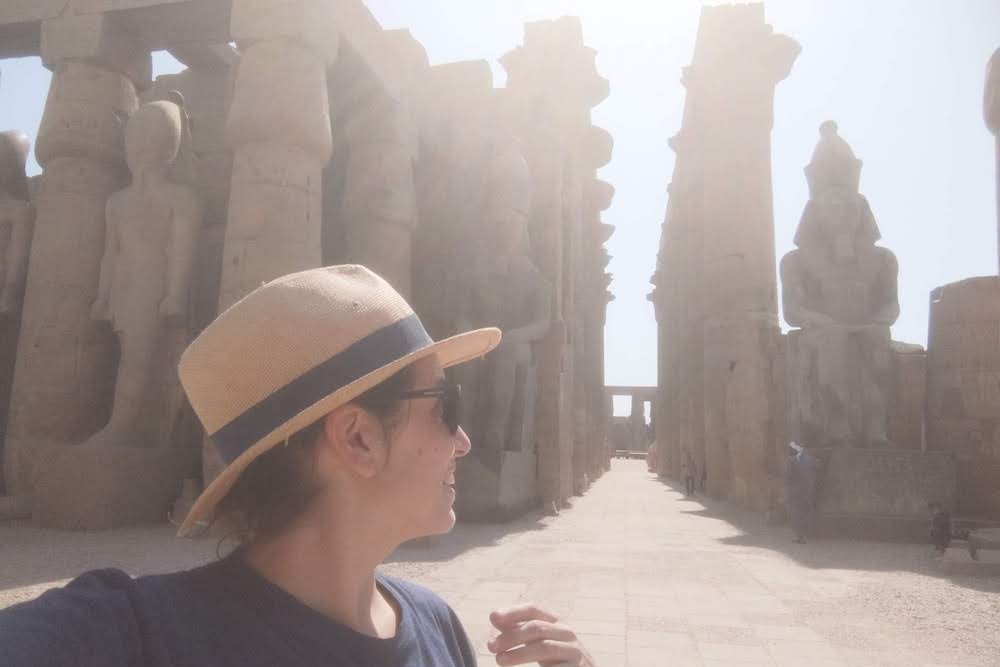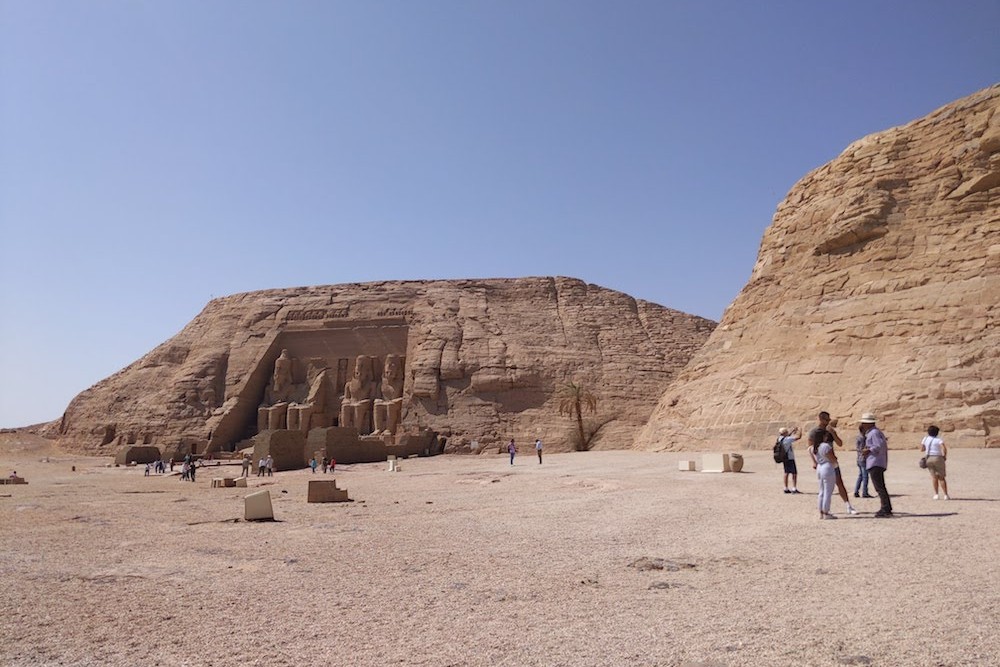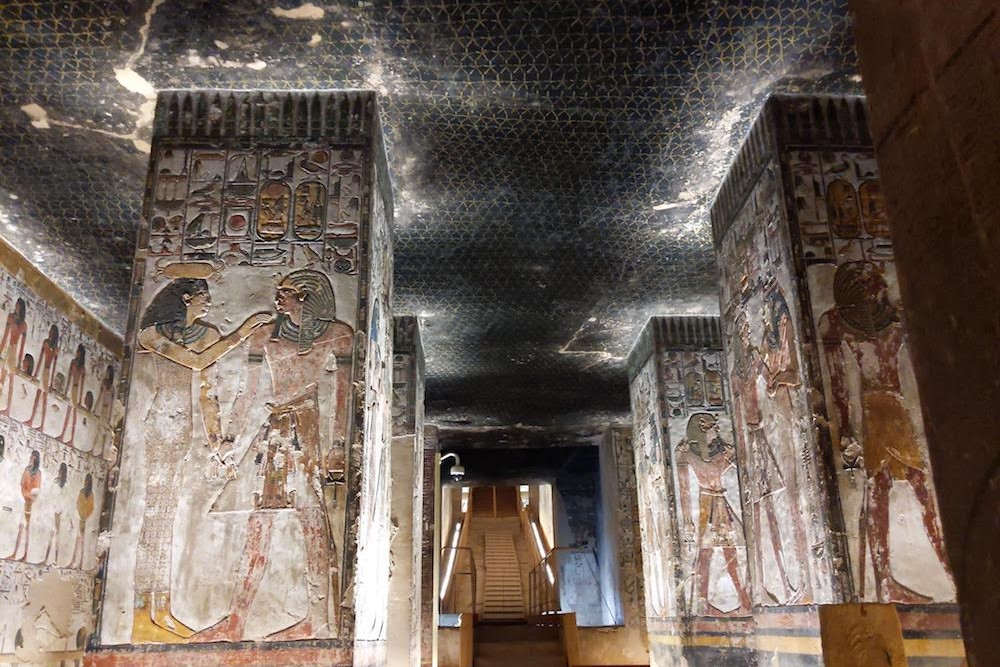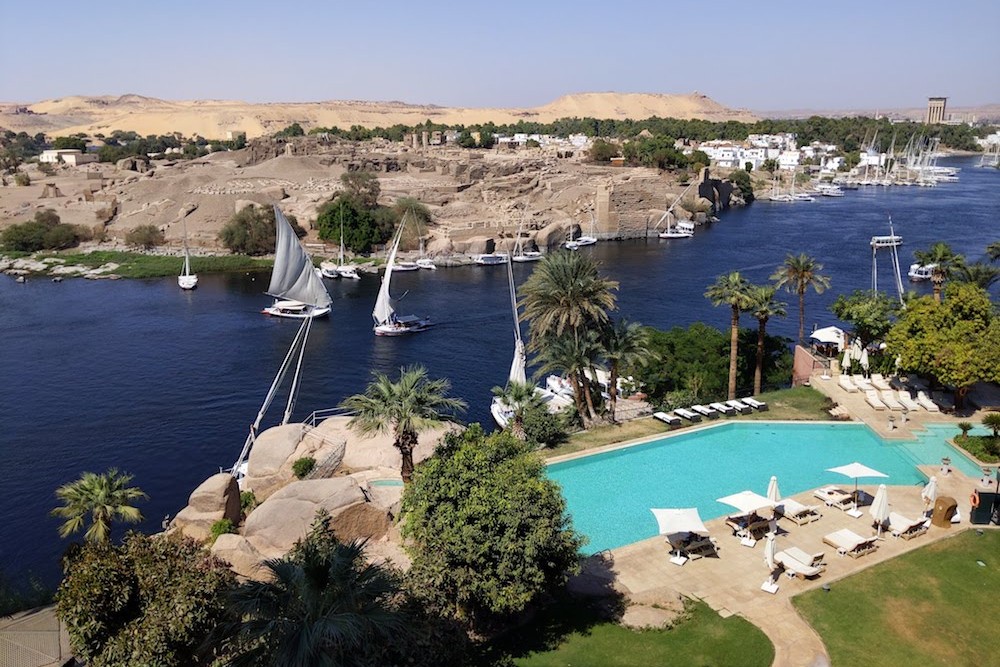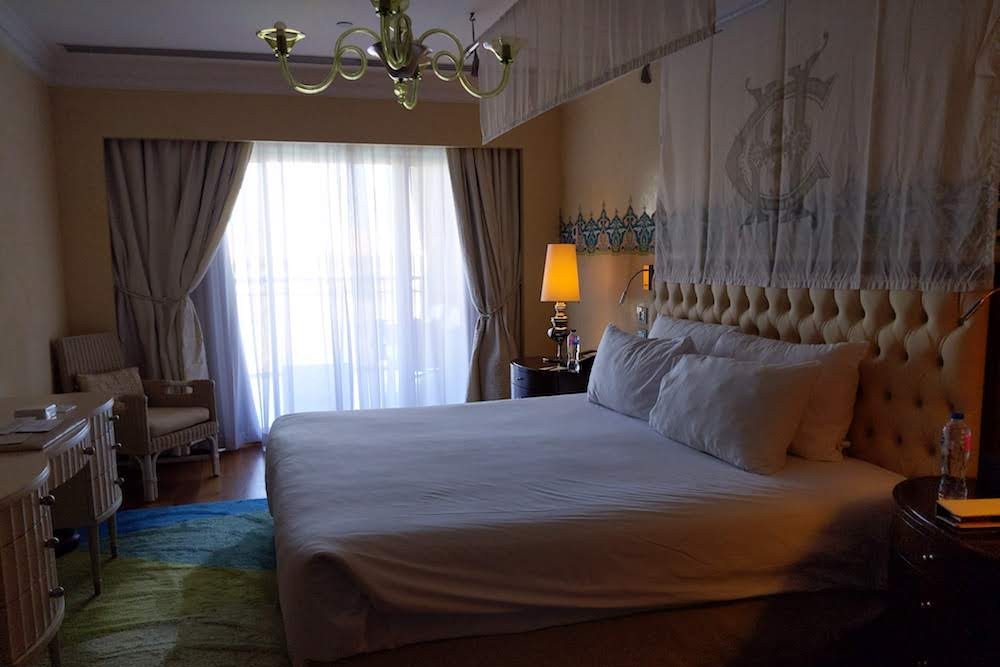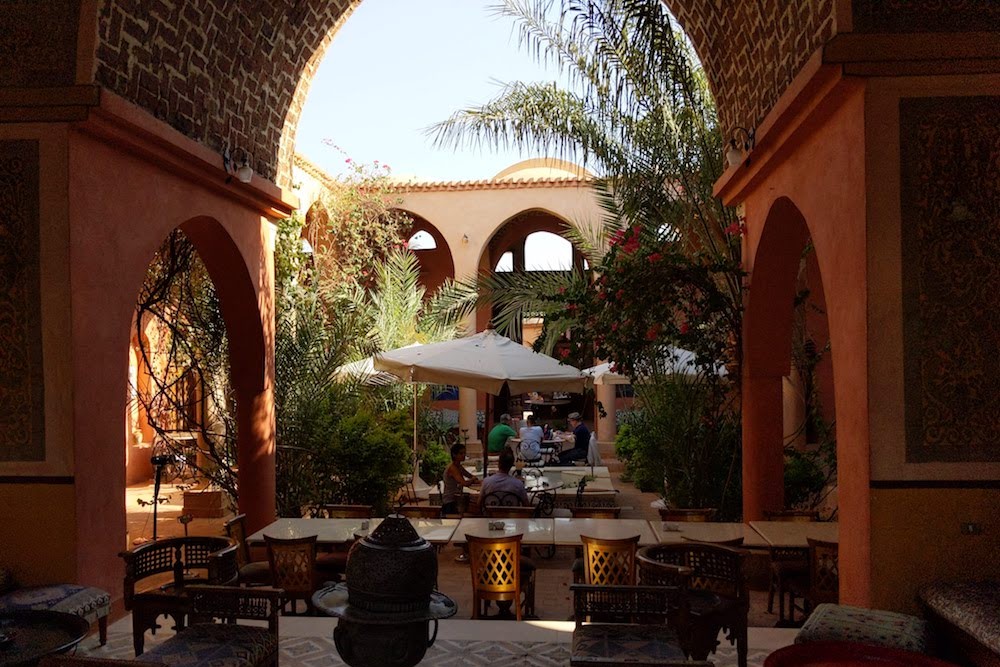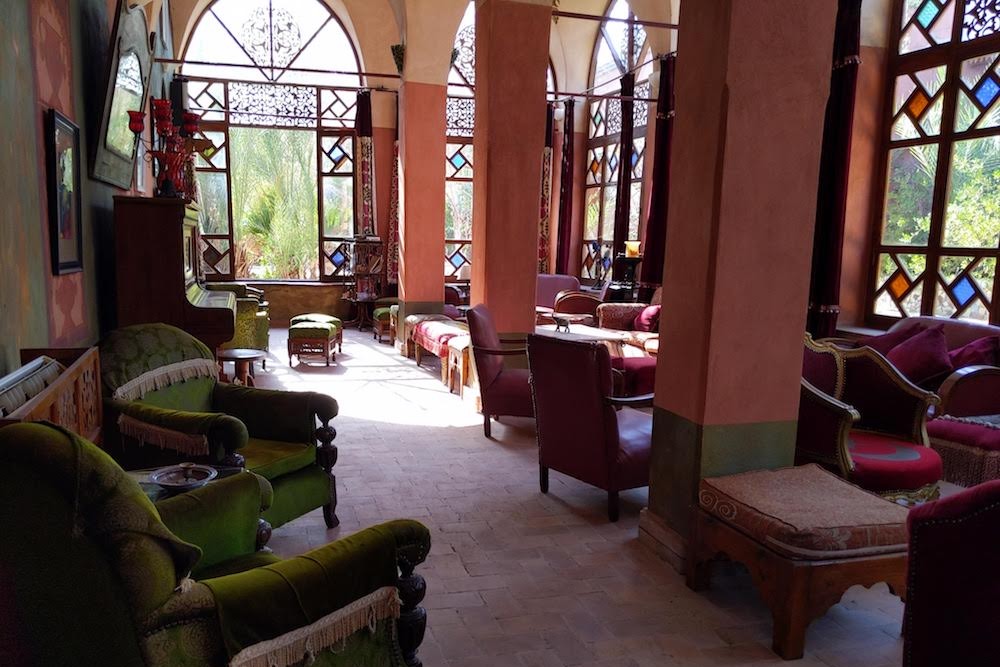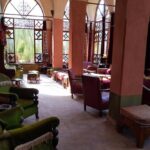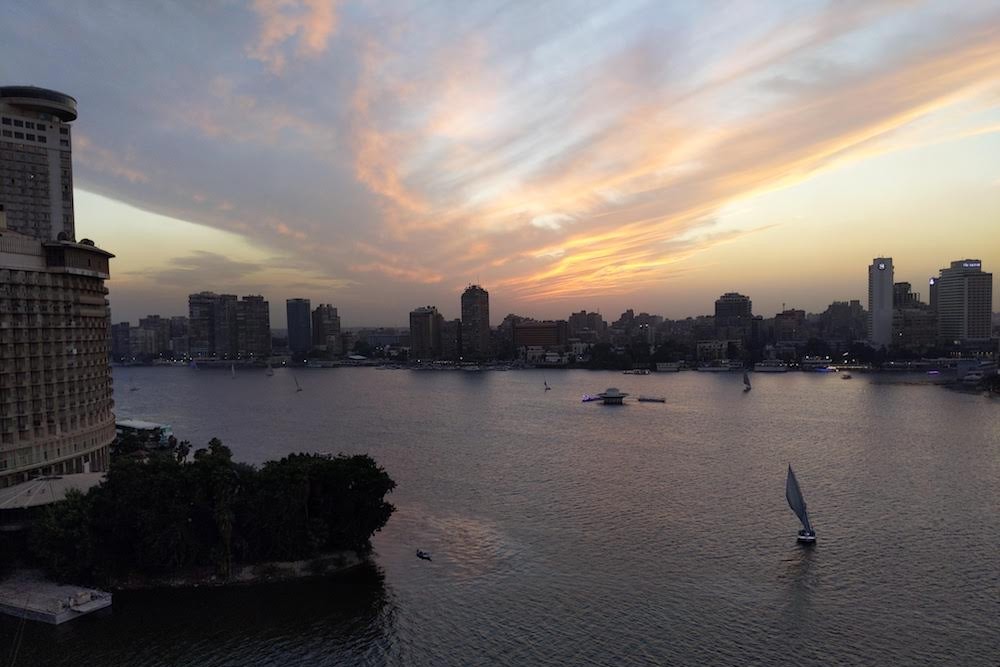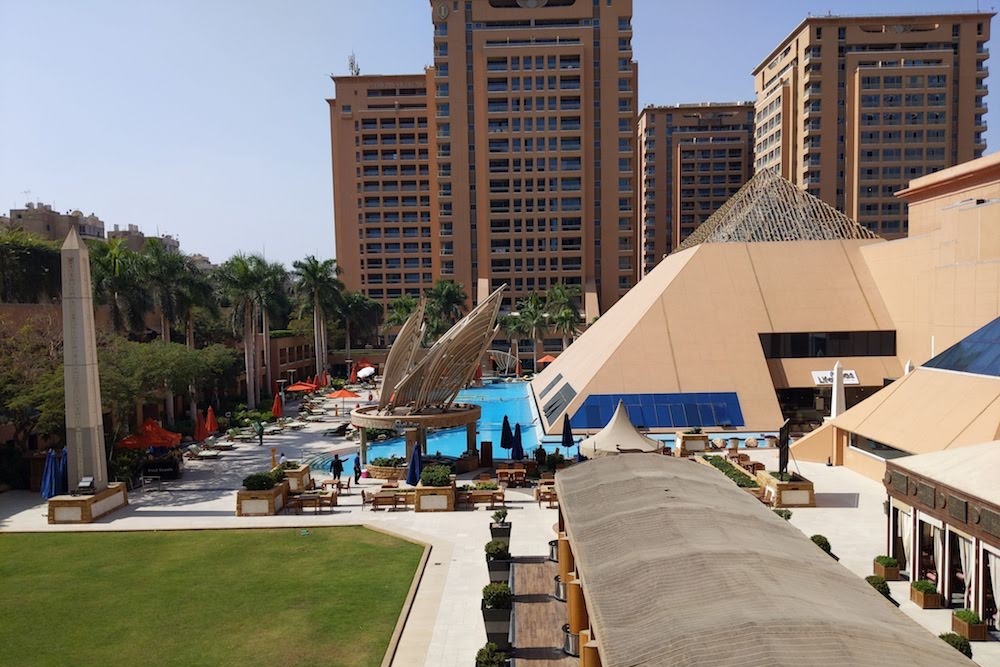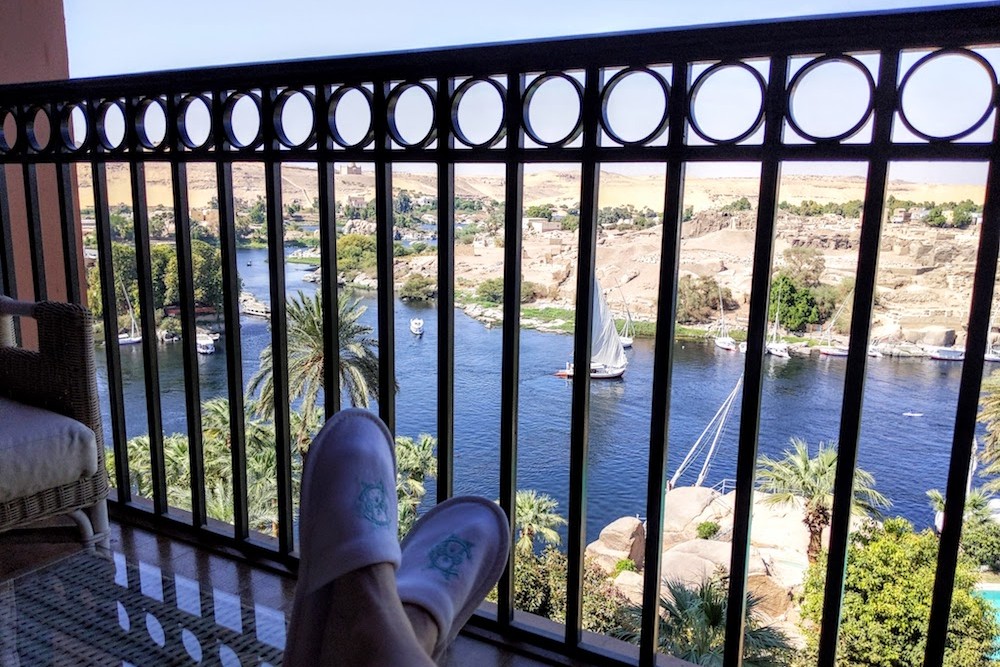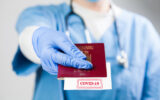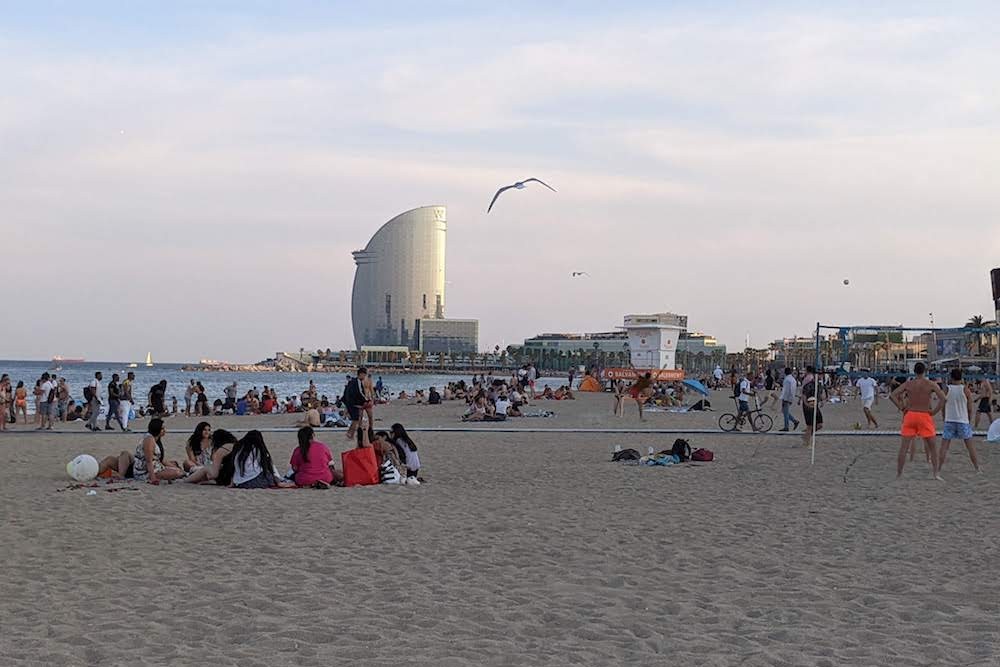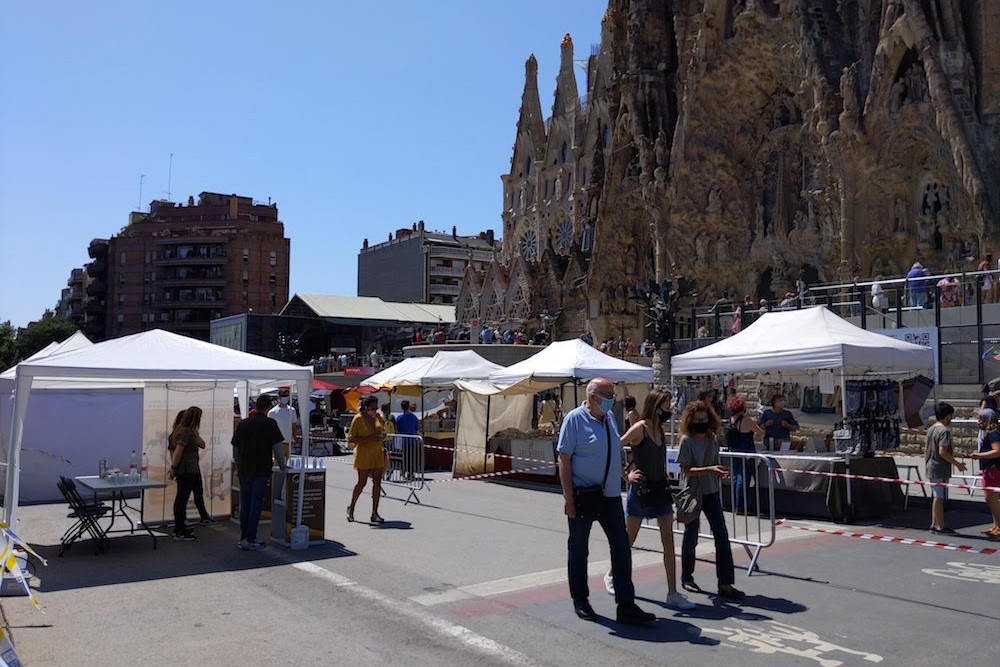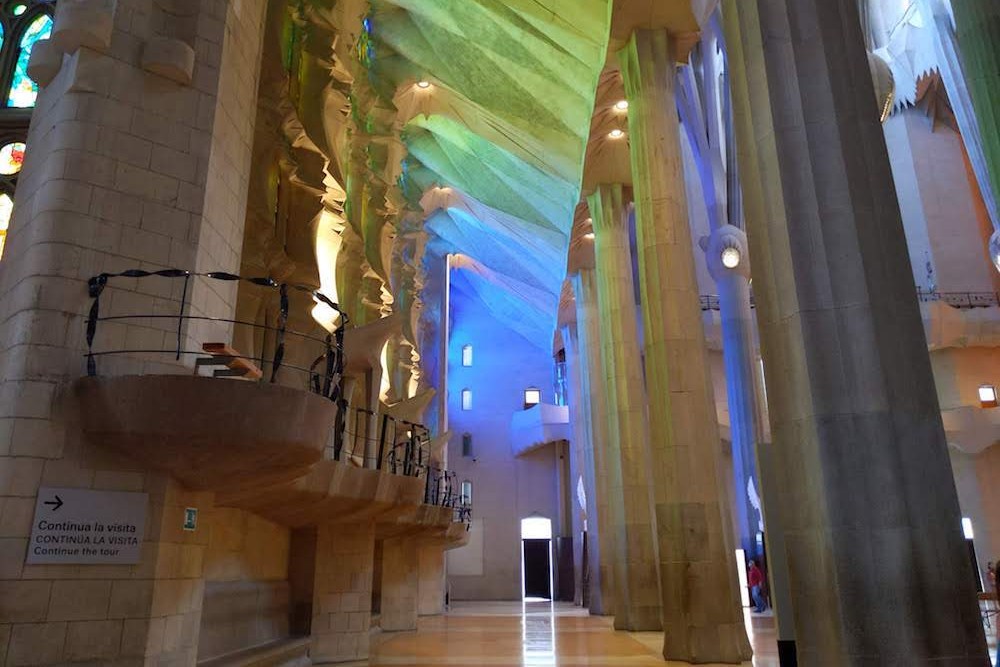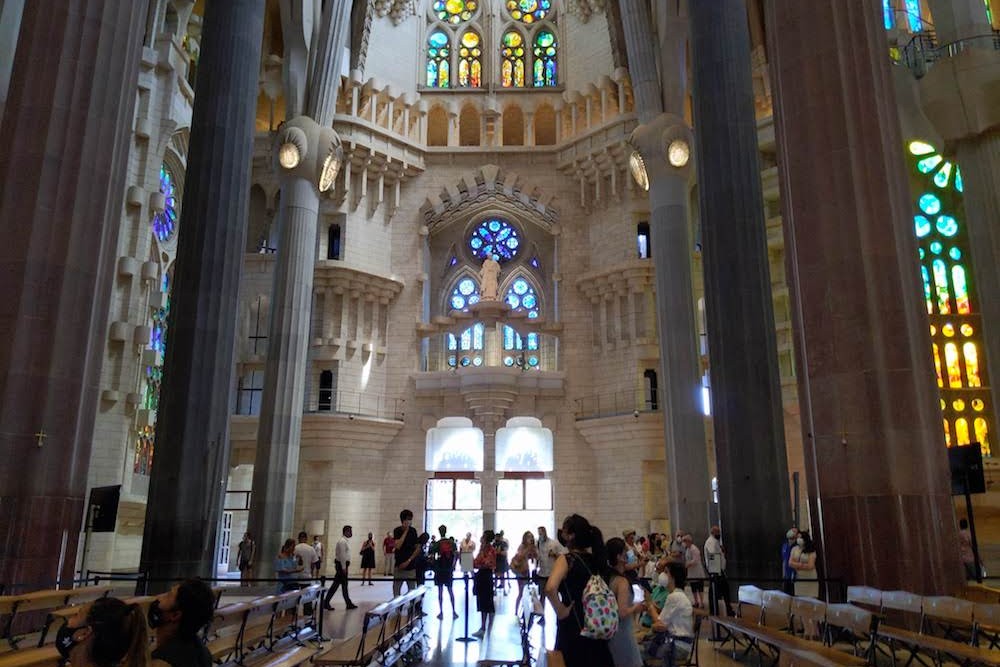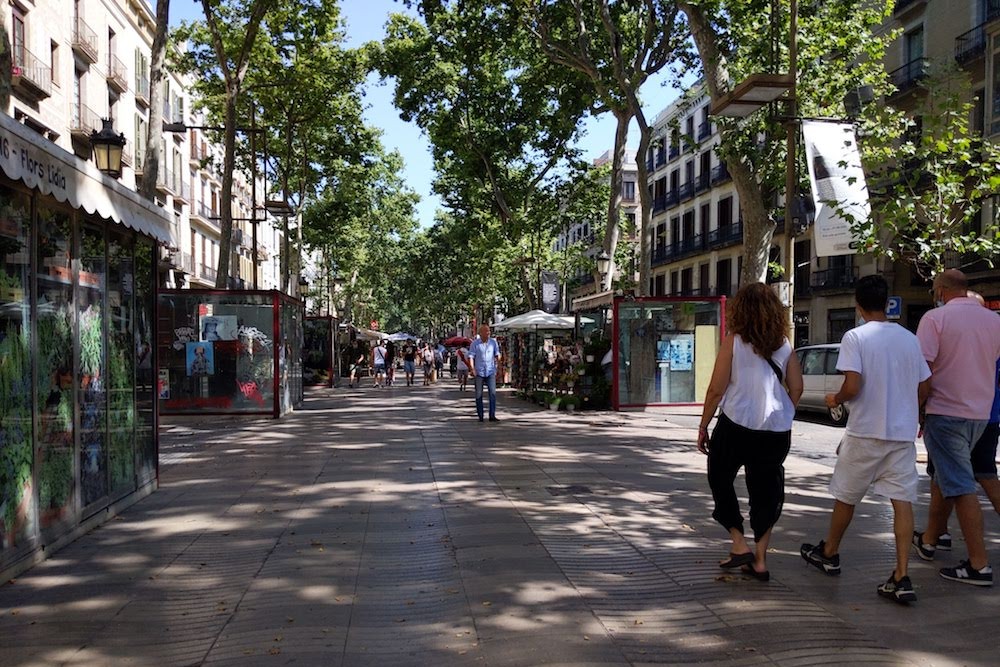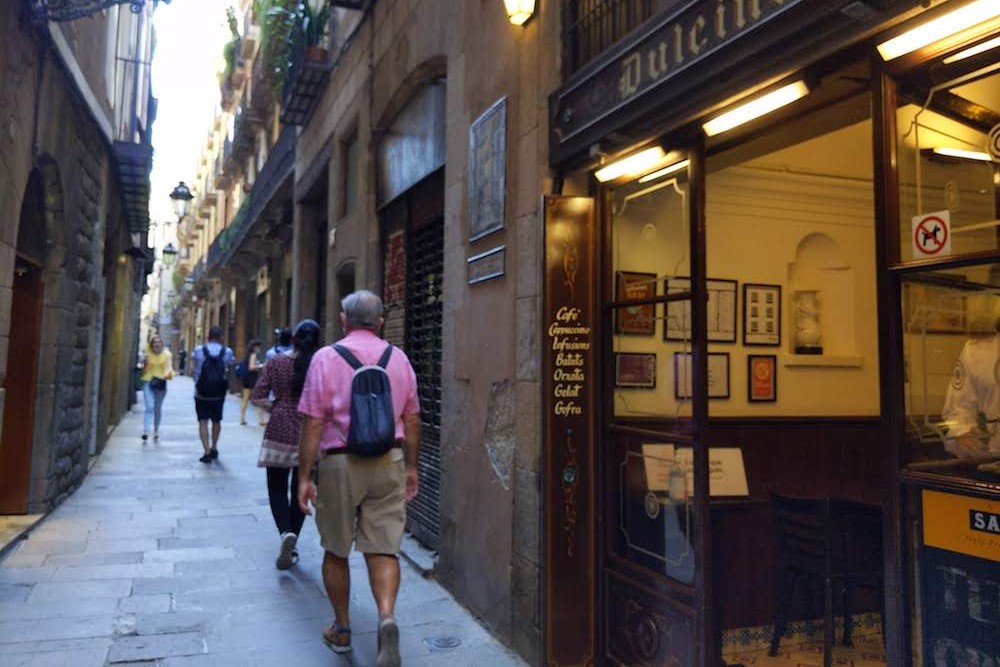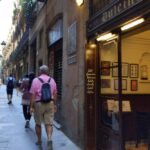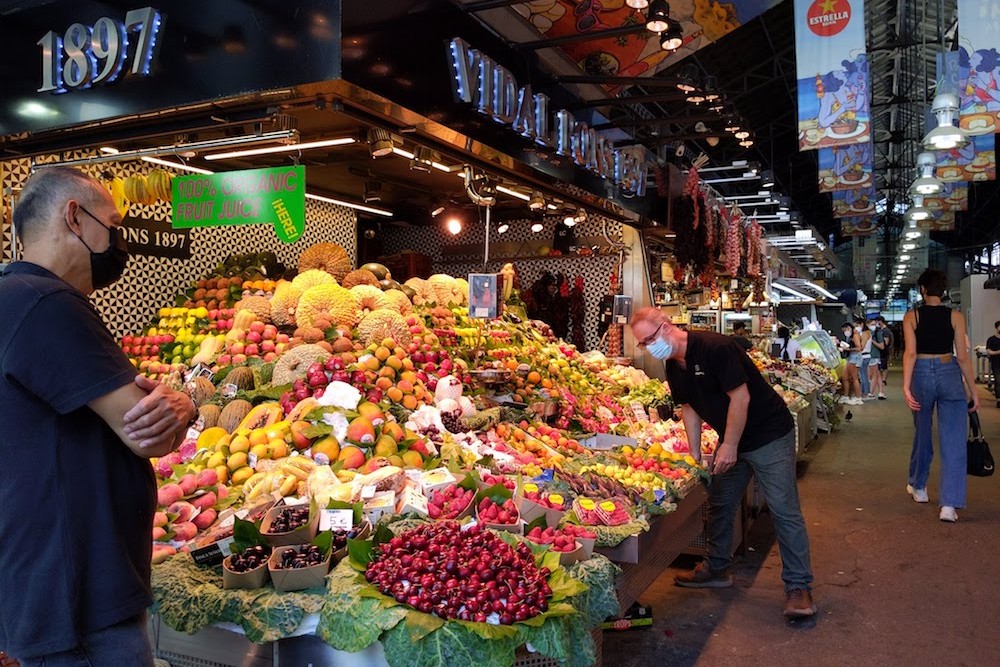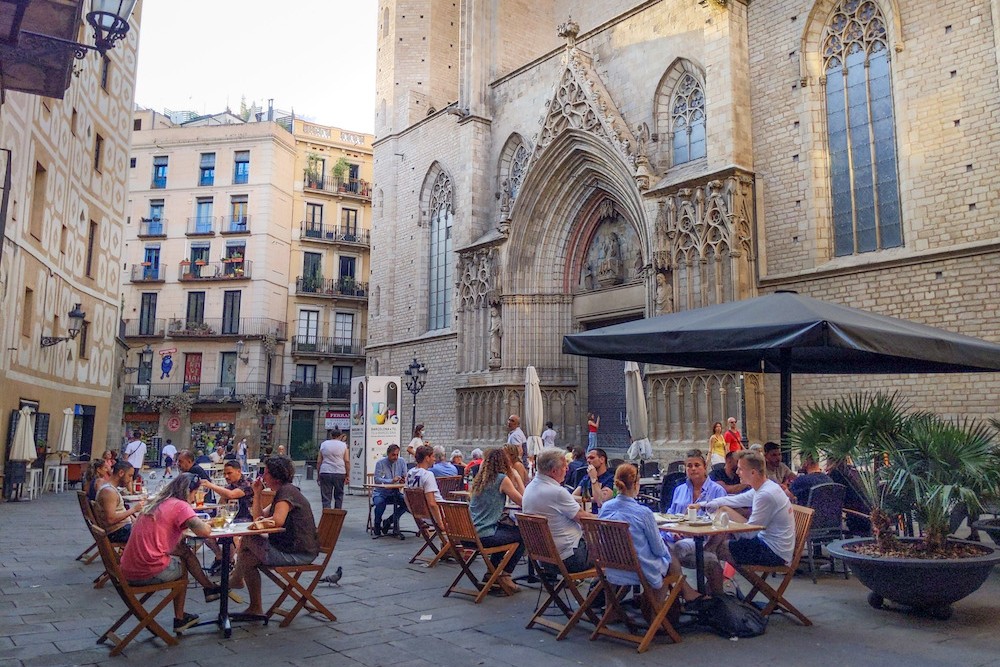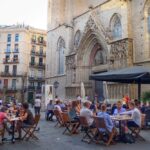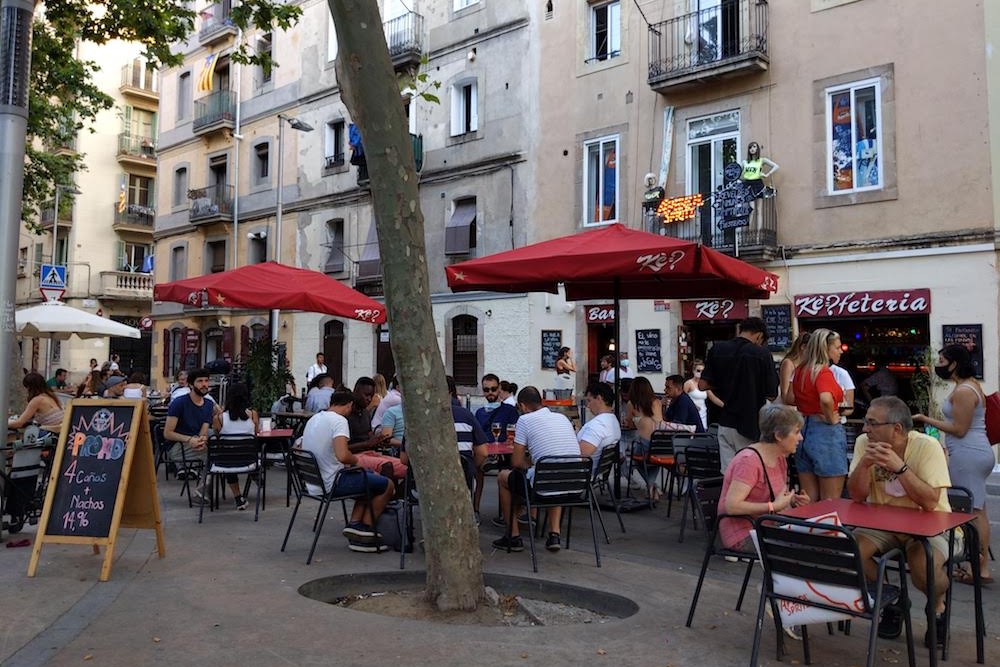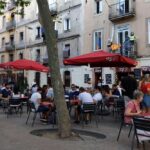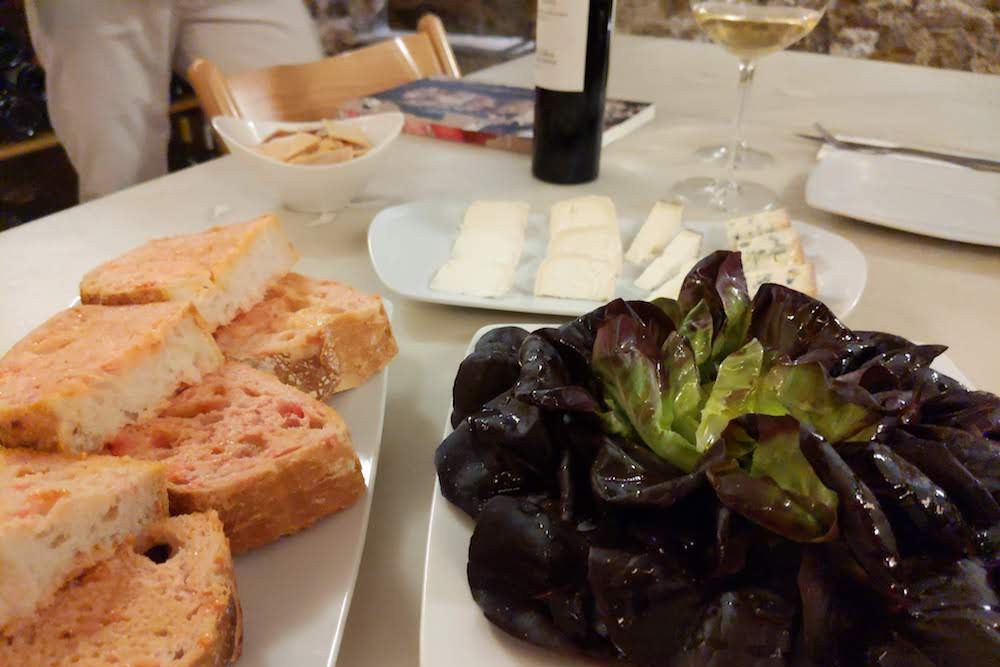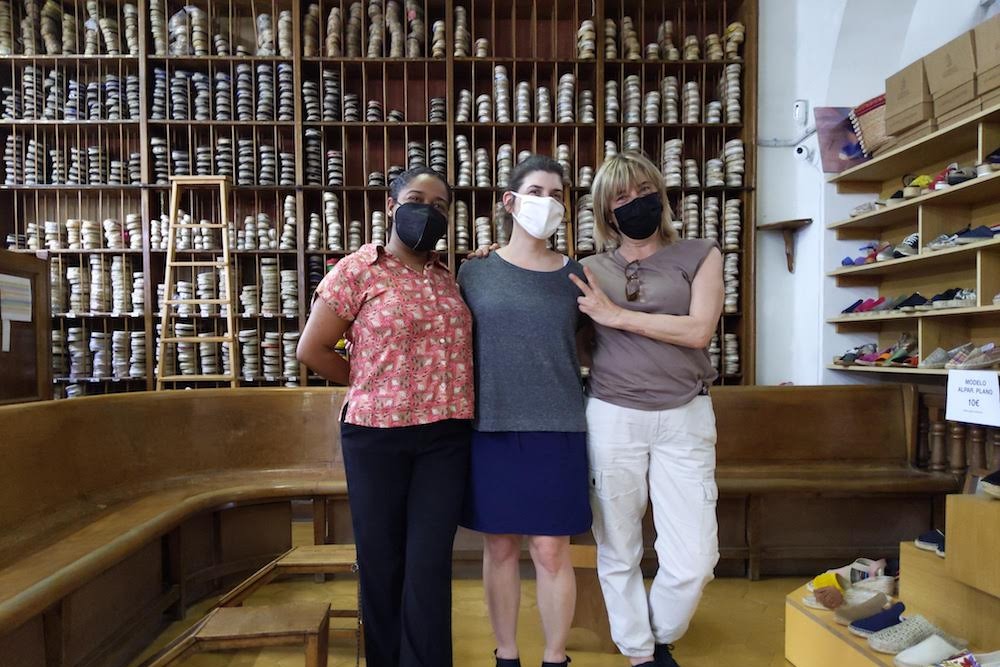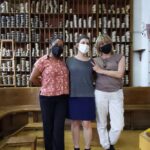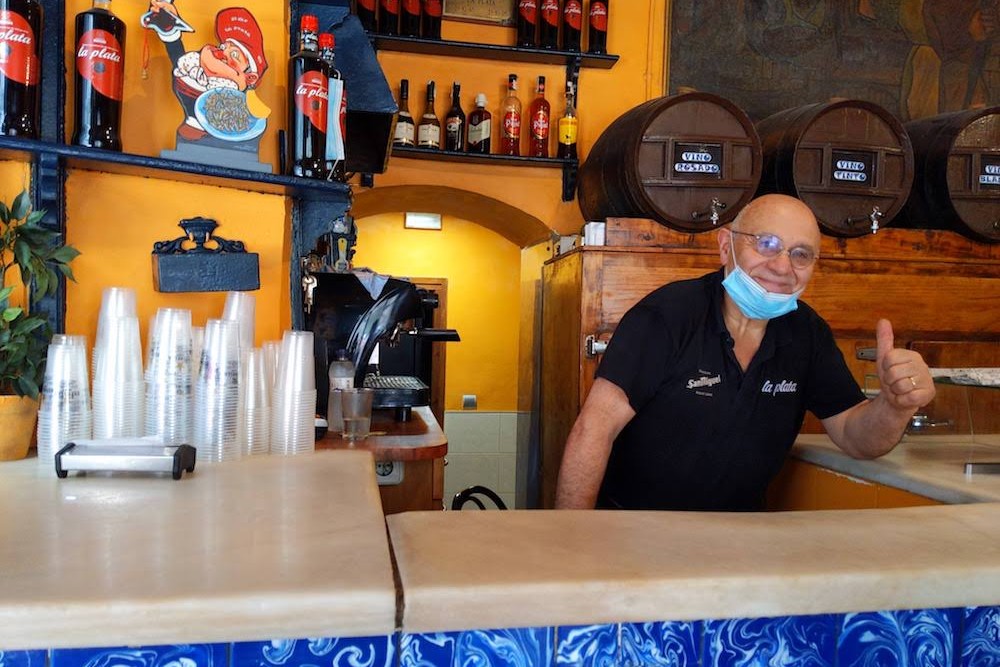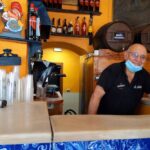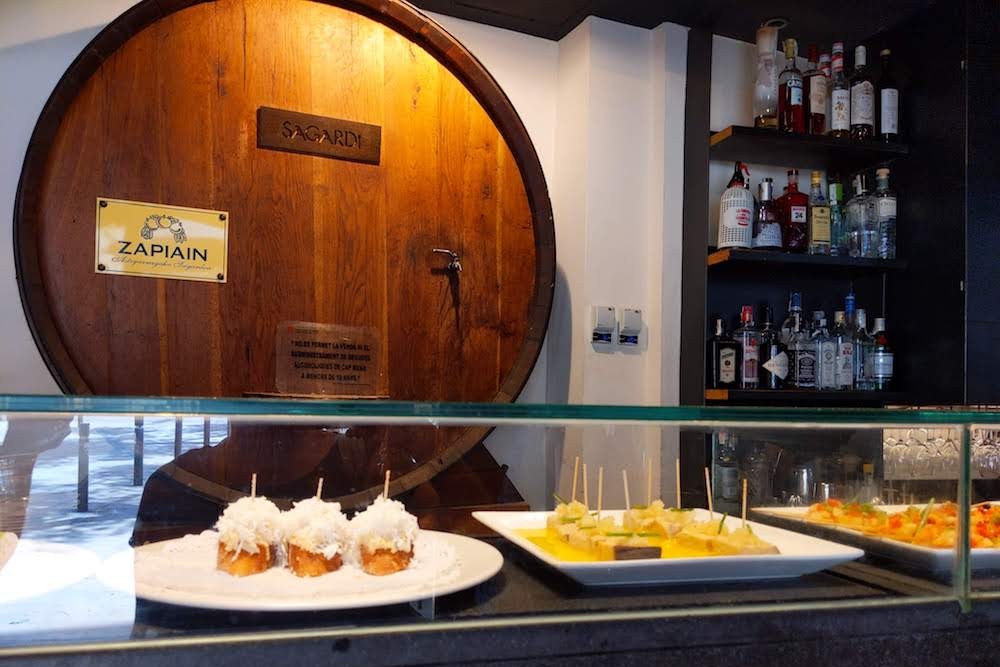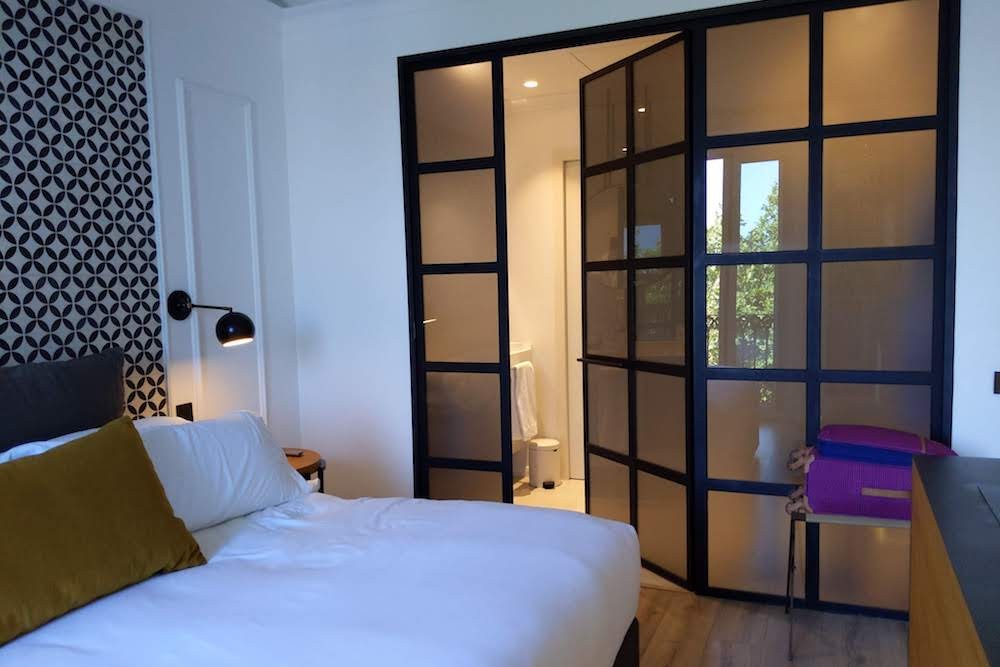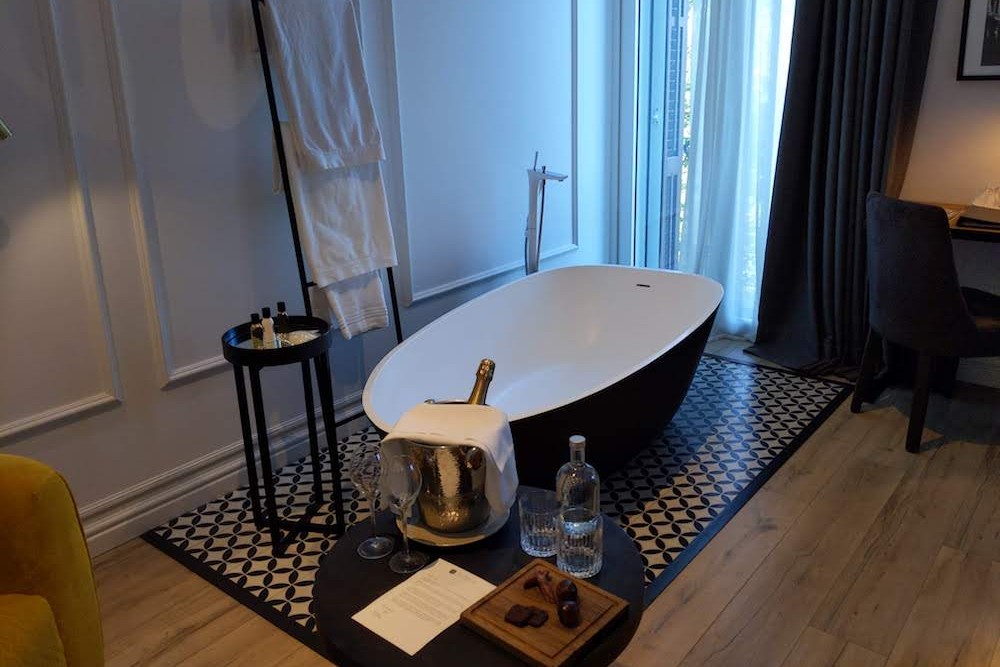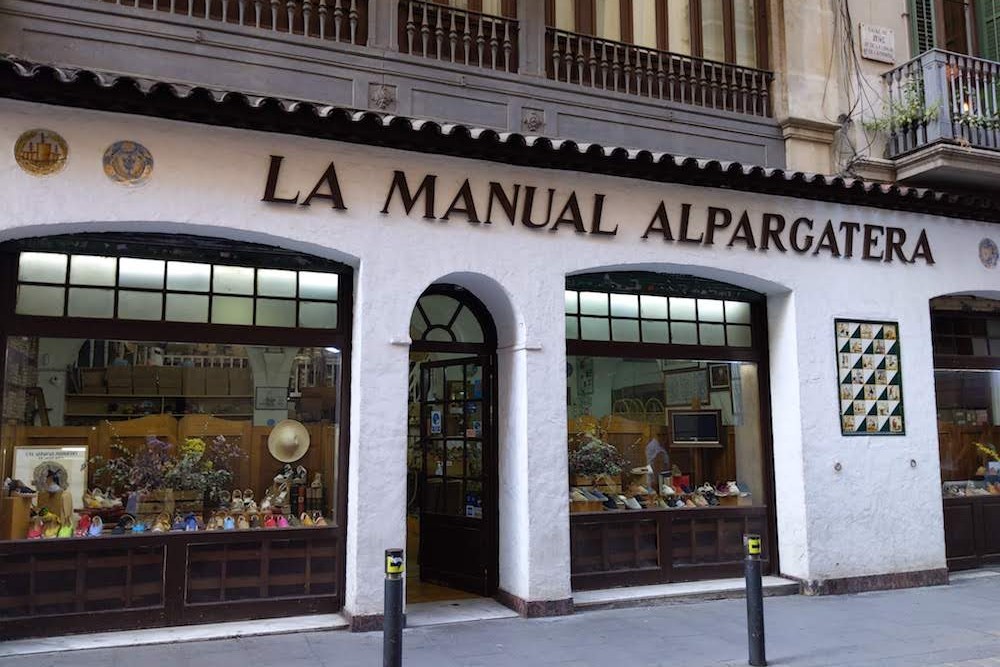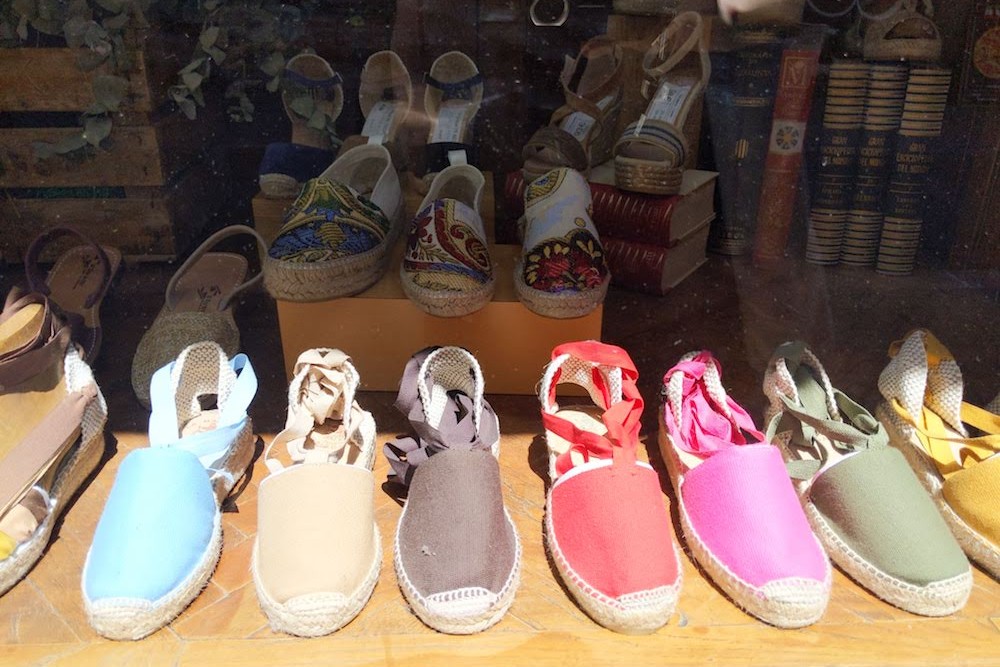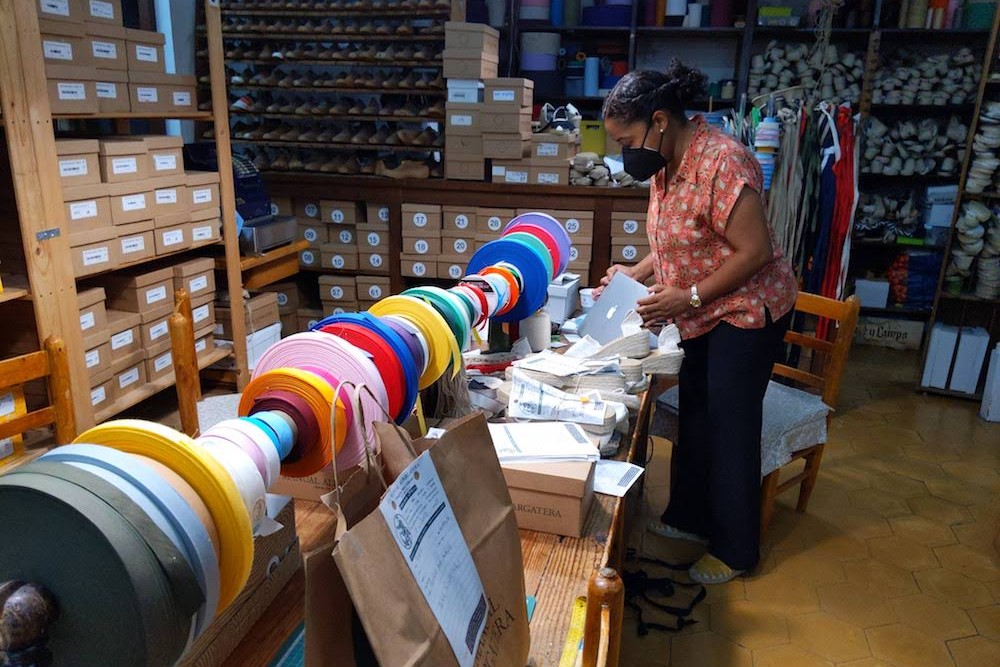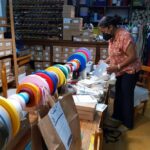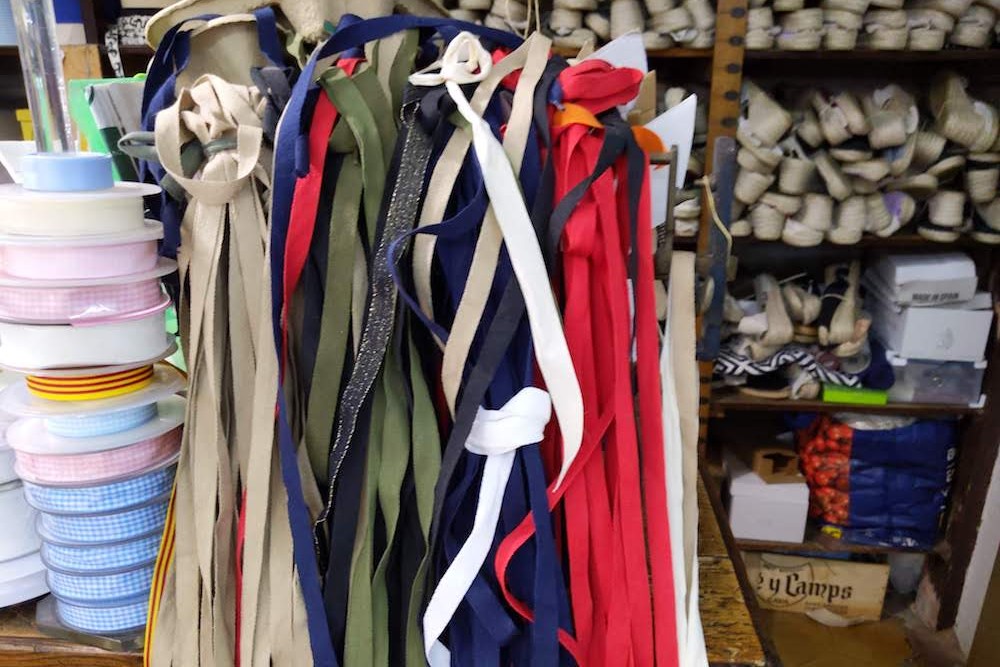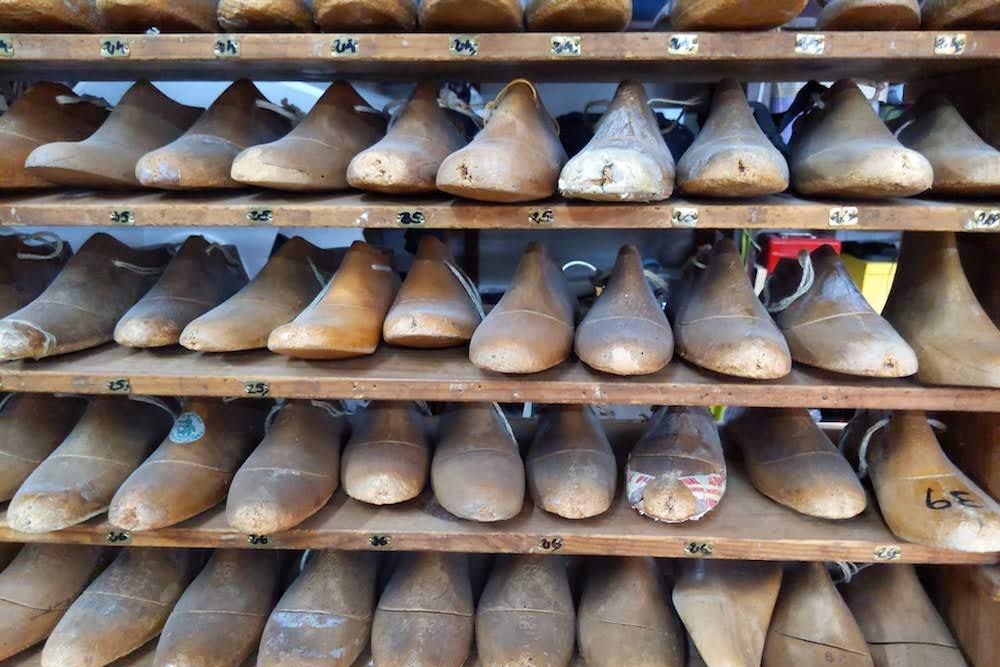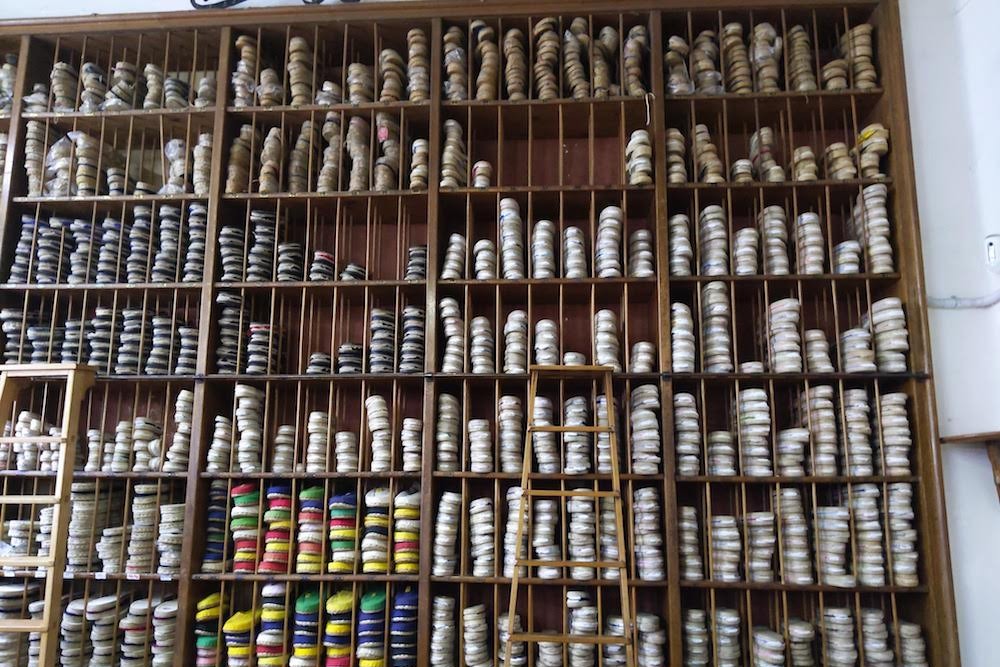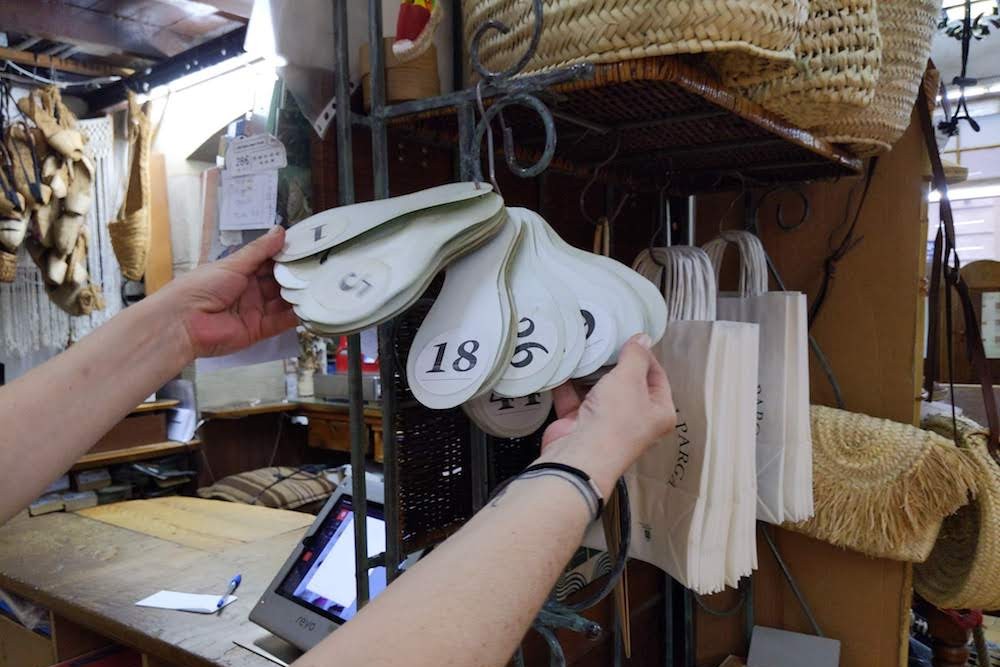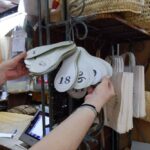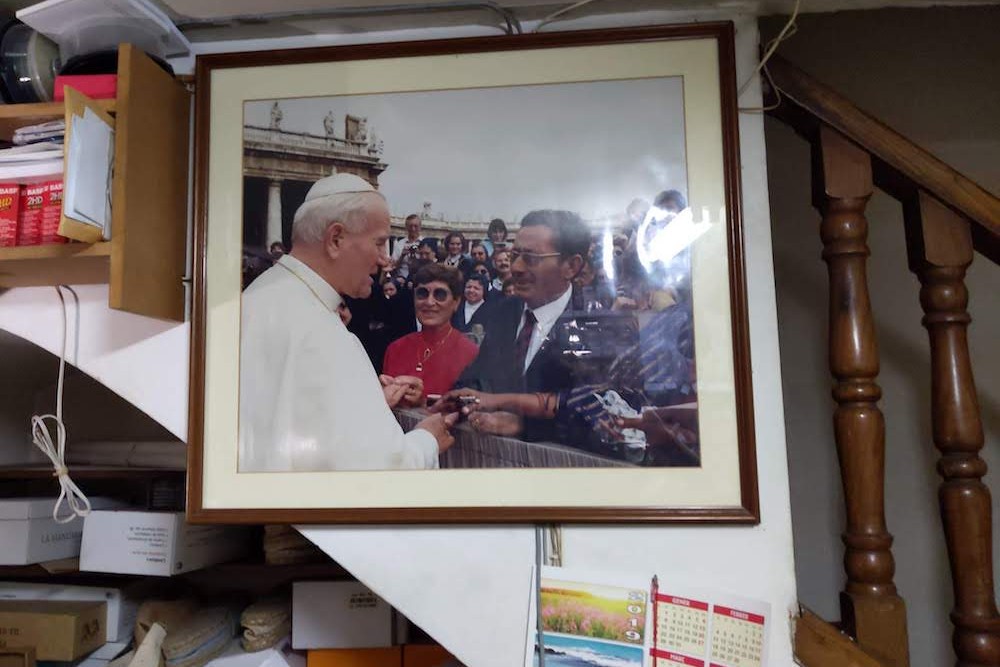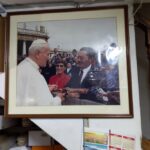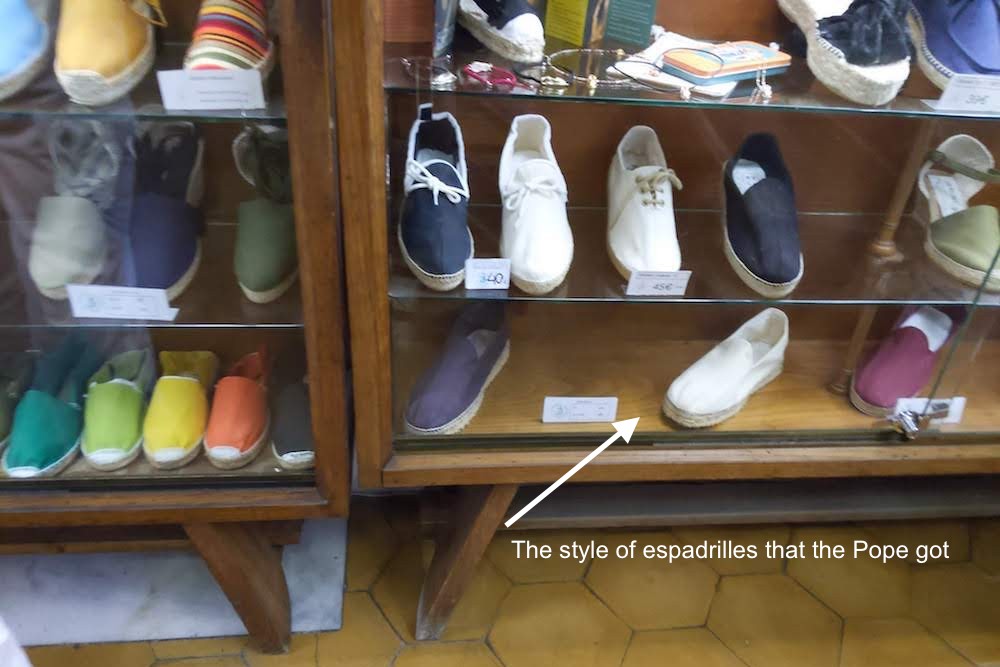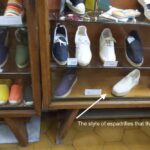Considering what we’ve all been through in the past few years, it feels more important than ever to celebrate joyous milestones. So we’ve collected these unforgettable wedding-anniversary trips enjoyed by your fellow travelers. They all used The WOW List to find the right trip planner who could deliver the maximized experience and VIP treatment that people who are celebrating a special anniversary deserve. Here’s how to get your own WOW trip.
START A ROMANTIC TRIP
“A great, relaxing way to experience the Mediterranean and see the islands from a different viewpoint”
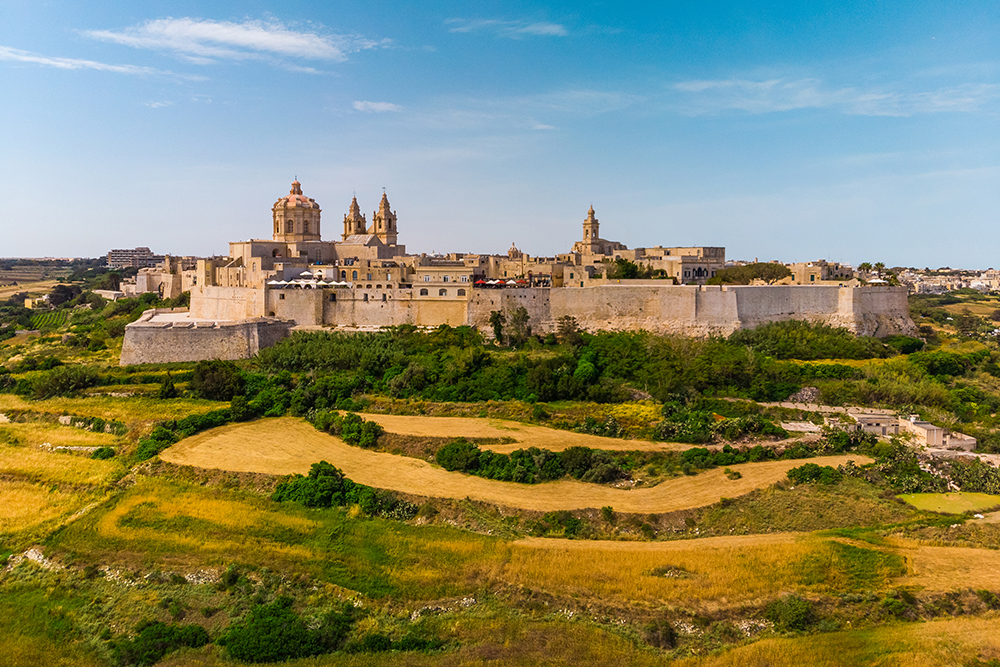
Traveler Tracy Reller called Malta “easy, seamless, and carefree” for their 25th anniversary. Photo: Exclusively Malta
“In one word, our 8-day Malta trip in July was awesome! Our schedule included a lot of activities, but they didn’t feel rushed and were all so interesting. Having drivers show up everywhere felt so indulgent but made things easy, seamless, and carefree—perfect for our 25th anniversary!
Our guide, Matthew, was incredible—so knowledgeable, gracious in answering our many questions, and kind in making any changes on the fly. He’s exactly why I like to use Wendy’s travel experts! We learn so much about the country, its people, history, customs, food from locals that we would never get on our own.
Some of our favorite excursions included exploring Valletta, the private Grand Master’s Palace visit, the Ta Betta wine tasting (wish we could get the wine in the U.S.), exploring Mdina including private palazzo visit, meeting a pastizzi maker in his home, sunset dinner with Charlie (very interesting guy who showed my gardener husband how to graft and propagate trees/bushes), and meeting a pipe organ restorer. Most surprising excursion was ancient Malta—visiting the Hypogeum and Hagar Qim and Mnajdra Temples. They were fascinating to see and to think about ancient people building them 1,000 years before the pyramids of Giza!
Do not miss Gozo island when in Malta—it’s quieter, less crowded and fun to explore. Traveling there by sailboat was also a great, relaxing way to experience the Mediterranean and see the islands from a different viewpoint.” —Tracy Reller
Read more reviews of Malta trips. To get your own WOW trip, start with our trip questionnaire, reached via the black button below.
START A TRIP TO MALTA
Italy for 50th anniversary, “treated like royalty” for 10 days
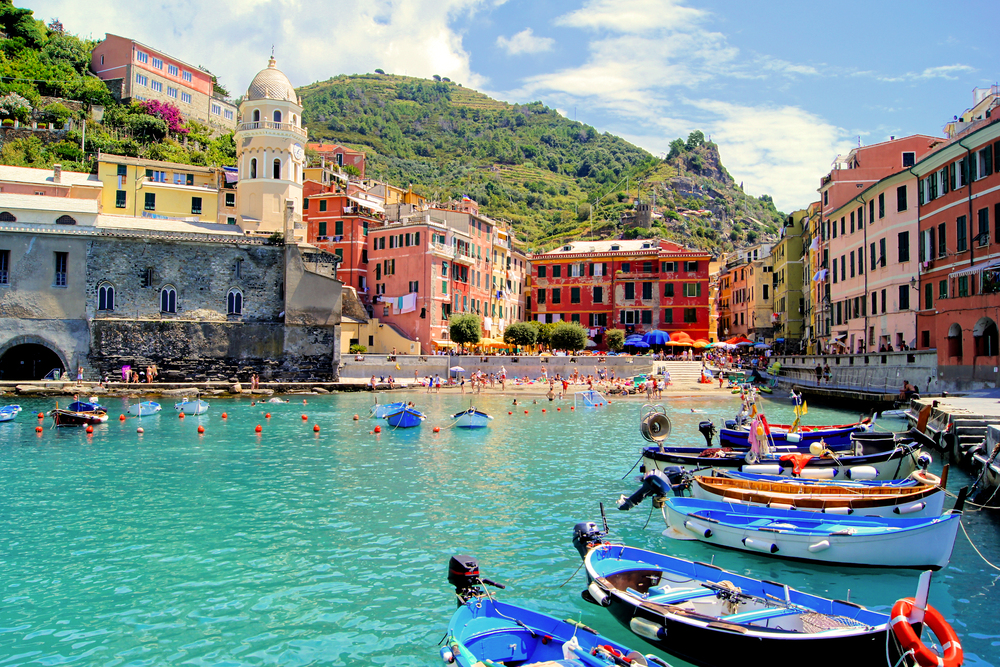
Vernazza, Cinque Terre, Italy. Photo: Shutterstock
“As we sit alone on chaise lounges after swimming at the indoor pool at our final hotel (we already lounged at their private beach in total solitude), we are looking out at a cloudless sky and the beautiful blue waters of the Tyrrhenian Sea. We have been treated like royalty for 10 days, with wonderful drivers and incredible guides giving us the experience of a lifetime. Although we still enjoy planning our trips sometimes, there is something to be said for having everything done for you by a first-class tour agency. Spoiled? Just a bit!
After speaking with Andrea via Zoom, she planned a wonderful 10 days to Florence, Tuscany and the Cinque Terre for our celebration. She recommended hotels, tours, and restaurants for us to decide upon, as well as guides and drivers to take us around. We wouldn’t change a thing and only wish we had extended the trip a little longer! We loved all the hotels, which were in perfect locations, had wonderful breakfasts, and were planned in the perfect order of the trip. Finding Andrea through The WOW List was easy, and we would absolutely do it again in the future. Thank you for our trip of a lifetime!” —Robin and Warren Levy
Read more reviews of Italy trips. To get your own WOW trip, start with our trip questionnaire, reached via the black button below.
START A TRIP TO ITALY
40th anniversary trip to the Maldives: “Emma arranged for a special anniversary dinner on the beach, with a view of the stunning sunset…”
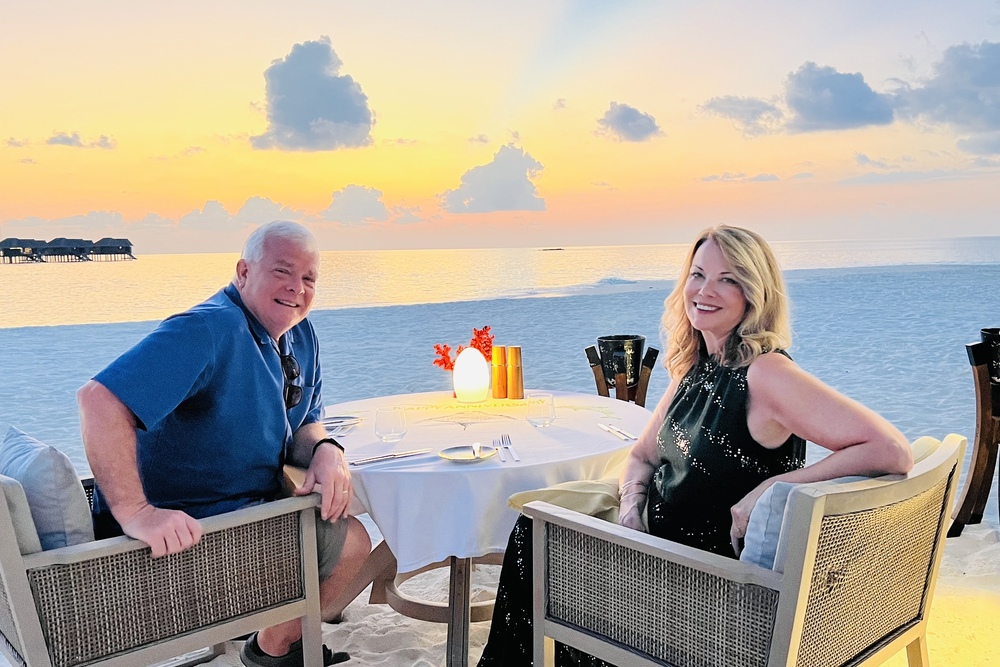
Barbara Mace and husband Joe sit down for an anniversary dinner on the beach at the Vakkaru Maldives resort.
“We worked with Justin to plan the trip, and he did a fantastic job. We traveled to Malé, the capital of the Maldives, and then took a seaplane to Vakkaru Island and the Vakkaru Maldives resort. While waiting for the seaplane, Vakkaru had a private lounge for its guests. The seaplane was a great experience, taking off from and landing in the water, and we had beautiful views of the Indian Ocean.
At the Vakkaru International Airport (a pier off the island), we were greeted by many, including Emma, our butler, and Patrick Duff, the resort manager. Emma was the Best Butler Ever! Emma greeted us by name, and then took us on a quick tour of the island. Our overwater bungalow was beautiful. In addition to the indoor living room, bedroom, dressing area, and luxurious bath, we had an outdoor living room, outdoor dining room, lounge chairs, and a full-size pool with ocean views. We were also given a bottle of champagne in the room.
Vakkaru is in the Baa Atoll, which has blue holes. These suddenly deeper bodies of water, denoted by the sudden deep blue color, have more and varied aquatic life. There were several blue holes right off the island—so beautiful.
The resort has complimentary bikes for our use; we biked to breakfast every morning! We enjoyed lounging by and luxuriating in our residence pool immensely. Our room had steps to the ocean, which we used for snorkeling.
Emma arranged for a special anniversary dinner at Vakku (the resort’s signature restaurant) on the beach, with a view of the stunning sunset. Emma and Chili (housekeeping) decorated our bed and drew a bath for us in the huge tub that evening. Emma also wished us a happy anniversary in sand art outside our door. There were so many special touches for our stay as well as for our anniversary—we are grateful for the personal service!” —Barbara Mace
Read more reviews of Maldives trips. To get your own WOW trip, start with our trip questionnaire, reached via the black button below.
START A TRIP TO MALDIVES
15th Anniversary trip to Paris: “Only Philip’s office could arrange an over-the-top private river cruise on a Venetian river craft…”
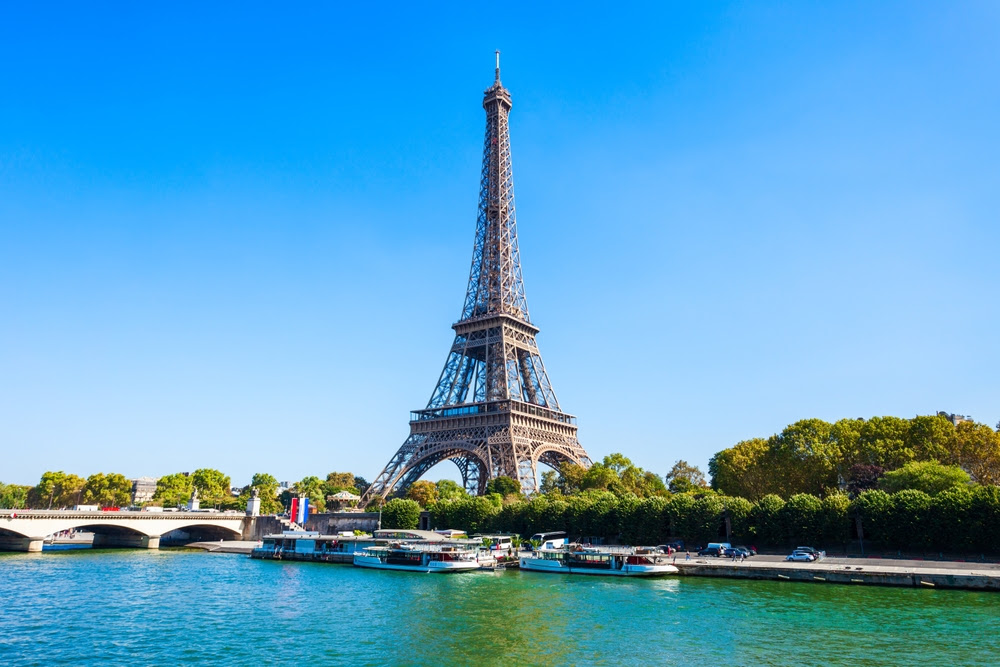
The Eiffel Tower in Paris, France. Photo: Shutterstock
“Philip and his team did an outstanding job in planning, delivering and communicating our dream 15th Wedding Anniversary trip. In our initial interview with Philip, he listened to our interests in art, architecture, history, food and wine. From that point, he and his team began to develop an itinerary for us that was everything we dreamed of and more.
We started our 16-day adventure, beginning with Provence, then Lyon, and ending in Paris. In Provence, our personal guide, Cedric, drove us through beautiful countrysides loaded with red poppies, Market Day, beautiful historic hillsides villages and led us through the worlds of Impressionist artists, like Van Gogh, Cezanne, Dora Mar, and a modern art sculptural collection in a vineyard. We visited the best wineries in the region of Chateauneuf du Pape, walked inside the UNESCO Roman aqueduct of Le Pont du Gard, toured small historic villages learning about the impact and historic value.
In Lyon, we were met by Sebastian, our private tour guide for the next two days. We learned besides Lyon being the Food Gastronomy center of the world, the historic importance of Lyon in French history and how the weaving industry and craftsmanship made this city. An unexpected experience was the private time we spent with a craftsman, Philibert Virginie at Maison des Canuts, who took us through the labor-intensive loom weaving of the Renaissance. For our final day, Sebastian took us to his family-owned vineyard and winery in Beaujolais. Here was another WOW moment.
In Paris, for our last night, we had to do the Seine River Cruise. But only Philip’s office could arrange an over-the-top private river cruise on a Venetian River craft. Looking at Paris from the River gave us the full glory of this beautiful city. A bottle of Roederer champagne aboard our tour added the sparkle and the effervescence to enjoy the Eiffel Tower, Alexander Bridge, Notre Dame and Île de la Cité even more. What a great way to end our French adventure.” —Tom Festa
Read more reviews of France trips. To get your own WOW trip, start with our trip questionnaire, reached via the black button below.
START A TRIP TO FRANCE
25th Anniversary trip to Panama: “I never would have found this hotel on my own. It is on a private island…”
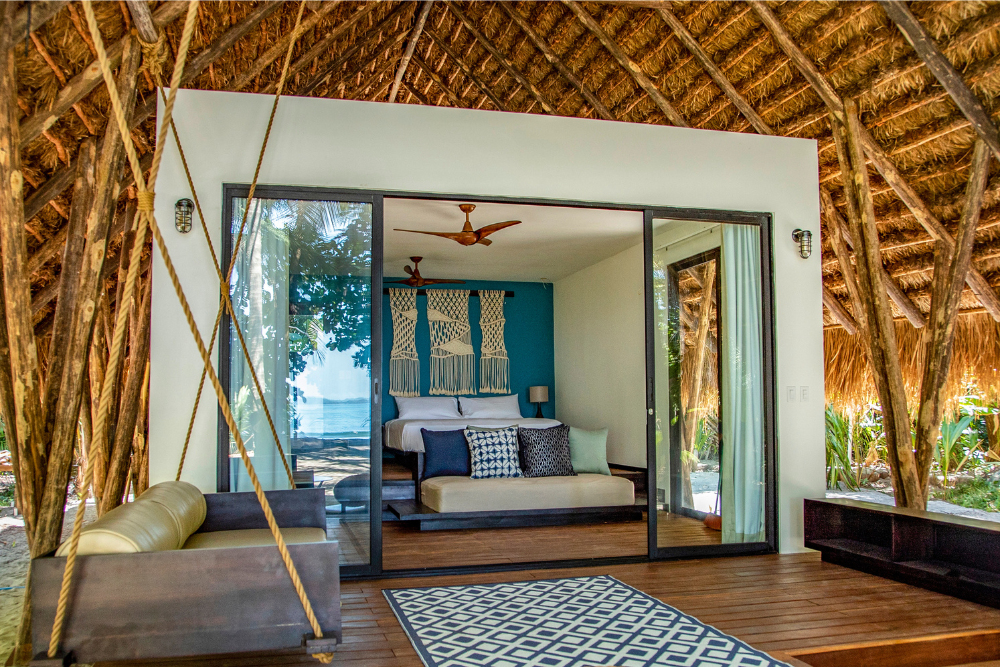
An eco-friendly private-island resort, Isla Palenque is on Panama’s Pacific coast. Photo: Isla Palenque
“My husband and I had a fabulous 25th anniversary trip to Panama planned by Pierre. We started out with one night staying in the Old City in Panama City. At Pierre’s suggestion, we stayed at the American Trade hotel. It was fabulous. It was like a throwback in time but with all the modern luxuries. And the location was perfect for exploring the Old City and going out to eat. Pierre arranged a dinner reservation at a nearby restaurant that could accommodate all of my husband’s dietary restrictions. To our surprise, they seated us at a secluded table on a balcony overlooking a plaza.
The next day was on to Isla Palenque. Absolute paradise. Pierre arranged all of the travel, from the car to the airport to the pickup at the airport in David and the boat ride then to Paradise. I never would have found this hotel on my own. I have never been to such a fabulous hotel. It is on a private island. 400 acres. Eight casitas and one villa. There are nearly 50 staff members for less than 20 guests. The water was 85°. The sand was soft as silk. The restaurant was excellent and very accommodating to our dietary restrictions. We went snorkeling, see kayaking, paddle boarding and dolphin watching. We still had plenty of time to do nothing on the private beach.
On the final day we had about 8 hours in Panama City before our evening flight back to the States. Pierre arranged a private guided tour of the Canal and the city. That was also fabulous.” —Randi Maidman
Read more reviews of Panama trips. To get your own WOW trip, start with our trip questionnaire, reached via the black button below.
START A TRIP TO PANAMA
30th Anniversary trip to Antarctica: “When we entered the igloo, the ship’s crew had it decorated with anniversary décor along with champagne…”
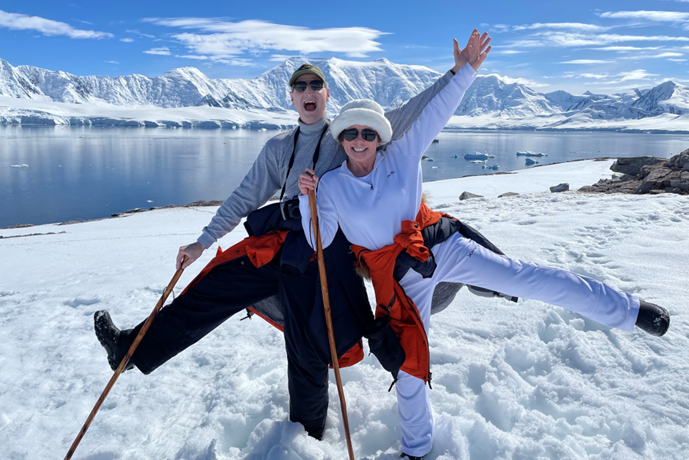
Jeff and Lisa Wellen having a ball in Antarctica.
“From the first Zoom call with Ashton and Christine, we knew we were in great hands for our dream trip to Antarctica. On this trip, we were celebrating our 30th wedding anniversary and I asked if there could be something special I could do to surprise my wife on the trip. They took care of everything. They first surprised us with an anniversary bottle of champagne and a cake at our hotel in Santiago.
One of the things you can do on the ship is sleep in an igloo on the top deck. It was first come, first serve. We were able to get the igloo reserved for one night. When we entered the igloo, the ship’s crew had it decorated with anniversary décor along with champagne and treats. It was so emotional that it brought my wife and I to tears.
The Lindblad Resolution was spectacular, and we are so thankful Ashton pushed us to take this ship. This is their newest ship and we saw every day why this is the best ship to take to the Great White Continent….This ship’s capabilities allowed us to go to the eastern side of the peninsula. Not one of the other sixty ships in the area had the capabilities to do that. It allowed us to sail through the Weddell Sea and see enormous tabular icebergs the size of three or four football stadiums, 100’s of Emperor Penguin chicks, thousands of penguins, pods of killer whales and watched pods of humpbacks eating fifty yards from the ship.” —Jeff Wellen
Read more reviews of Antarctica trips. To get your own WOW trip, start with our trip questionnaire, reached via the black button below.
START A TRIP TO ANTARCTICA
50th Anniversary trip to Croatia, Italy, Slovenia, and Switzerland: “Following in some of the footsteps of our original honeymoon…”
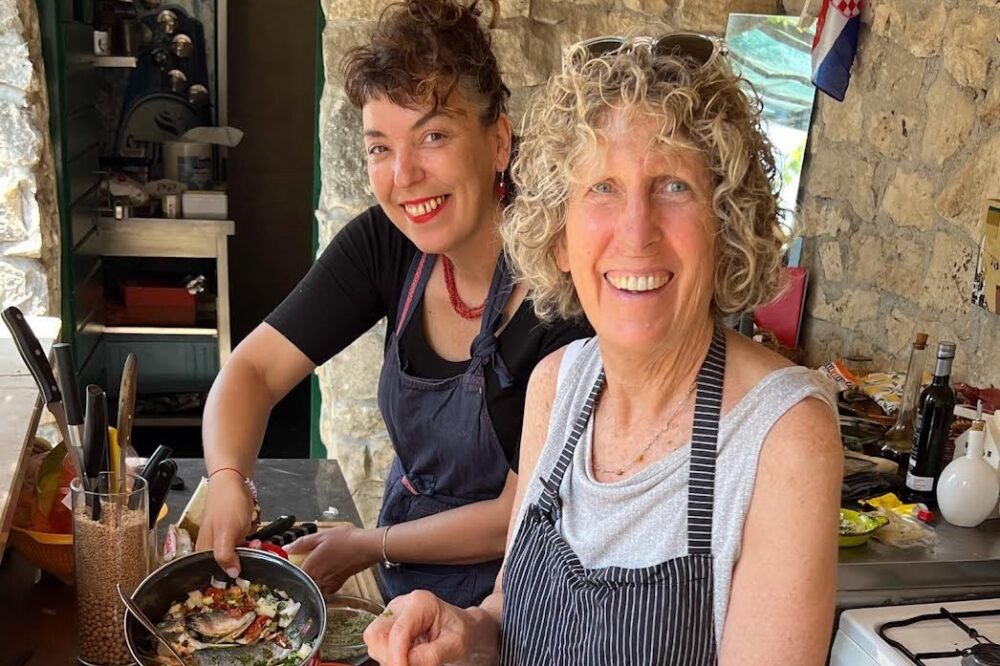
Lisa Redburn at a cooking lesson at Tatjana Ciciliani’s home in Trojir, Croatia. Photo: Traveler Tom Redburn
“Lisa and I have had a lot of wonderful adventures in our more than 50 years together, but for our 50th wedding anniversary trip to Italy, Croatia, Slovenia and Switzerland, the extraordinary planning of Claudia and Luisa took our travel experience to a whole new level. It’s true that Europe was already getting overrun with tourists during our six-week trip, but we rarely felt it because time after time Claudia and Luisa arranged guides and outings that took us away from the crowds and to hidden corners we never would have found on our own.
There are too many highlights to include all of them, but some of our most memorable moments were a gastronomic walking tour of Bologna with Giacomo, a guided E-bike ride along the Appian Way in Rome with Gioia, who spontaneously added in a visit to the multi-layered Church of San Clemente when we expressed interest in it, a guided cable car ride and walk to the top of Anacapri with Melania, and two hikes in the Dolomites with Paola, who revised her plans to reflect our own capacities for strenuous walking (there’s a theme here: nearly all our best guides were women). And that’s just Italy.
In Croatia and Slovenia, we enjoyed a guided walk up Mt. Srd above Dubrovnik, where two women from Piknik Dubrovnik had set up an extraordinary sunset picnic dinner just for us, two guided trips (one by E-bike, the other walking) in the backcountry of the islands of Korcula and Hvar that both included amazing private lunches far from the madding crowds, and an extraordinary tour by the charismatic Mario Bartulovic of his family’s winery and steep-sided vineyard on one of our only rainy days. We nearly cancelled but are so thankful that we didn’t. We also had a food shopping and cooking session with the charming Tatjana Ciciliani at her home in Trojir, near Split.
And the discovery of the trip, for us, was Slovenia, where we dined at the famous Hisa Franko (a 3 1/2-hour, 18-course tasting menu from chef Ana Ros), with a stay at tiny Chalets Nebesa, which is not to be missed if you are anywhere in the area. Four-room Nebesa (reserve far in advance!) is owned and run by Ana’s charming mother, father, sister and brother-in-law, and enjoys an extraordinary view in the Julian Alps over Kobarid, where there are still trenches from the devastating fighting along a front of World War I.
I could go on and on, but suffice it to say that, with only one or two exceptions, every guide was sensational, just about every accommodation was terrific, and nearly all the reserved dinners were a delight. And that’s not to mention our WOW Moment from Wendy of a lunch and wine tasting at the extraordinary BIBICh Winery, on a day when we traveled from Split to Zadar, right after visiting Krka National Park.
Luisa and Claudia took my idea of following in some of the footsteps of our original honeymoon trip to Europe (10 months on $6,000 in 1973-74 to Italy, Yugoslavia, Austria, Greece, Switzerland and France) and built it into an equally memorable highlight in our lives together. We spent our actual anniversary at a pension in the car-free Fex Valley in the Engadin that was one of the top places we stayed on our honeymoon. Our trip lived up to everything I had been dreaming about since we first thought of the idea more than two years in advance.” —Tom Redburn
Read more reviews of Central Europe trips. To get your own WOW trip, start with our trip questionnaire, reached via the black button below.
START A TRIP TO CENTRAL EUROPE
50th Anniversary trip to the Galapagos Islands: “A bouquet of five dozen roses and a bottle of wine…”
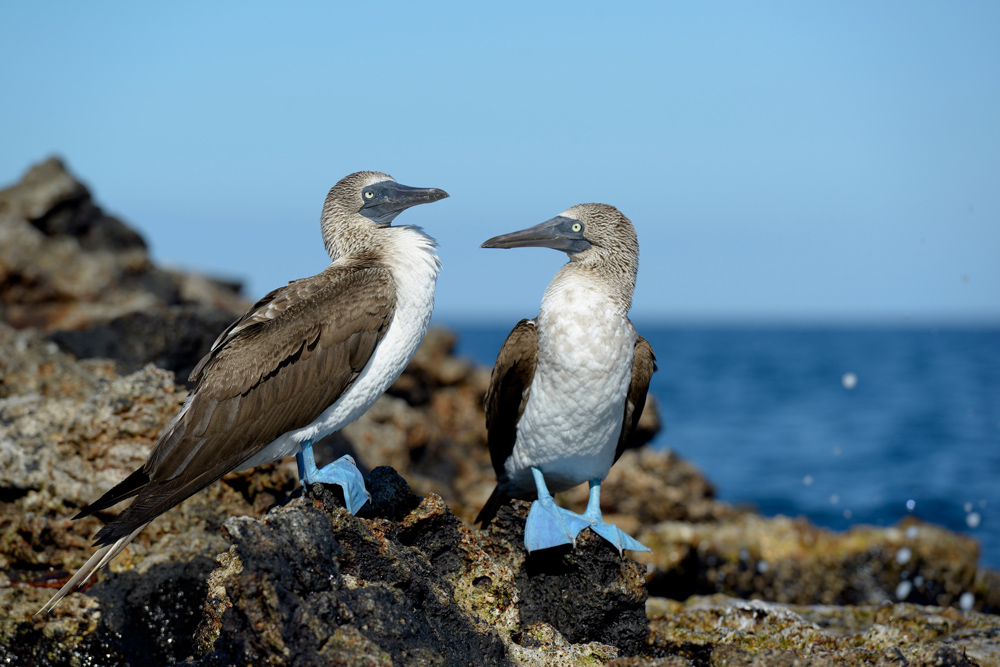
Blue-footed boobies in the Galapagos Islands. Photo: Shutterstock
“We just returned from Ecuador and the Galapagos Islands celebrating our 50th Anniversary. We shared with Allie our desire to focus on the Galapagos: the variety of wildlife, geography, and culture. The trip was wonderful. Celeste, our mainland guide, met us at the airport and checked us in at the Hilton Colon Guayaquil. Our room, on the executive floor, was decorated with rose petals covering the bed and an assortment of chocolates in celebration of our anniversary (thanks, Allie).
We flew to the Islands and boarded the Endemic, a 16-passenger catamaran with floor to ceiling windows and balconies in each large stateroom. Carlos, a native of the Galapagos Islands, was our terrific naturalist guide. We visited the islands of Santa Cruz, Santiago, Bartolome, Isabella, Fernandina, and Rabida. We snorkeled with marine iguanas, crabs, sharks, penguins, green Pacific turtles, flightless cormorants, and sea lions. We also saw land iguanas, flamingos, blue-footed and Nazca boobies, giant tortoises, pelicans, hawks, frigatebirds and many other endemic species. We took numerous hikes learning about the geology and geography of the Islands and viewing wildlife. Carlos kept us very busy, with four planned activities each day, including hiking, snorkeling, kayaking, paddleboarding, and panga rides. Guests were welcome to stay and relax onboard if they wanted to skip an activity.
Celeste escorted us from the Guayaquil airport to the Hotel del Parque on our return to the mainland. We were greeted in our suite with a bouquet of five dozen roses and a bottle of wine in celebration of our Anniversary (thanks again, Allie). With Allie’s advice and help, this was a once-in-a-lifetime experience.” —Scott and Lorna Conroy
Read more reviews of Galapagos trips. To get your own WOW trip, start with our trip questionnaire, reached via the black button below.
START A TRIP TO THE GALAPAGOS
20th Anniversary trip to Italy: “Exploring the gardens and farm…eating the farm-to-table food…all set in a serene oasis in the heart of Tuscany…”

Traveler Andrea Phillips and family enjoying a summer evening in Tuscany during their WOW trip.
“My family of four, with two teen girls, had a wonderful and action-packed trip to Italy in mid to late June covering Umbria, Tuscany, Florence, Bologna, Lake Como and Milan, planned with Maria. We stayed at hotels that were the perfect fit (like the one in Florence that had a rooftop pool to beat the heat!), had the best rooms and locations and such personal service, all due to Maria’s connections. Italy was busy with travelers while we were there, but I can honestly say that it did not affect our plans at all, as Maria had it coordinated and timed out so perfectly.
This trip was also to celebrate our 20th wedding anniversary and Maria had suggested two stops along the way that were very special. Wow, were they ever! Borgo Santo Pietro, a working farm & wellness resort in west Tuscany, and Grand Hotel Tremezzo, near Bellagio in Lake Como. Both resorts resembled something made out of a dream. Beautiful landscapes, amazing service, delicious food, gorgeous rooms, and so many amenities. At Borgo Santo Pietro, you had the feeling of being in a fairy garden wherever you went and around every corner, there was something new to discover. Bicycles & e-bikes, animal-tending sessions, exploring the gardens and farm, tennis courts, the spa & classes, eating the farm-to-table food in their lovely restaurants, all set in a serene oasis in the heart of Tuscany. We did not want to leave!
The other amazing stop was the Hotel Grand Tremezzo, which is a standout feature on any Lake Como ferry ride with its striking architecture, gardens and in-lake floating pool in front, so actually staying there was quite a treat! The inner decor of the hotel and outer gardens were magical and so were the concierges and staff that were always ready to help. We enjoyed the spa, the many pools and casual restaurants and even had a private wakeboarding session one morning on the Lake! That is a memory that will never be forgotten and made this stop my girls’ favorite! Maria also arranged a great private boat tour to visit Bellagio and the famous villas of the lake with a lovely private guide, who had access to go inside the villas and educate us on all of the historic collections and stories. It was fascinating!
We were surprised with our WOW Moment early in this trip. We were given a special opportunity to be dressed up for the night in the Foligno Quintana traditional costumes for their festival later in the week. That was a unique experience and one that we would never have been able to arrange or even be allowed to do without Maria’s network in Italy. Thank you Wendy and Maria!
We had many other activities that were also highlights. In Umbria, we went canyoning through a roaring mountain river, had an in-depth local cooking class, a gelato-making class, and went truffle hunting with the cutest, yet very talented dogs. In Siena, we had lunch on the exact alleyway where the Mille Miglia Race of Classic Cars were driving through to enter the Il Campo (definitely because of Maria’s connections in Italy!). In Florence, we climbed the Brunelleschi Duomo, took a lively pizza-making class, saw the awe-inspiring David & the Uffizi Gallery, and took a relaxing Arno River boat ride. In Lucca, we rode bikes around the medieval walls where we crossed paths with a special parade of classic Fiat 500’s. In Bologna, we visited one of the world’s oldest universities, and in nearby Maranello, drove Ferraris through the streets of the town where they are made! In Milan, we had the privilege of being able to see the Last Supper, which was breathtaking. Needless to say, we were very busy on this trip!
It was a trip full of variety, which I had specifically asked Maria for when planning this vacation last fall, and she delivered! When we head to Italy again, I will definitely have Maria help me plan our route around the country, but next time, we will stay longer than 3 nights at each stop to really experience the culture and have some more free time to explore on our own!” —Andrea Phillips
Read more reviews of Italy trips. To get your own WOW trip, start with our trip questionnaire, reached via the black button below.
START A TRIP TO ITALY
50th Anniversary safari: “A bush dinner with an open bonfire and full moon celebrating our anniversary. Local folks came in their native dress, danced and sang…”
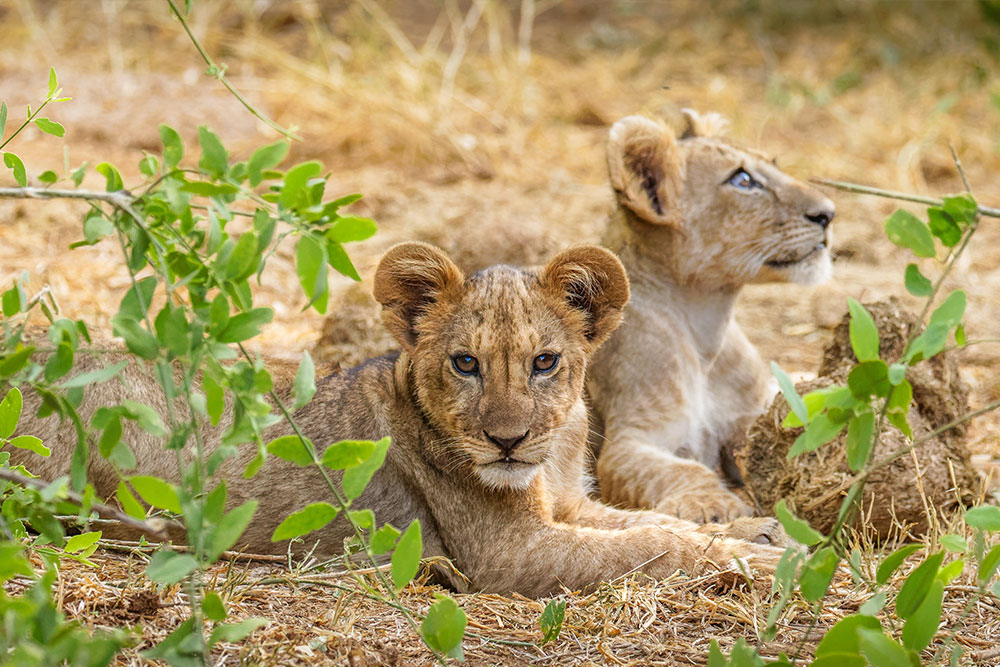
Two young lion cubs at the Samburu National Reserve in Kenya. Photo: Shutterstock
“To celebrate our 50th wedding anniversary, we decided we wanted to take our two daughters and their families on an African safari. The trip Daniel planned for us was fantastic. Since we and our daughters live in 3 different U.S. cities, we met in Nairobi and stayed for 2 nights. The accommodations at the House of Waine were outstanding and the staff very accommodating, given two of our arrivals were very late and the 4 grandkids varied in age from 6 to 13. This gave us time to get over some jet lag and see some of Nairobi. We then flew via private charter for 4 nights to a Saruni camp in Samburu, followed by another private charter to a Saruni camp in Maasai Mara for 4 nights, before returning to Nairobi for our flights home.
The staff and guides at the camps were friendly and went out of their way to please us. They had a special celebration for our anniversary at all three locations. They also celebrated one of our son-in-law’s birthdays while we were on the trip with a cake and singing at each location.
Samburu is semi-arid and Maasai Mara lush and green. It was great to see the two different areas and experience the different as well as similar animals in each. Daniel is the one that recommended the two different areas and we are quite happy he did. The pace of the trip which he planned was good; having 4 days at each camp gave us the time to truly experience and appreciate each area.
Our experience suggests that other travelers should pace their trip similar to ours. Two of our international flights were extremely late and having 2 nights in Nairobi before going to the safari camps allowed us to catch our breath. Also spending 4 nights at a camp allows you to settle in and appreciate the uniqueness of the location.
Seeing all the animals with our extended family at each location made this a special travel experience. Some of the most outstanding were seeing the 5 animals unique to the Samburu area, lions along with some cubs, leopards, cheetah, elephants, giraffes and hippos. The sundowners and meals in the bush also were very special times. Of these, the most memorable was having a bush dinner with an open bonfire and full moon celebrating our anniversary. Local folks came in their native dress, danced and sang. They encouraged the kids and adults to participate and we all had a grand time. We would not have had all these wonderful experiences if it had not been for Daniel.” —David Magdanz
Read more reviews of African Safari trips. To get your own WOW trip, start with our trip questionnaire, reached via the black button below.
START AN AFRICAN SAFARI TRIP
Norway: “We were serenaded by a musician playing a Norwegian Hardanger fiddle…”
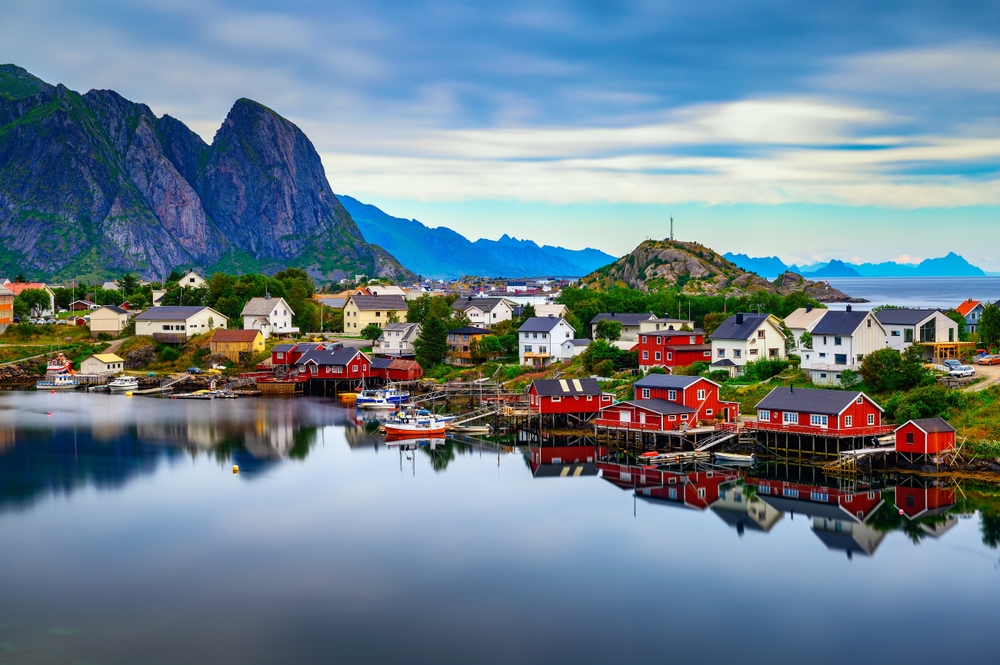
Reine village surrounded by high mountains in Lofoten Islands in Norway. Photo: Shutterstock
“We traveled from Oslo to Nesseby, which is past the Arctic Circle near the Russian border, spending 3 nights each in 7 venues. Torunn tailored the trip to our preferences, which lean toward a bit of adventure and agri-tourism. In the north we stayed at a 2-room lodge run by a Sami fisherman and spent a morning crab fishing on his boat and an afternoon on an archaeological walk with his wife. He was an excellent cook and served foods he and his wife had caught, shot, or foraged from the landscape. He served the crab we caught in 3 different preparations, each of which was excellent.
The next day we toured the area with a Sami reindeer herder. We also spent time on a small island well out in the Atlantic where we kayaked along the seashore to a lighthouse; foraged in Trondheim with a professional forager picking plants for our lunch; visited a dairy near Oslo producing a unique cheese product and advocating a more humane way to treat dairy cattle; and spent 3 nights at a farm with a gourmet chef specializing in dishes featuring fruit and vegetables from the farm. We received very personal treatment from the hosts at our smaller venues and each of them indicated how much they valued their relationship with Torunn.
Our wedding anniversary occurred during the trip and Torunn arranged a WOW Moment for us that was great fun. We were in Aurland at a farm set in a stunningly beautiful valley with steep mountainsides and many waterfalls. We were serenaded by a musician playing a Norwegian Hardanger fiddle, a type of double-strung violin. The venue was a small shelter with a magnificent view, and we toasted ourselves and the trip with homemade pear Kombucha made by the chef. We thoroughly enjoyed it.” –George Stephens
Read more reviews of Norway trips. To get your own WOW trip, start with our trip questionnaire, reached via the black button below.
START A TRIP TO NORWAY
20th Anniversary trip to Tahiti: “No noise other than the wind, the waves, and the coconut trees…”
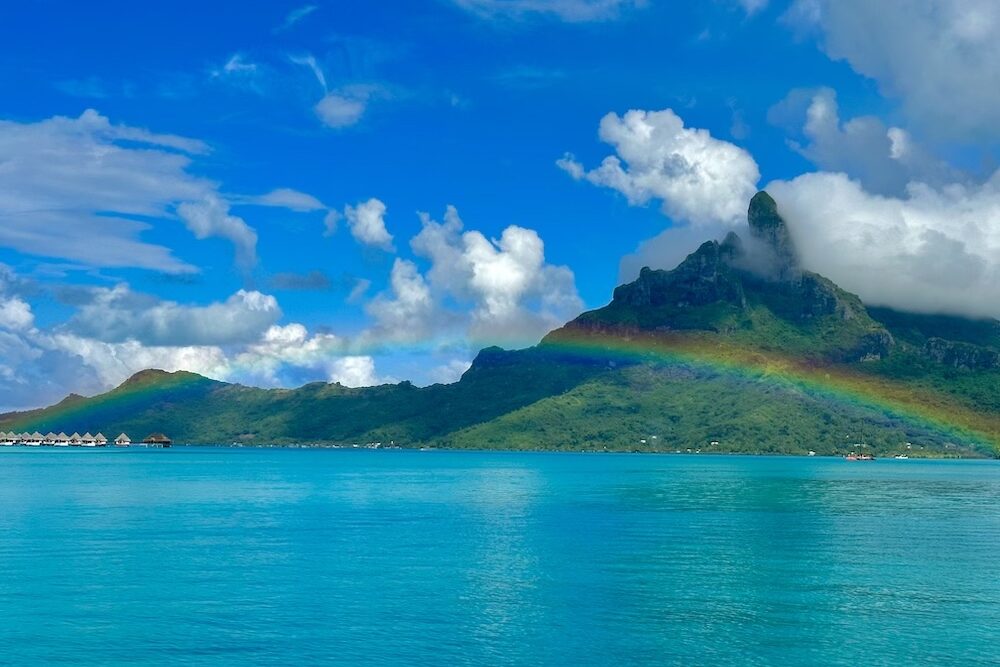
Rainbow over Tahiti. Photo: Traveler Michael Ruma
“We traveled to Tahiti, visiting three different islands. I had held off on faraway, remote beach destinations for decades under the notion of the value for your money and the ease of travel of Mexico and the Caribbean. But given this trip was meant to celebrate our 20th wedding anniversary, I threw caution to the winds and went all in.
Getting to Tahiti is not the hard part. The adventure starts as soon as you begin booking your inter-island air travel, boat transfers, a sundry of activities, and actually coordinate all of the above to achieve a relaxing visit to the islands. We did not have to worry about any of this with Kleon at the helm. He asked important questions about our likes and dislikes and then crafted an itinerary which slowly evolved into a spectacular journey with three ever-better chapters in a jaw-dropping beautiful region.
Our first stop was Vahine Island Resort and Spa. With nine acres and only a handful of rooms, this small island stop helped us relax, reset and realize what truly is Tahitian beauty and calm. No noise other than the wind, the waves, and the coconut trees. No thinking about meal choices with simple, but elegant prix fixe dinner menus. No people (there were a few other couples which we visited with over meals and activities), but a private tranquil island where my wife and I watched the sunset on the dock with baby blacktip reef sharks swimming underneath, cracked open fresh coconuts when thirsty, and went paddle boarding in the large bay between Vahine and Tahaa…all alone. The privacy, intimacy, and peace on this island with such a limited number of guests began to open my eyes to why we made the long journey to this beach.
We traveled to Bora Bora next. A water taxi with an impromptu stop to see over a hundred blacktip reef sharks in pristinely clear water was an unexpected highlight during our ride to the airport. No airport security made the trip even better. Upon arrival to Bora Bora, another boat awaited to transfer us to the St. Regis. While significantly more tourists visit this island, the number of hotels and additional guests did not diminish the striking beauty of Mount Otemanu. We enjoyed our over-the-water bungalow immensely, in particular, leaping off the deck into the refreshing turquoise lagoon water. We chose to refresh our diving skills and were incredibly fortunate to have two massive reef mantas swim two feet over our heads while we gazed upward from 40 feet below on the white sand bottom.
Immensely relaxed, in beach mode and thrilled with our first two hotel stays, we topped off our travel with our final nights at the Brando in Tetiaroa. Lunch at your private pool, scuba diving outside amongst a mountain of colorful coral, cocktails at sunset at the bar above the treeline…simply ask and your wish is their command. Getting to the hotel is equally spectacular using a singular private charter which whisked us to and from paradise without a worry and with ease. And for my wife who seems to attract mosquito bites wherever we may be, the hotel has an answer for that as well. Their island scientists eradicated the pest from the island without the use of any chemicals, allowing for outdoor enjoyment unlike any other experience where you may encounter the often annoying bugs. The experience at the Brando can only be described as sublime perfection, where any of your needs or desires instantly come to fruition.
Tahiti is burned into our memories with its unforgettably blue waters, tranquil relaxing days, vivid and abundant sea life and unique island vibes. Now home, we daydream daily of when we will return.” —Michael Ruma
Read more reviews of French Polynesia trips. To get your own WOW trip, start with our trip questionnaire, reached via the black button below.
START A TRIP TO FRENCH POLYNESIA
25th Anniversary trip to Italy’s Cinque Terre: “All of our dinner reservations included the best tables and the best views…”

Vernazza, Cinque Terre, Italy. Photo: Shutterstock
“My husband and I had a fabulous trip to the Cinque Terre, Italy, for our 25th anniversary.
I had an initial meeting over Zoom with Anna to discuss the purpose of our trip and our style of travel, things we enjoy, etc. and then Anna basically took it from there. She came up with a suggested itinerary which we then discussed and finalized together. I had no idea what to expect and we were WOWED from the moment we arrived. All of our transfers included first-class transportation services, each of our hotels provided a complimentary upgrade along with a welcome gift, and all of our dinner reservations included the best tables and the best views.
We especially loved our two boat days: One included a tour of Portofino and lunch at a restaurant overlooking the cove of San Fruttuoso, and another included a trip to Portovenere and lunch onboard in a beautiful bay. Anna’s advice was spot-on and we felt as though we were in excellent hands. We had the perfect balance of activities and down time and never felt overscheduled.” —Kim Brown
Read more reviews of northern Italy trips. To get your own WOW trip, start with our trip questionnaire, reached via the black button below.
START A TRIP TO NORTHERN ITALY
30th Anniversary safari: “At each stop we were made to feel so special, with an incredible ‘sundowner’ experience at Old Drift, along with cakes and celebrations…”
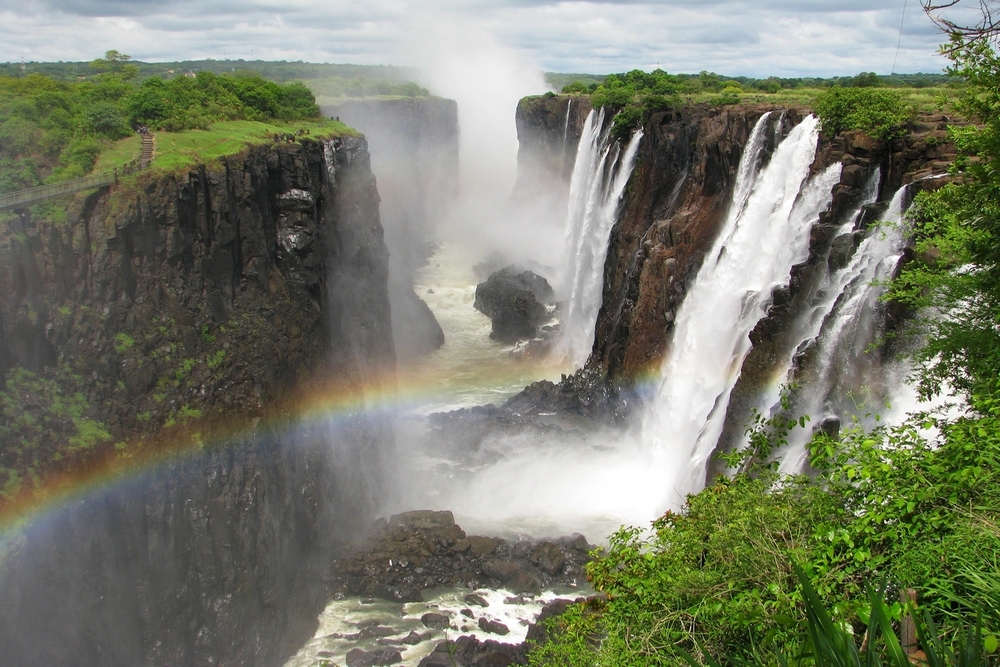
A rainbow hangs in the mist from Victoria Falls, on the Zambezi River. Photo: Shutterstock
“Our 30th wedding anniversary was coming up, and I landed on an African safari as the perfect way to celebrate. We’ve just returned from this spectacular trip: Four days in Cape Town visiting Table Mountain, Boulders Beach, the Cape of Good Hope, the Victoria & Alfred Waterfront, Kirstenbosch Botanical Gardens and of course the Winelands, along with a fantastic lunch at Glen Carlou; two nights at Victoria Falls in the lovely Old Drift Lodge; and six nights in Botswana: two at Savute, two at Camp Moremi, and two at Shinde. All the accommodations were outstanding, and the transport between camps was flawless.
At each stop we were made to feel so special, with an incredible ‘sundowner’ experience at Old Drift, along with cakes and celebrations at each safari camp for our anniversary. It was clear that Julian and team had taken exceptional effort to ensure all the camps were aware of our special event, which was a wonderful surprise that we really appreciated.
This complicated trip was made so easy! While I often plan trips myself, I can highly recommend arranging a trip like this through an expert. Julian’s services took all the stress out and we were left with nothing but fantastic fun and great memories.” —Nancy Megehee
Read more reviews of Southern Africa trips. To get your own WOW trip, start with our trip questionnaire, reached via the black button below.
START A SAFARI
25th Anniversary trip to Portugal: “They secured one of the few very best rooms with the best view at our resort on the Algarve…”
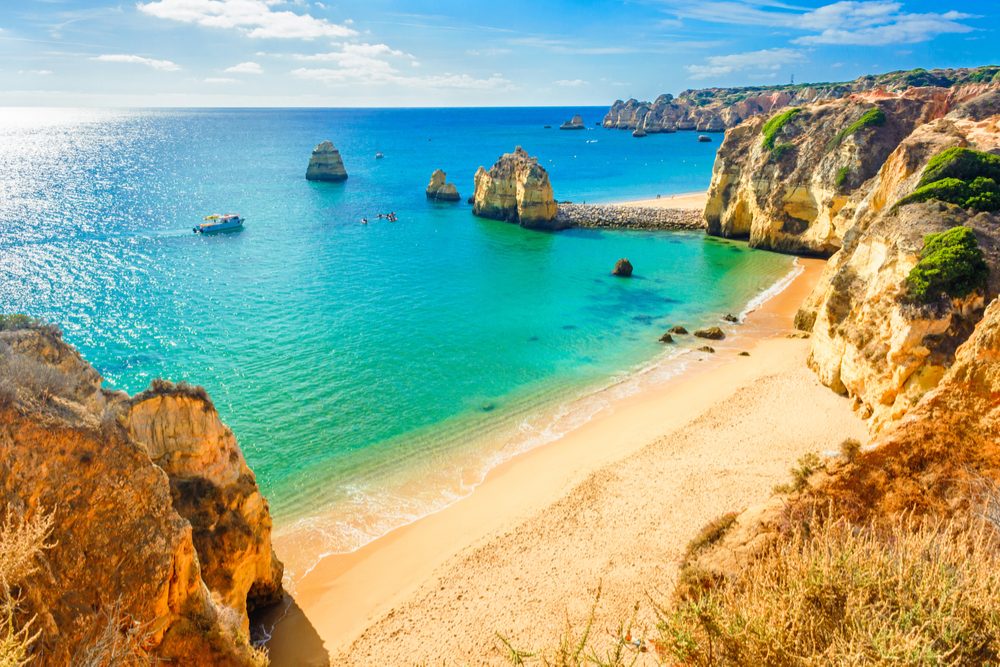
A beach near Lagos in Portugal’s Algarve region. Photo: Shutterstock
“Goncalo and his team planned a Portugal trip to celebrate our 25th wedding anniversary. They secured one of the few very best rooms with the best view at our resort on the Algarve, which we could not have obtained ourselves. Very few rooms at the very large hotel had ocean views, so this was a big deal (we even had two balconies facing the ocean). All of their recommendations as to where to stay were great and took into account our preferences, which we discussed in a planning call. They planned great activities, like a lovely large private sailboat from Sintra back to Lisbon, a visit to an observatory (at night of course), and a private cruise along the cliffs of the Algarve. We would not have known about the lovely hotel converted from a farming village in the Alentejo if we hadn’t used a Portugal expert, and we wouldn’t have known which towns to visit. We loved the itinerary they planned and will use them again if we return to Portugal!” —Rita Solomon
Read more reviews of Portugal trips. To get your own WOW trip, start with our trip questionnaire, reached via the black button below.
START A TRIP TO PORTUGAL
Belize: “While my husband played golf, she arranged a tour for me of the Mayan ruins at Xunantunich…”
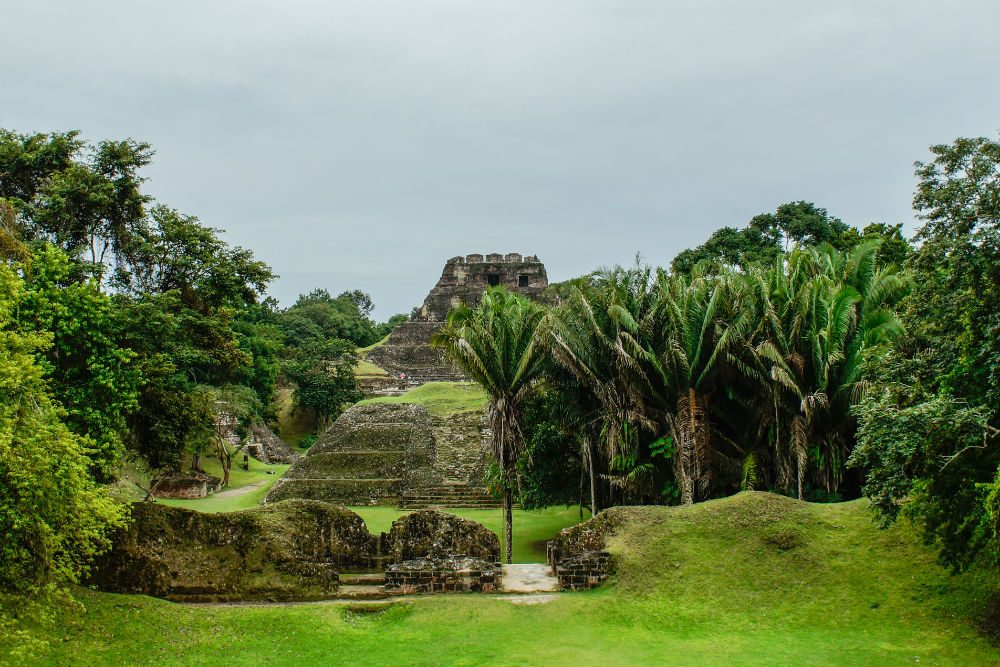
The Mayan ruins at Xunantunich. Photo: Absolute Belize
“Patricia is my new best friend. We told her that our trip to Belize was to celebrate our wedding anniversary. She listened to our wants and needs and more than delivered. She suggested that we split our January trip between inland and the coast and set us up with activities that satisfied both of our desires, since they were not necessarily the same.
My husband wanted to play golf, and Patricia made the arrangements for him. She satisfied our interest in culture and history with the Garifuna Cultural immersion. Additionally, while my husband played golf, she arranged a tour for me of the Mayan ruins at Xunantunich and a day at the San Antonio Women’s Co-op to learn about the ancient Mayan life. Patricia joined me for my tour of Xunantunich, and my husband was jealous that he didn’t get to meet her in person.
On the coast we both wanted water sports. She arranged two wonderful boat/snorkel adventures for us, and one included a barbecue of freshly caught fish. Yes, my husband had the opportunity to reel in one fish while we were on the boat. I cannot say enough good things about how we were treated by Patricia, our guides, the staff of the hotels that she recommended, and the activities that she arranged.” —Bonnie Warton
Read more reviews of Belize trips. To get your own WOW trip, start with our trip questionnaire, reached via the black button below.
START A TRIP TO BELIZE
10th Anniversary trip to Peru: “When we arrived at our picnic, we were amazed to see a canopy tent popped up in a field that overlooked the Andes…”
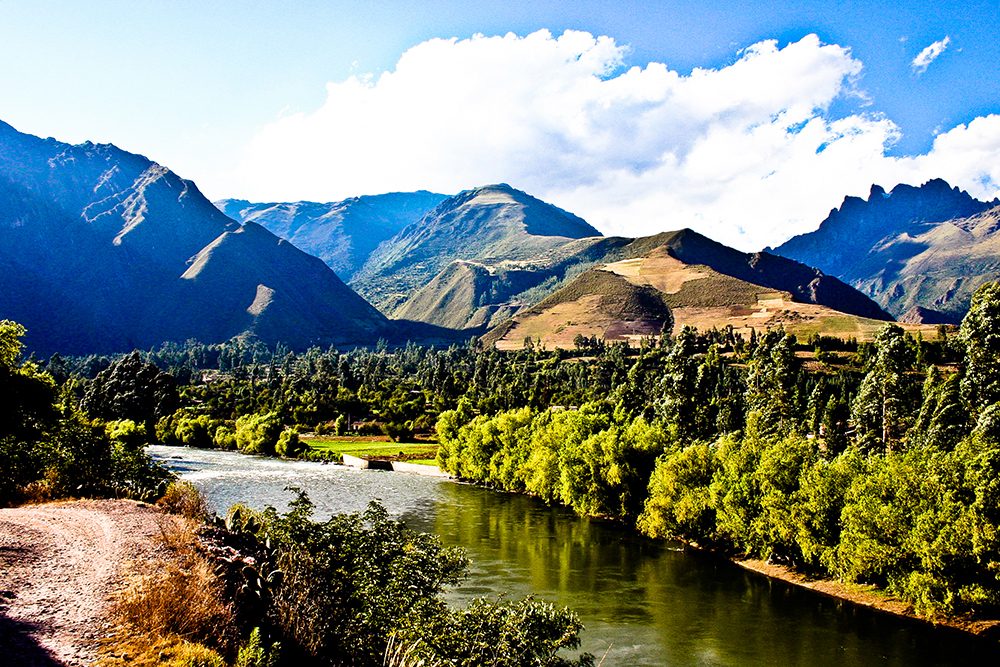
A quiet stretch of the Urubamba River, Peru’s Sacred Valley. Photo: Aracari
“Our favorite experience in Peru was on the afternoon of our 10th wedding anniversary. We thought we would be having a simple picnic lunch, but when we arrived at our picnic, we were amazed to see a canopy tent popped up in a field that overlooked the Andes. The table was tastefully decorated with linens, lace, fresh flowers, and local decor pieces. Wow! A three-man cooking team prepared a lovely four-course meal in a separate tent while we sipped wine. There was even a portable toilet in a third small tent! Nothing was overlooked. In fact, during our ten-day trip arranged by Marisol, no detail was left unturned, from our beautiful accommodations to our awesome local guide to the snacks in our vehicle. We had an incredible trip.” —Erica Stanforth
Read more reviews of Peru trips. To get your own WOW trip, start with our trip questionnaire, reached via the black button below.
START A TRIP TO PERU
30th Anniversary trip to Australia: “Stuart must have told everyone that we were celebrating an anniversary…”
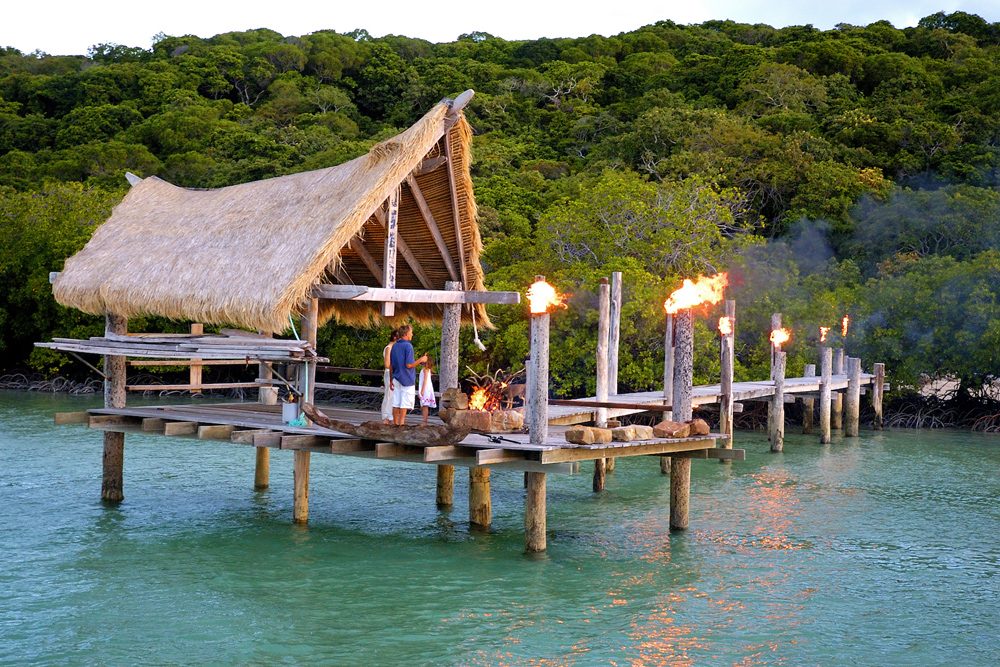
The remote Haggerstone Island resort at the Great Barrier Reef. Photo: Haggerstone Island
“Stuart planned the perfect trip for our 30th wedding anniversary: We spent three weeks in Australia, taking multiple in-country flights and visiting Melbourne, Tasmania, Kangaroo Island, Uluru, the Daintree Rainforest, and Sydney. We wanted luxury lodges and unique experiences, and our expectations were exceeded.
Stuart must have told everyone that we were celebrating an anniversary because, at each location, we received not only cards and good wishes but sometimes cakes or champagne or chocolates. But this is what blew us away: In Tasmania, at Saffire Freciynet, we tasted several excellent local gins one evening and commented to the staff on how much we liked them, and when we reached Sydney at the end of the trip, there was a gift of three bottles of gin and a lovely note from Stuart. That is one of the above-and-beyond gestures that made this trip extraordinary.” —Robin and Josh Madden
Read more reviews of Australia trips. To get your own WOW trip, start with our trip questionnaire, reached via the black button below.
START A TRIP TO AUSTRALIA
Disney World: “Everyone knew it was our anniversary!”

Happily Ever After fireworks at Disney World. Photo: Disney
“While we take fairly involved adventure vacations (safaris, a dog-sledding expedition, and scuba diving, rafting and trekking trips), none have involved the degree of planning that our recent Disney trip did! Disney World can be overwhelming: To maximize your time there, you need to carefully plan out your schedule for each day and manage restaurant reservations, show times, and Fast Passes.
Michelle’s advice was invaluable in this regard. She took into consideration that this was an adults-only vacation and made great suggestions such as visiting a practically empty and childless Magic Kingdom with an After Dark ticket. She managed to fit in a coveted reservation for Be Our Guest, and her recommendations for the Epcot Food & Wine Festival helped us navigate that fun event. Michelle’s hard work enabled us to have a wonderful anniversary trip—and everyone knew it was our anniversary because Michelle told them!” —Barbara Sheridan
Read more reviews of Disney World trips. To get your own WOW trip, start with our trip questionnaire, reached via the black button below.
START A TRIP TO DISNEY WORLD
2nd Anniversary trip to Spain: “Pablo was able to secure reservations at three Michelin-star restaurants…”
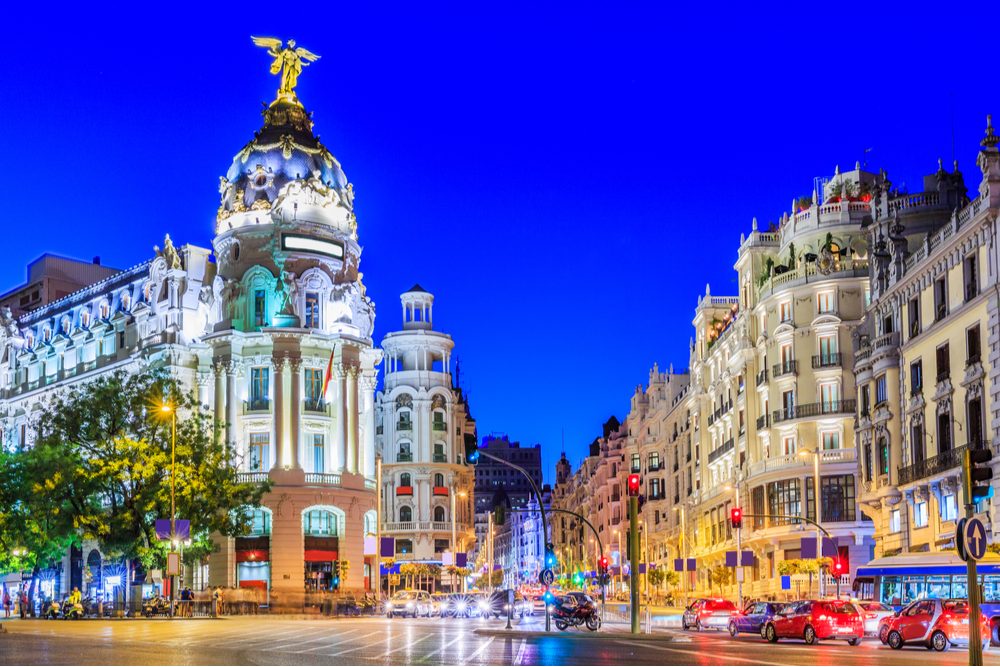
Madrid’s Gran Via shopping strip lights up at night. Photo: Shutterstock
“I used Pablo to arrange a celebration trip to Spain—Barcelona, San Sebastian, and Madrid—for my son and his wife for their 2nd wedding anniversary. One of their interests was to try different exclusive restaurants and wineries, and Pablo was able to secure reservations at three Michelin-star restaurants. He arranged tours of boutique-style wineries, including a special wine-tour bike ride in Barcelona. Since my son is a guitar enthusiast, Pablo arranged for a Spanish guitar lesson and also got him into a special Flamenco show. Pablo had the ability to secure unique, private, and culturally enriching activities, allowing my son and daughter-in-law to experience Spanish cuisine and culture in a way that I am sure would not have been possible otherwise.” —Jeffrey Bernfield
Read more reviews of Spain trips. To get your own WOW trip, start with our trip questionnaire, reached via the black button below.
START A TRIP TO SPAIN
Paris: “I wanted to present her with the diamond ring she never got when we first got together 10 years ago”
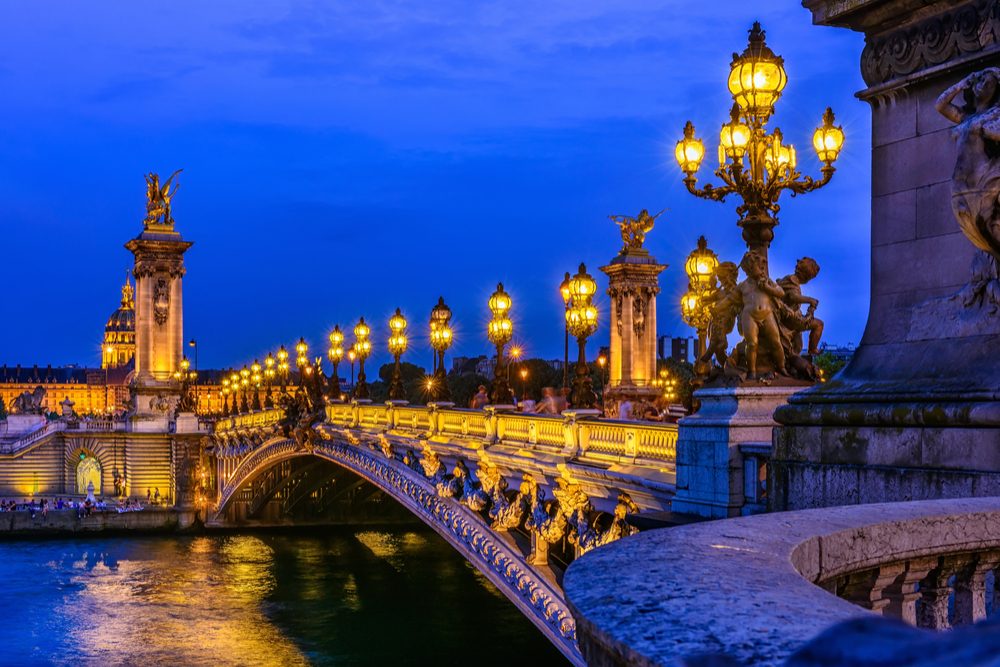
River Seine in Paris, France. Photo: Shutterstock
“I wanted to make the most of a short trip to Paris to celebrate my wife’s birthday and to present her with the diamond ring she never got when we first got together 10 years ago. Jennifer made a variety of suggestions, and we decided I would surprise my wife with the ring in a renewal proposal aboard a private yacht. I had originally requested a Venetian boat, but at the last minute it had mechanical problems, rendering it unavailable. Jennifer quickly replaced it with Sophia Loren’s private yacht and assured me that the furnishings and seating would be altered to make it more intimate and romantic. The result was spot-on, resulting in the highlight of our trip.” —William Harwayne
Read more reviews of Paris trips. To get your own WOW trip, start with our trip questionnaire, reached via the black button below.
START A TRIP TO PARIS
10th Anniversary trip to Italy: “Our private boat captain picked us up in Capri, toured us around the island, let us swim in the grottos, and eventually dropped us off for the rest of our stay in Positano…”
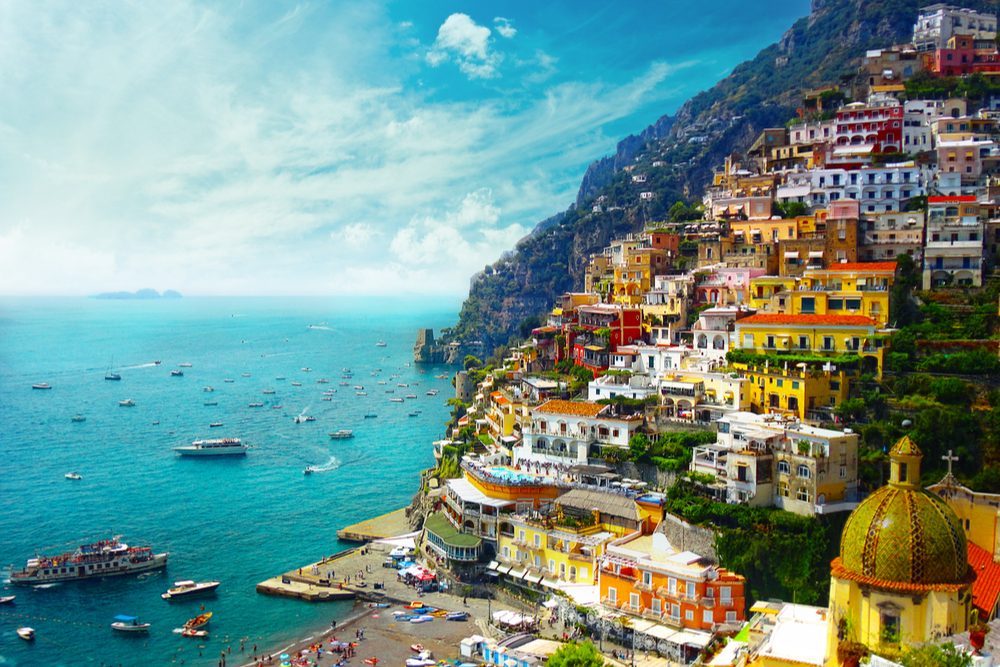
Positano on the Amalfi Coast, Italy. Photo: Shutterstock
“My husband and I rarely use a travel agent because we love to do the research and plan every detail of our vacations. However, this trip to Capri and the Amalfi Coast was for our 10-year wedding anniversary, so we wanted the ultimate luxury experience without having to worry about anything. Andrea really listened to what we wanted and tailored the trip accordingly. And there wasn’t a minute of it that went by that my husband and I didn’t think, ‘This was worth every penny and more.’ From the knowledgeable drivers to awesome tour guides and boat captains, it was beyond perfect. Our favorite day of the trip, and arguably in our lives, was when our private boat captain picked us up in Capri, toured us around the island, let us swim in the grottos, and eventually dropped us off for the rest of our stay in Positano. The views were stunning, but the captain really made our experience so special. Andrea has the connections with all of the right people, which makes the entire experience unlike any other.” —Meredith Still
Read more reviews of Capri and The Amalfi Coast trips. To get your own WOW trip, start with our trip questionnaire, reached via the black button below.
START A TRIP TO CAPRI AND THE AMALFI COAST
Hawaii: “A sunrise visit to the top of Mt. Haleakalā and a subsequent bike ride down, surfing lessons in Lahaina, a helicopter tour of the Big Island…”
“We used Dani’s help to put together our trip to Maui and the Big Island of Hawaii. It was a great trip packed with hiking, a sunrise visit to the top of Mt. Haleakalā and a subsequent bike ride down, surfing lessons in Lahaina, and a helicopter tour of the Big Island, including the active volcano. Dani was in constant contact with us throughout, which was greatly appreciated, as we had questions about various things while we were there. We had mentioned this trip was a celebration of our wedding anniversary, and at both of our hotels there was chilled champagne and sweet treats, courtesy of Dani. She even managed to snag us an upgrade to a suite at the Four Seasons Hualalai, which was a pleasant surprise.” —Joseph McBrine
Read more reviews of Hawaii trips. To get your own WOW trip, start with our trip questionnaire, reached via the black button below.
START A TRIP TO HAWAII
60th Anniversary cruise in the Caribbean: “We were a family of 10 traveling for my parents’ 60th wedding anniversary…”
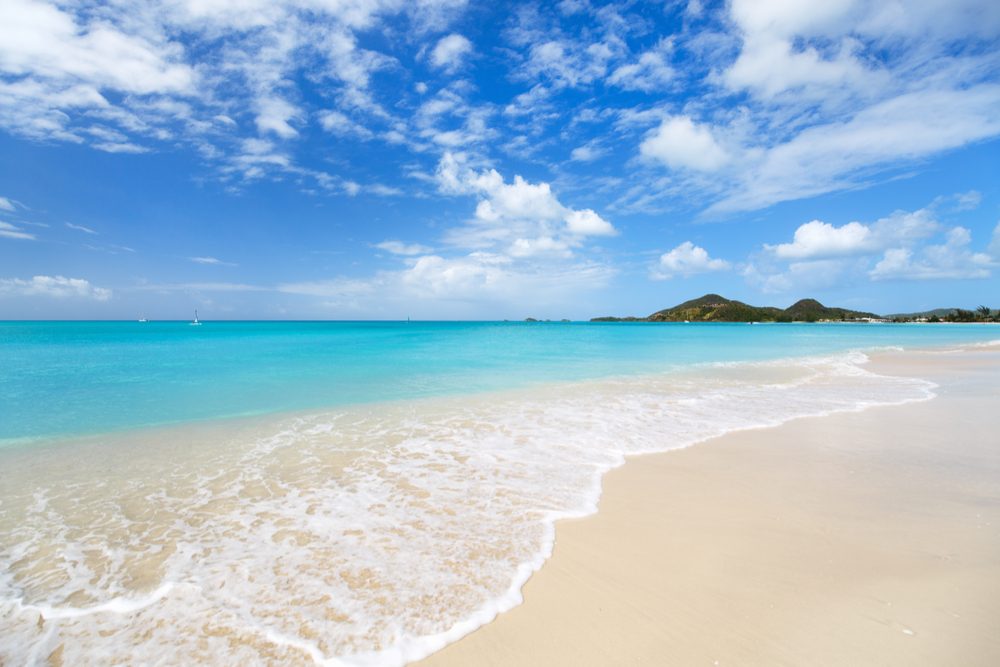
An empty beach on Antigua. Photo: Shutterstock
“We were a family of 10 traveling for my parents’ 60th wedding anniversary. We had first-time cruisers and seasoned cruisers, and we wanted an itinerary that would enable us to spend time together as well as enjoy personal time. For our specific needs, Tom suggested Celebrity Cruises, and we selected an itinerary in the ‘ABC islands’ with several days at sea. Everyone was very happy. Both the sea days and the days in port offered everyone enough sightseeing, shopping, and relaxation options to keep as busy (or not) as we wanted. Some of us went to the beach, while others went to town and sightseeing. We all met for cocktails in the Martini Bar before our family dinner each night. It was a fun and successful cruise for everyone, and my parents especially appreciated the special touches that Tom provided—including champagne, flowers, and a delicious chocolate cake in their cabin.” —Lorraine Victor
Read more reviews of cruise trips. To get your own WOW trip, start with our trip questionnaire, reached via the black button below.
START A CRUISE EXPERIENCE
Be a smarter traveler: Sign up for Wendy’s weekly newsletter to stay in the know. Read real travelers’ reviews, then use the black CONTACT buttons on Wendy’s WOW List to reach out to the right local fixer for your trip.

